Mission “Chang'e-4” - the fifth lunar day for the landing module and rover “Yuytu-2”
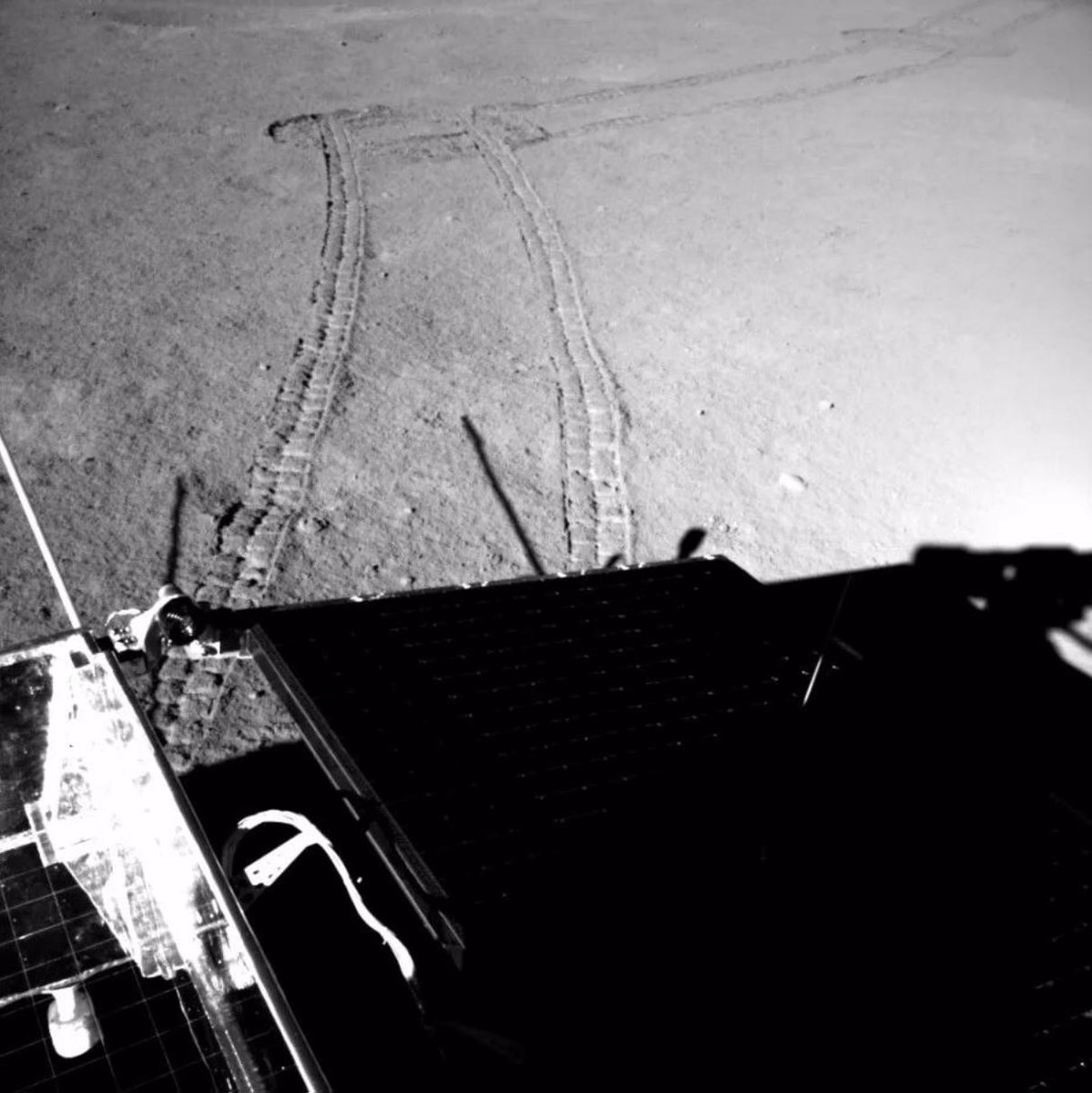
The fifth earthly month of work began on the far side of the Moon of the Chang'e-4 landing module and the Yuuta-2 rover.
Both vehicles successfully survived the cold fourth lunar night, now they have come out of sleep mode, starting to continue their research on the complex surface of the back side of the Moon and the surrounding outer space.
')
New photos of the far side of the moon, moments of launch and landing mission.
Attention, there are many pictures inside the publication.
Previously published materials about the mission "Chang'e-4":
1. The spacecraft "Chang'e-4" made a successful landing on the far side of the moon and sent the first photo
2. On-board video of the processes of preparation and landing, as well as a panorama of the far side of the Moon from Chang'e-4
3. Video of the descent of the rover "Yuytu-2", its first meters on the surface of the moon. Two week sleep on the moon is over
4. Pride and Passion, the story of turning a dream into a space project
5. NASA lunar orbital probe made the first pictures of the China Chang'e-4 station - two pixels of light
6. Module "Chang'e-4" and rover "Yuytu-2" are ready for the second night on the far side of the moon
7. NASA lunar orbital probe made new images of the China Chang'e-4 station - closer and clearer
8. Interesting facts about the history of the Chinese lunar program and the Chang'e-4 space mission
9. The Chang'e-4 mission is the third lunar day. Rover "Yuytu-2" in search of ... stones
10. The mission “Chang'e-4” - scientific equipment on the landing module and the satellite transponder
11. The Chang'e-4 mission is the fourth lunar day for the landing module and the Yuuta-2 rover. Pro cameras and controllers on devices
1. The spacecraft "Chang'e-4" made a successful landing on the far side of the moon and sent the first photo
2. On-board video of the processes of preparation and landing, as well as a panorama of the far side of the Moon from Chang'e-4
3. Video of the descent of the rover "Yuytu-2", its first meters on the surface of the moon. Two week sleep on the moon is over
4. Pride and Passion, the story of turning a dream into a space project
5. NASA lunar orbital probe made the first pictures of the China Chang'e-4 station - two pixels of light
6. Module "Chang'e-4" and rover "Yuytu-2" are ready for the second night on the far side of the moon
7. NASA lunar orbital probe made new images of the China Chang'e-4 station - closer and clearer
8. Interesting facts about the history of the Chinese lunar program and the Chang'e-4 space mission
9. The Chang'e-4 mission is the third lunar day. Rover "Yuytu-2" in search of ... stones
10. The mission “Chang'e-4” - scientific equipment on the landing module and the satellite transponder
11. The Chang'e-4 mission is the fourth lunar day for the landing module and the Yuuta-2 rover. Pro cameras and controllers on devices
The Yuuta-2 rover came out of sleep mode on the morning of April 28, 2019, on the evening of April 28, the Chang'e-4 landing module also awoke, and both vehicles began their fifth day shift on the Moon.
At night, on the back of the Moon, according to the sensors of the Chang'e-4 modules, the temperature on the lunar surface drops (minimum) to minus 190 degrees Celsius.
Thermal blocks developed at the Russian Federal Nuclear Center (VNII Experimental Physics (VNIIEF)) are the heating modules of the “Chang'e-4” during the lunar night. These are radiation sources of heat (RHS) and radioisotope sources of electricity (RTG) designed to supply the Chinese lunar mission.
Data on the project and modules of the lunar mission "Chang'e-4":
May 21, 2018: The Tseyuqiao satellite relay (Forty Bridge) was launched from the Xichang Cosmodrome Chinese Cosmodrome, it is necessary for organizing the connection between the Earth and the far side of the Moon.
June 14, 2018: The Tseuqiao satellite relay went into halo orbit around the Earth-Luna Lagrange point L2, approximately 65,000 km from the Moon, becoming the world's first communications satellite operating in this orbit.
December 8, 2018: The Changzheng-3B launch vehicle with the Chang'e-4 station was successfully launched from the Xichang Chinese cosmodrome.
January 3, 2019: the Chang'e-4 descent vehicle lands in the Pocket crater on the far side of the Moon. The Chang'e-4 landing gear includes the second Chinese moon rover, Yuytu-2, a modernized version of the Yuytu rover. The missions of the Chang'e-4 mission are now continuing to operate normally.
Video of the landing procedure on the reverse side of the moon:
After the completion of all stages of the successful landing procedure and the installation of independent communication channels with the Chang'e-4 vehicles (the landing module and the rover), the era of exploration of the far side of the moon began.
Video of the descent of the rover "Yuytu-2":
Travel video of the “Yuytu-2” rover:
Chang'e-4 descent module:
- 4.4 meters between the opposite landing supports, weight 1200 kg .;
- work duration: one earth year.
Installed devices:
- LFS - Low Frequency Spectrometer (low-frequency spectrometer);
- LND - Lunar Lander Neutrons and Dosimetry (neutron dosimeter);
- TCAM - Terrain Camera (landscape camera);
- LCAM - Landing Camera (landing camera).

Rover "Yuytu-2":
- height 1 meter, width 1 meter (without solar batteries), 1.5 meters in length, two folding solar panels, six wheels;
- the total mass of the rover is about 140 kg (310 pounds);
- capacity - about 20 kg (44 lbs);
- can move on slopes and has automatic sensors that prevent collisions with other objects;
- electricity rover is provided with two solar panels, allowing the rover to work during the lunar day;
- the maximum speed of 200 meters per hour (this speed on the Moon will not be reached anyway, since the elements on the surface will not allow acceleration and disable the rover earlier);
- The maximum study area is 3 square meters. km;
- estimated time of work - 3 months (2160 hours), the rover has already exceeded its service life;
- the maximum estimated distance is 10 km, 178.9 meters on the lunar surface for five months are now covered (1 place among the rovers on the far side of the moon, the sixth place among all lunar rovers), the table of the distance of the rovers is shown here ;
- control mode: automatic (detour of small obstacles), manual (main) - the operator controls from the Earth.
Installed devices:
- LPR - Lunar Penetrating Radar;
- ASAN - Advanced Small Analyzer for Neutrals (small analyzer of neutral particles);
- VNIS - Visible and Near-Infrared Imaging Spectrometer (infrared spectrometer);
- PCAM - Panoramic Camera (dual panoramic camera).
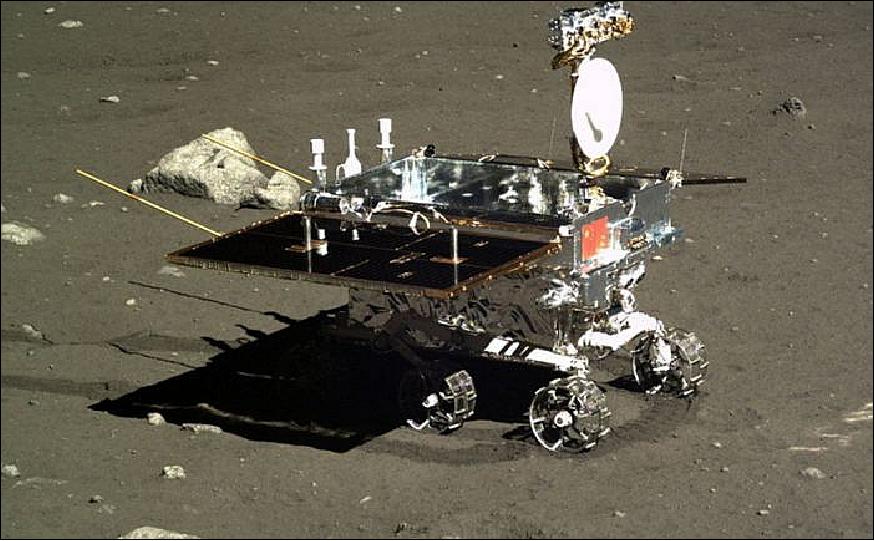
Photo of the rover on Earth:

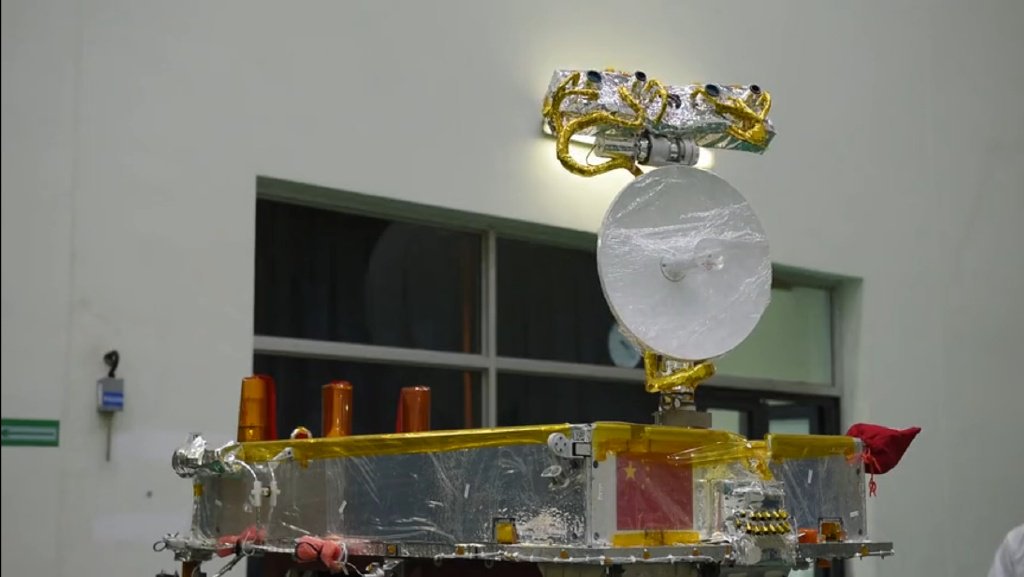
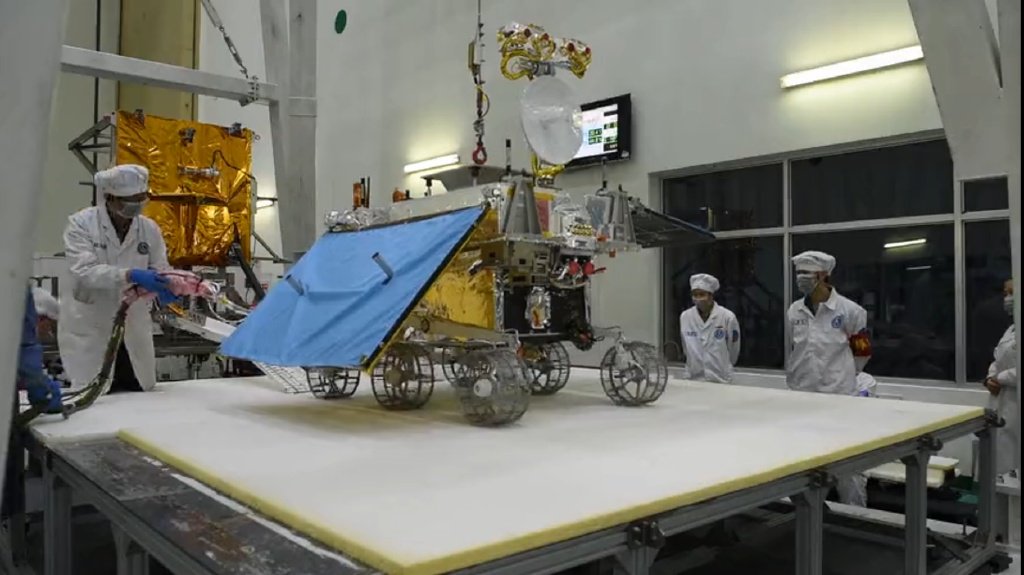
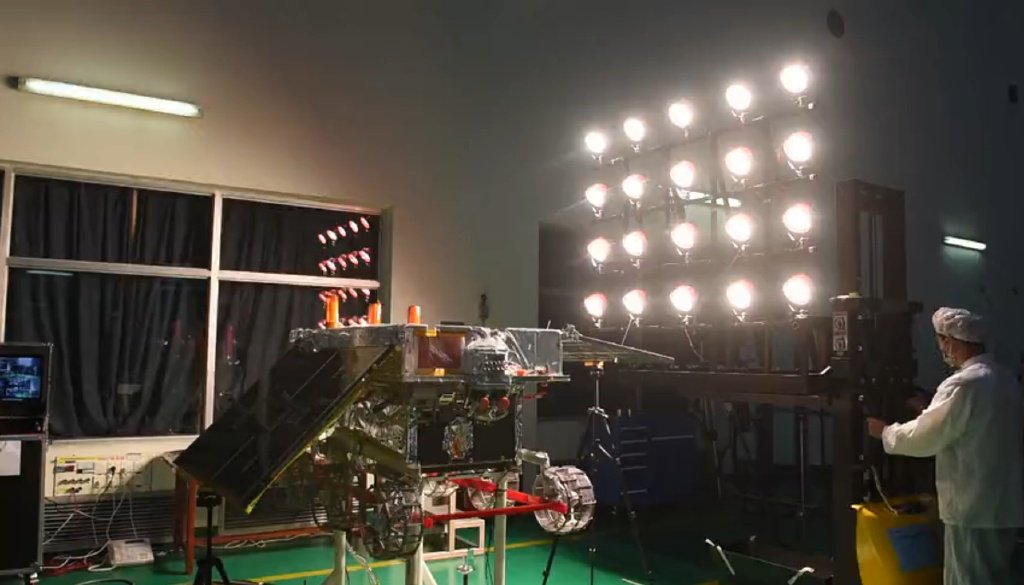
The Tseutqiao repeater satellite (triage bridge), launched on May 21, 2018, operates in a halo-orbit around a special gravitationally stable Lagrange point Earth-Moon L2, from which it can maintain direct visibility with the Earth and the lunar back side at any time for data exchange between the PMU and modules of the Chang'e-4 project.
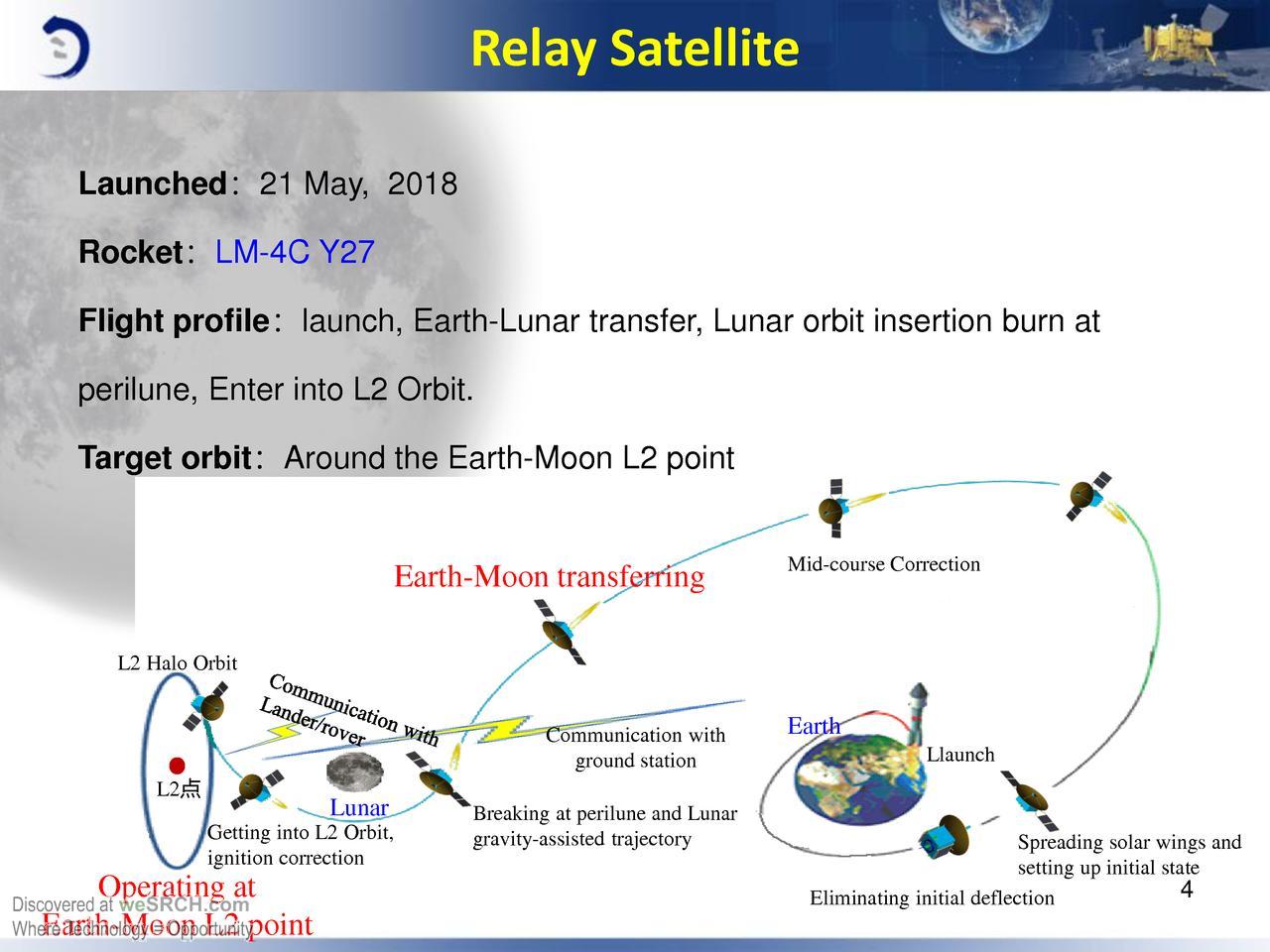
Also on the Tseutsyao satellite relay, a low-frequency spectrometer (relay LFS) with three five-meter antennas is installed, with the help of which the low-frequency radio emission of the early Universe is recorded, which allows studying its structure.
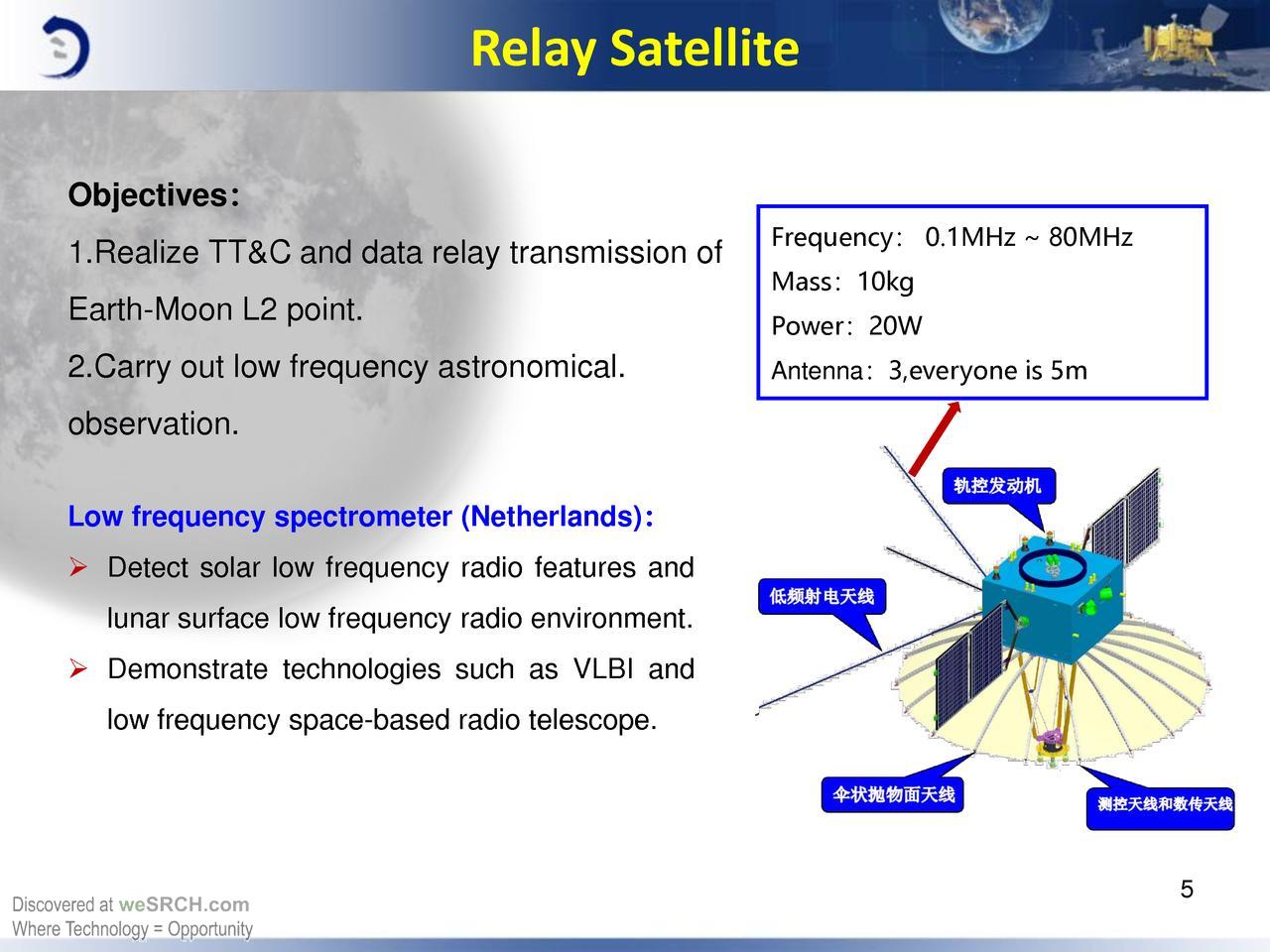
The reverse side of the moon has a more complex relief than the side visible from the earth. The lunar surface in the landing zone of the Chang'e-4 landing module abounds in folds, numerous pebbles and small craters.
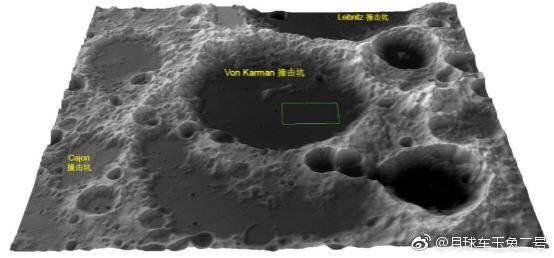
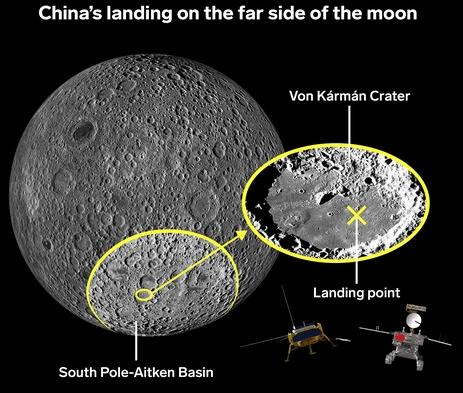
Topographic photograph of the landing zone in the Pocket crater of the far side of the moon of the Chang'e-4 descent module (made by LRO probe, NASA):
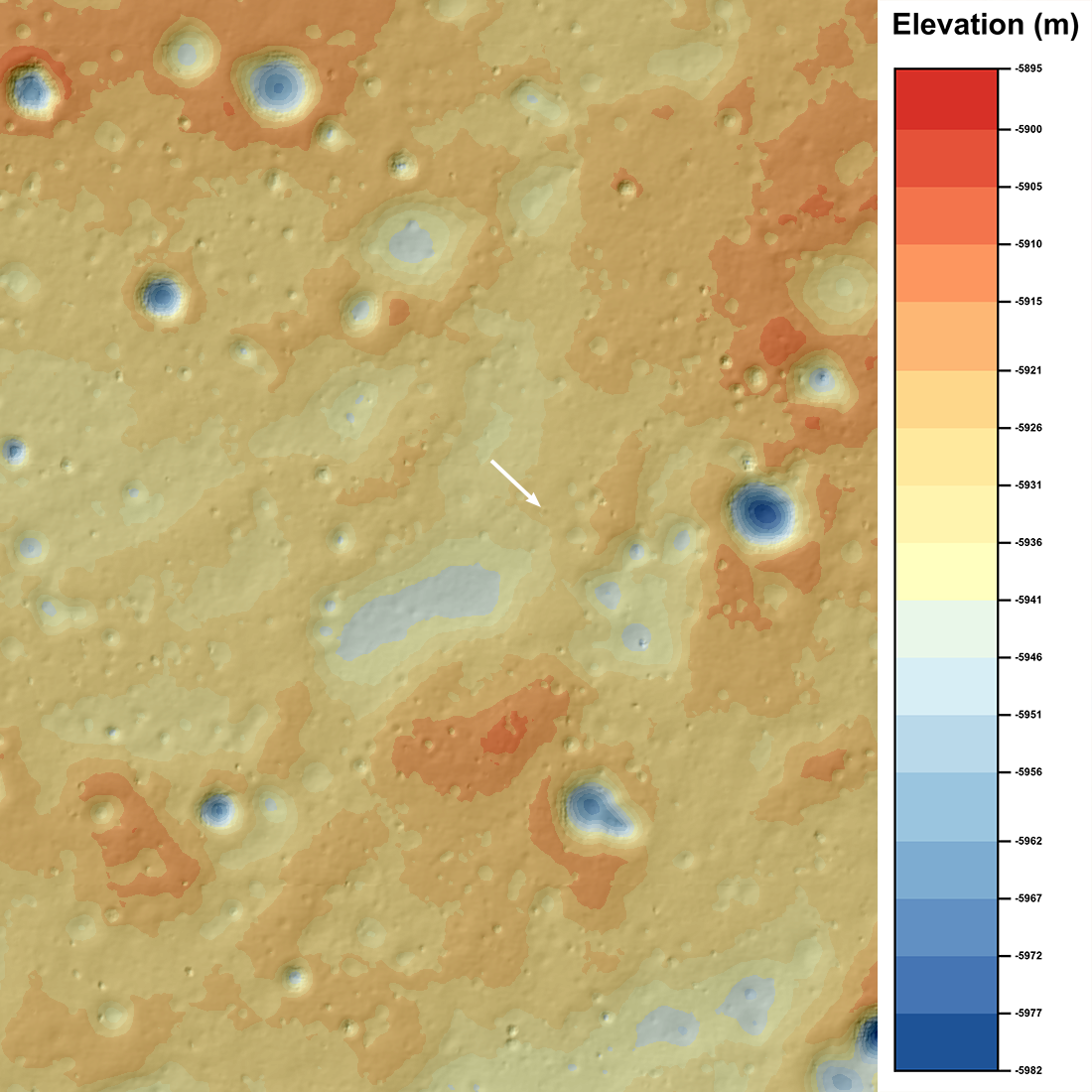
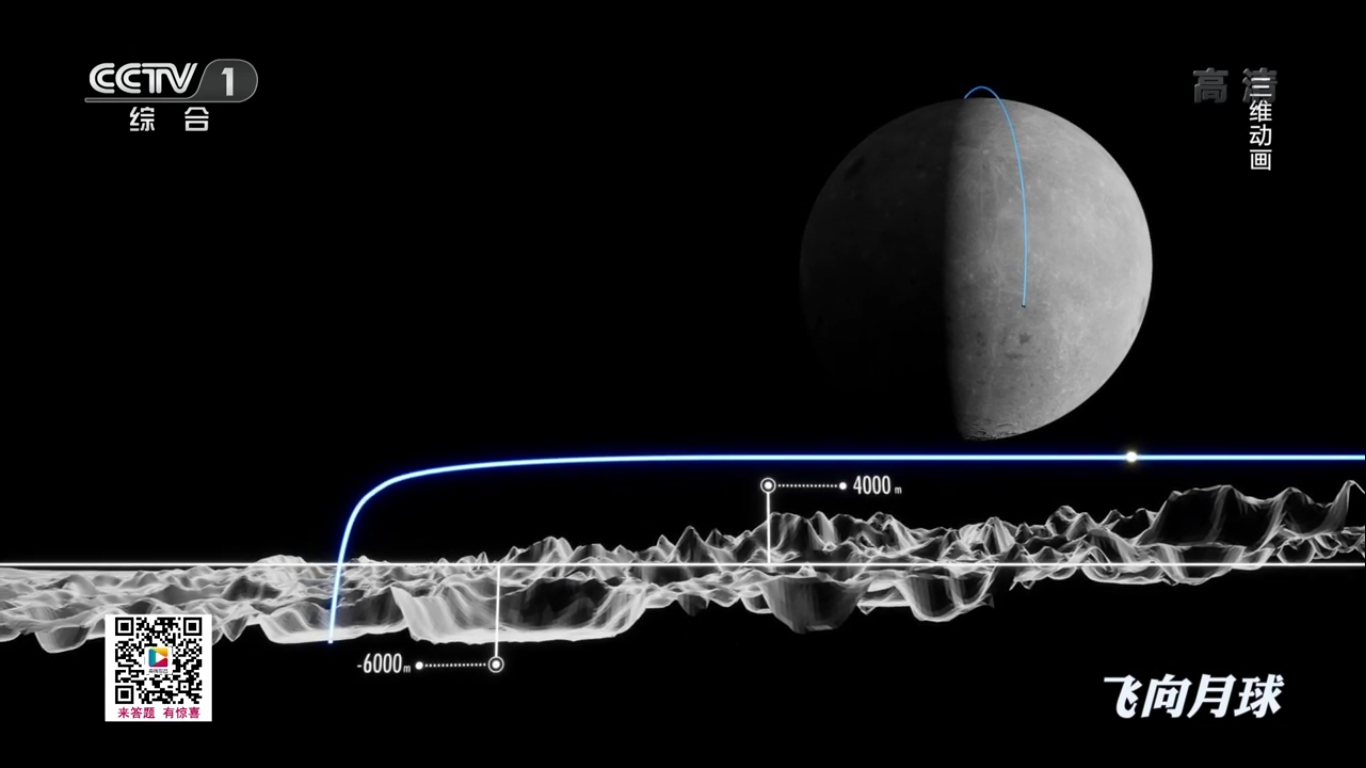

New photos of the lunar surface from the cameras of the landing module "Chang'e-4" and the rover "Yuytu-2".
Very lonely landing module "Chang'e-4":

Traces of the “Yuytu-2” rover .:
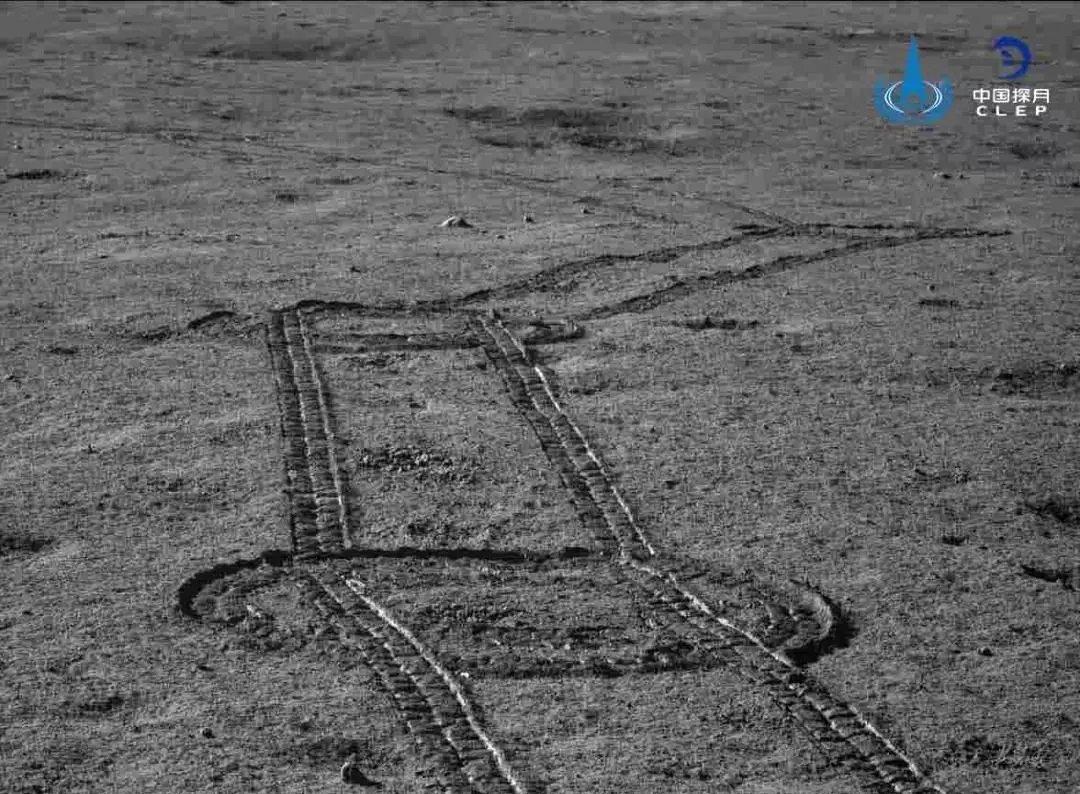

The surface of the far side of the moon:
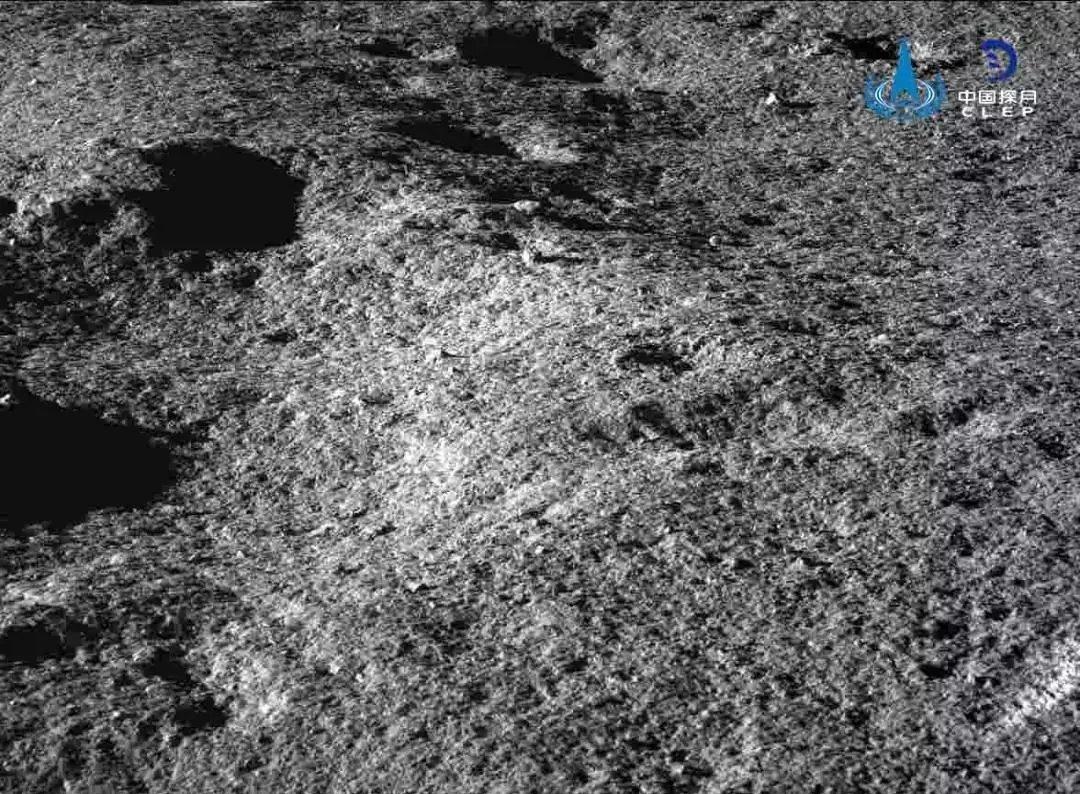
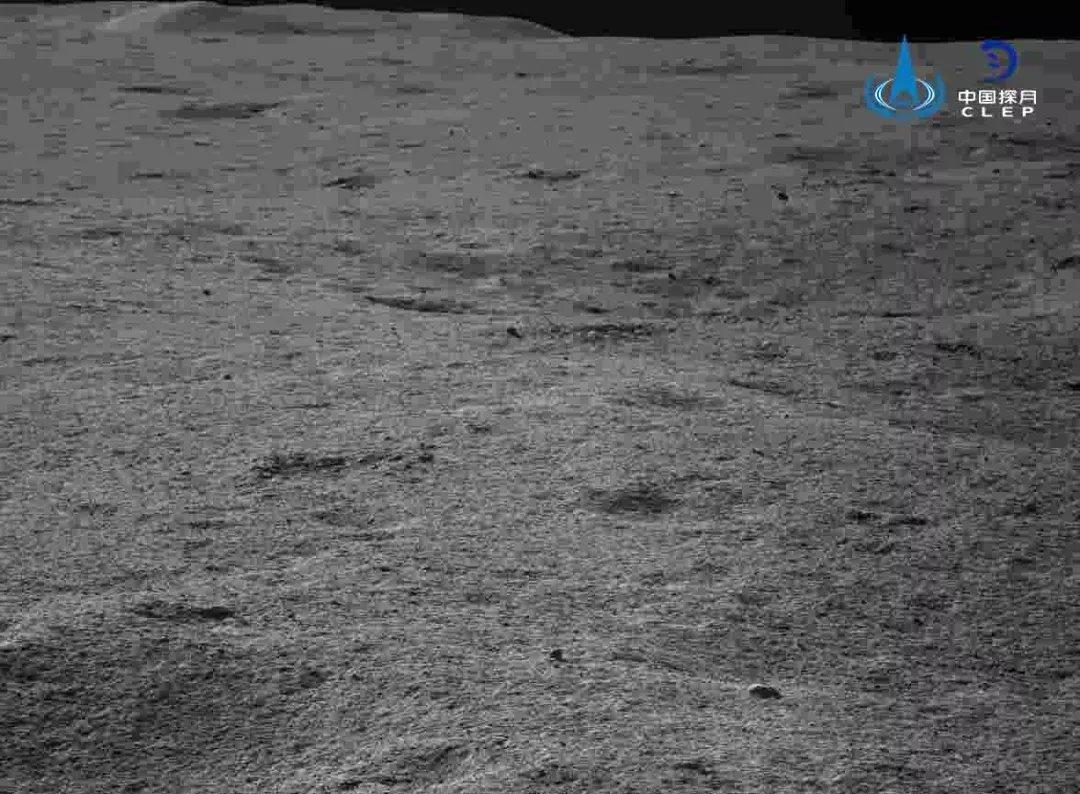

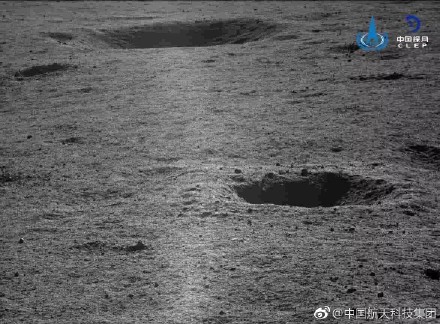
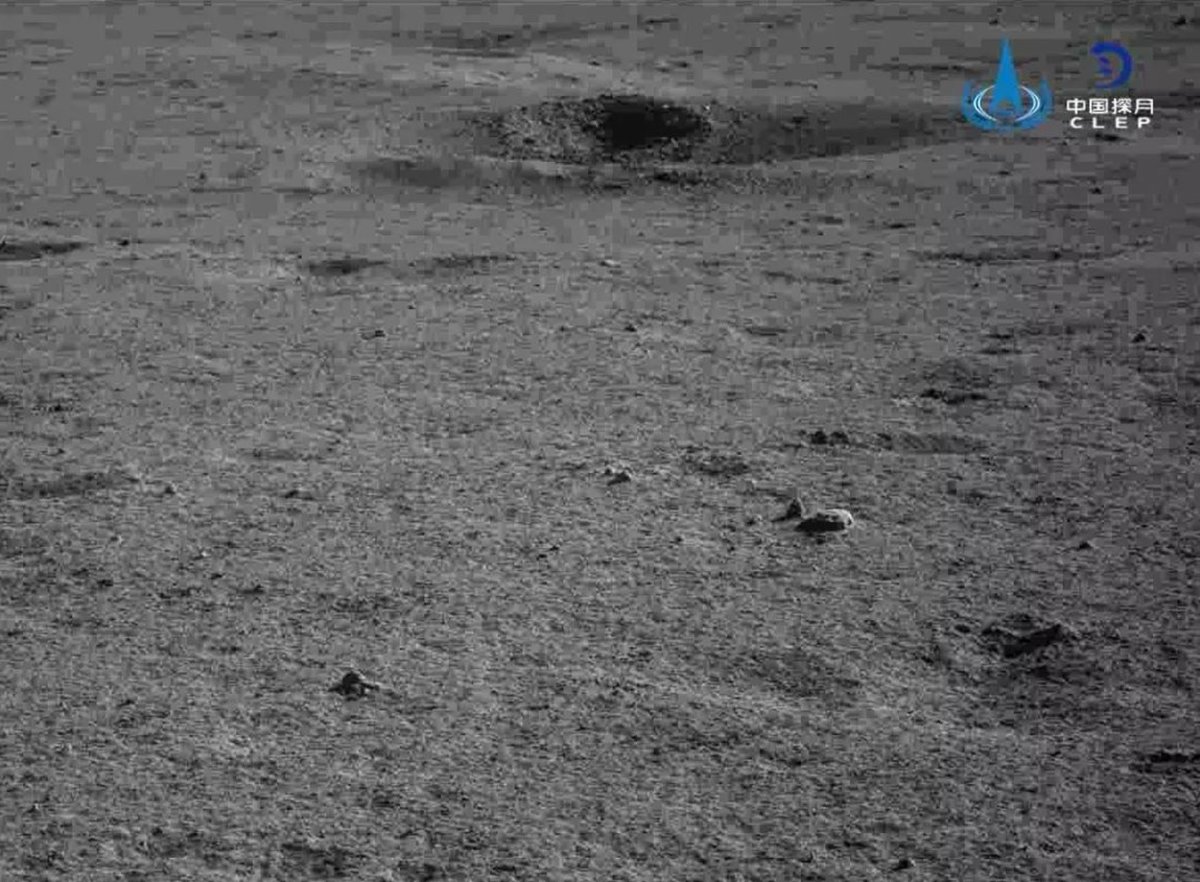

Previously sent photographs of the surface of the far side of the moon to Earth:
Moon track from the wheels of the “Yuytu-2” rover and the shadow from the antenna and the platform with a panoramic camera:
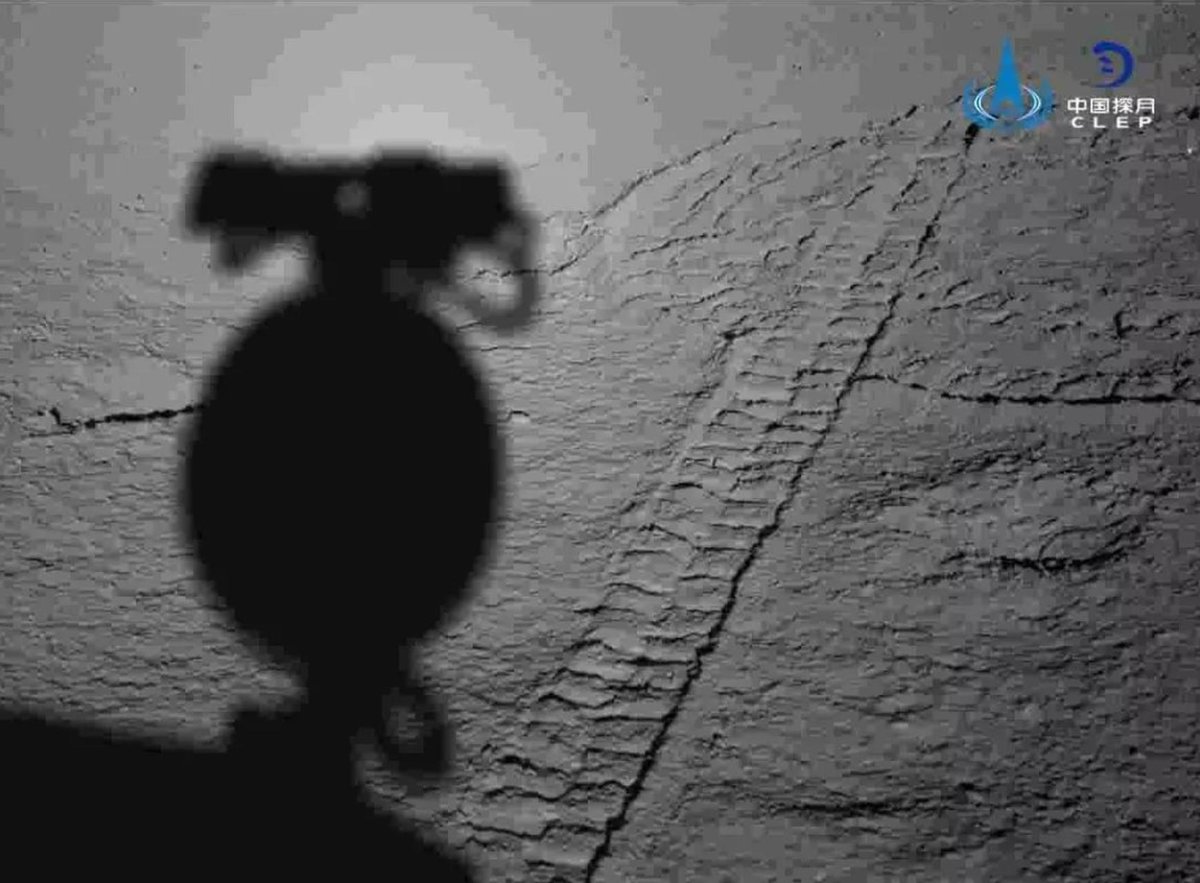
Several craters (with shadows beautifully) and mountains in the background:

But these photos from the scientific article "Lunar farside to be explored by Chang'e-4" April issue of the journal Nature Geoscience.

Small craters near the landing site:
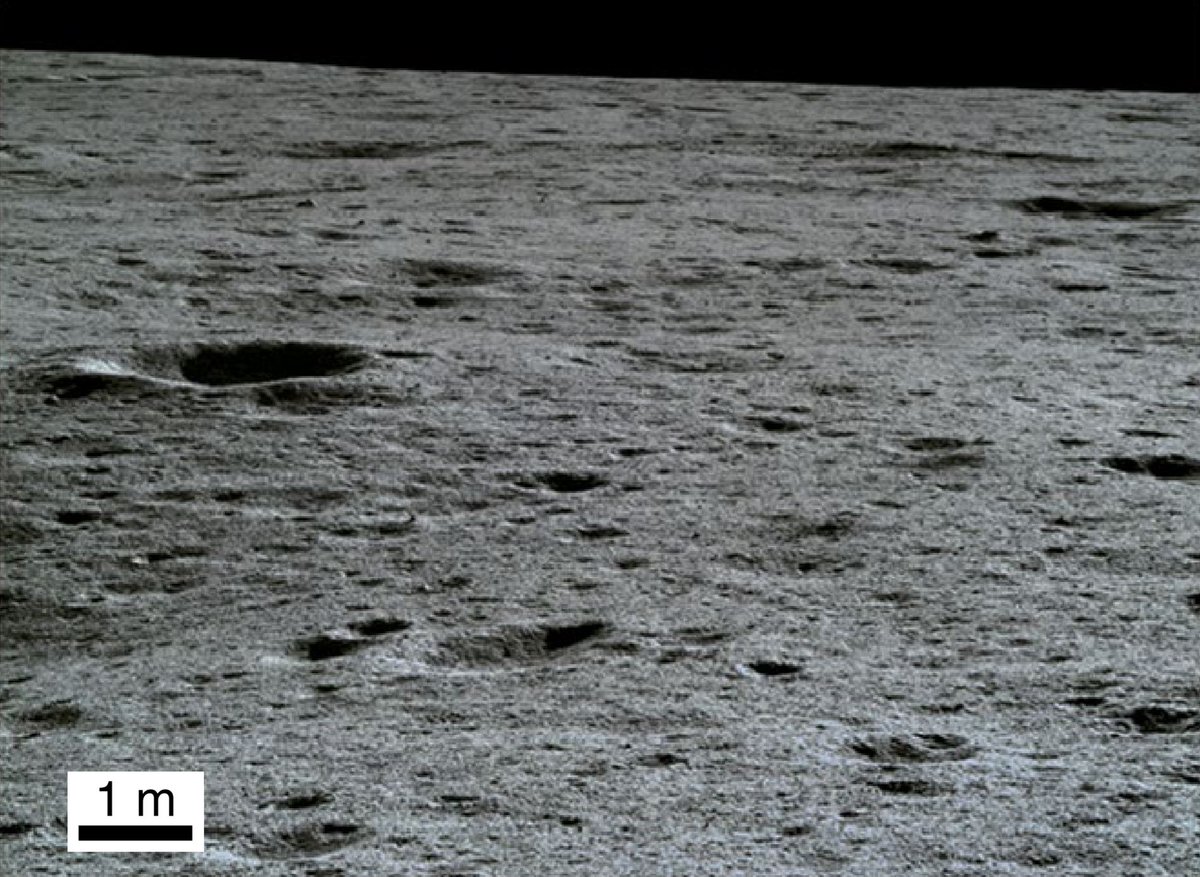

Rover "Yuytu-2" explores the surface of the moon:
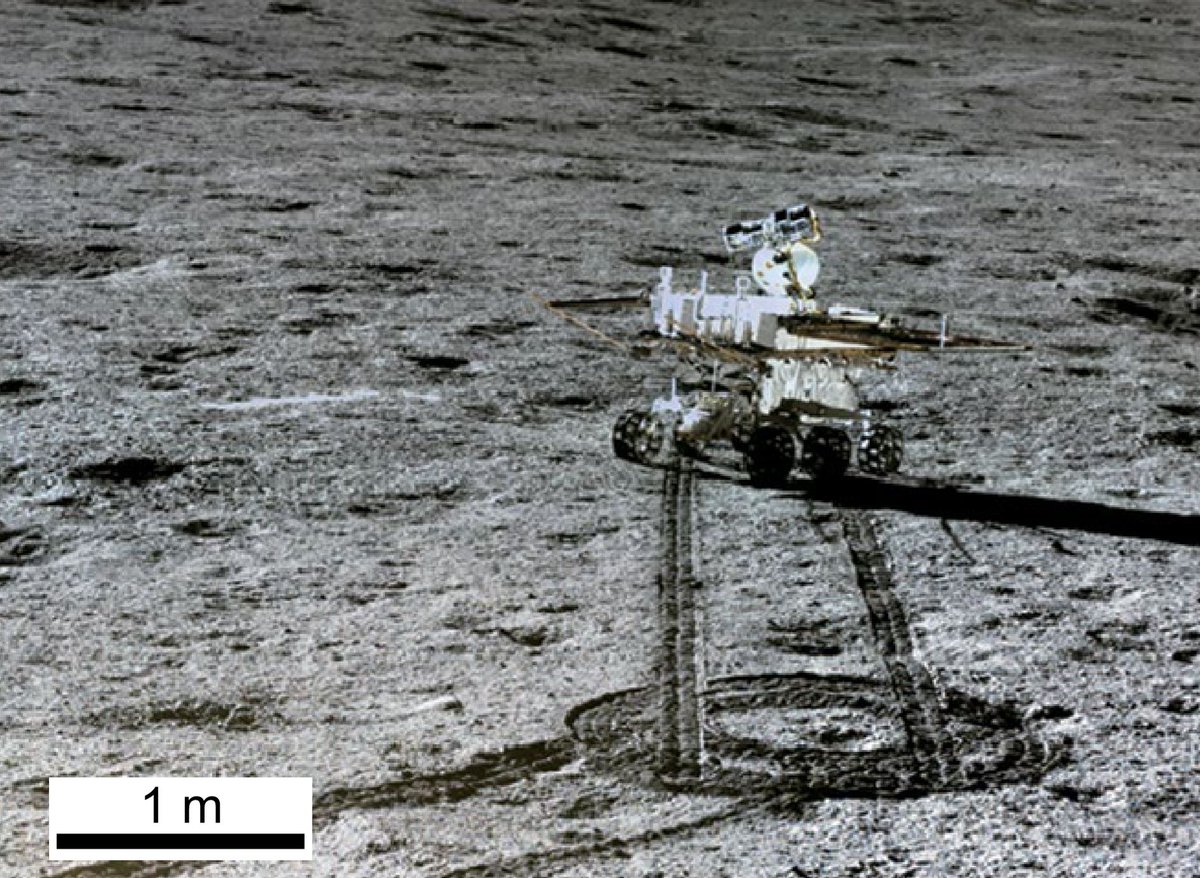
Fragments of stones in small craters (photo from the “Yuytu-2” rover):

Small stones in the direction of the rover "Yuytu-2":

Very unusual dark stones near the landing site:

Photos from cameras cameras:
Landing camera LCAM:



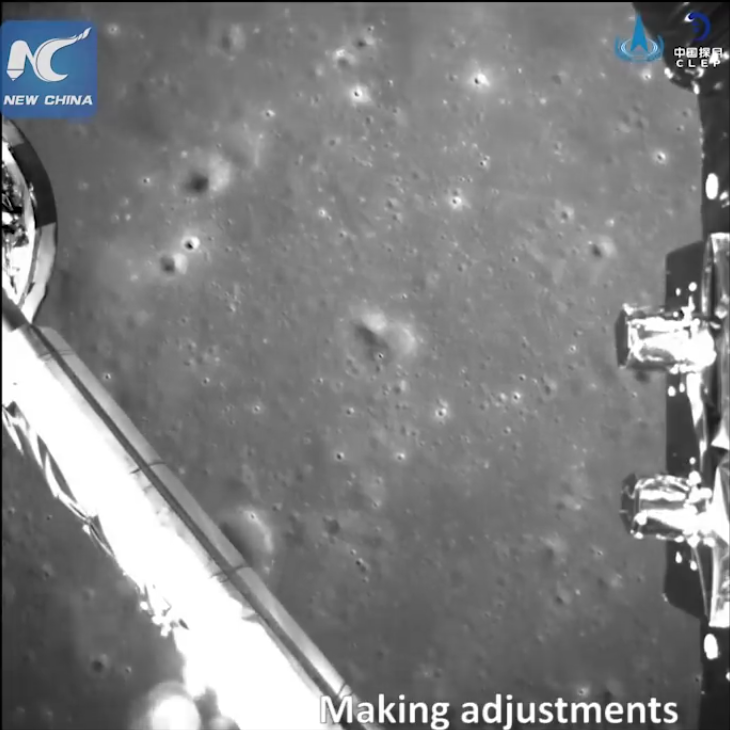










Terrain camera TCAM:

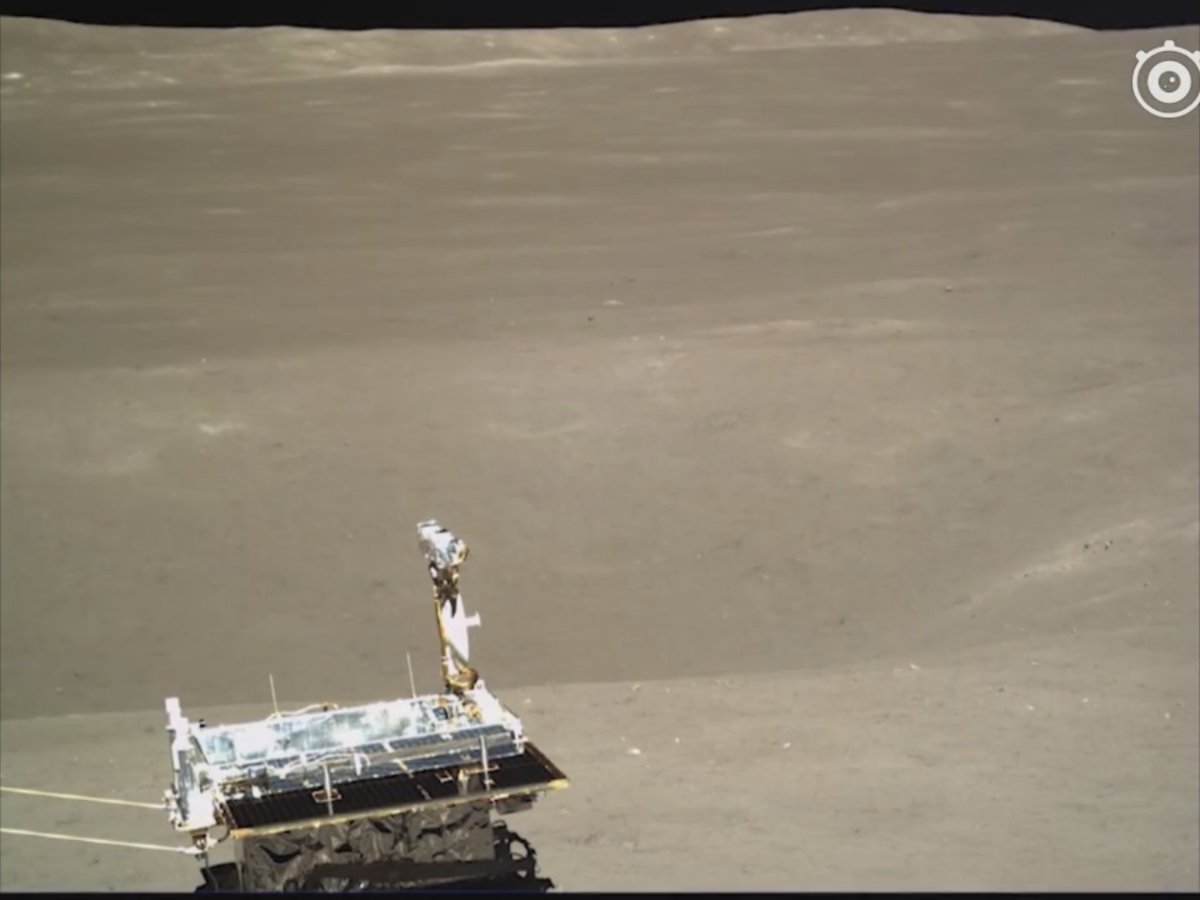
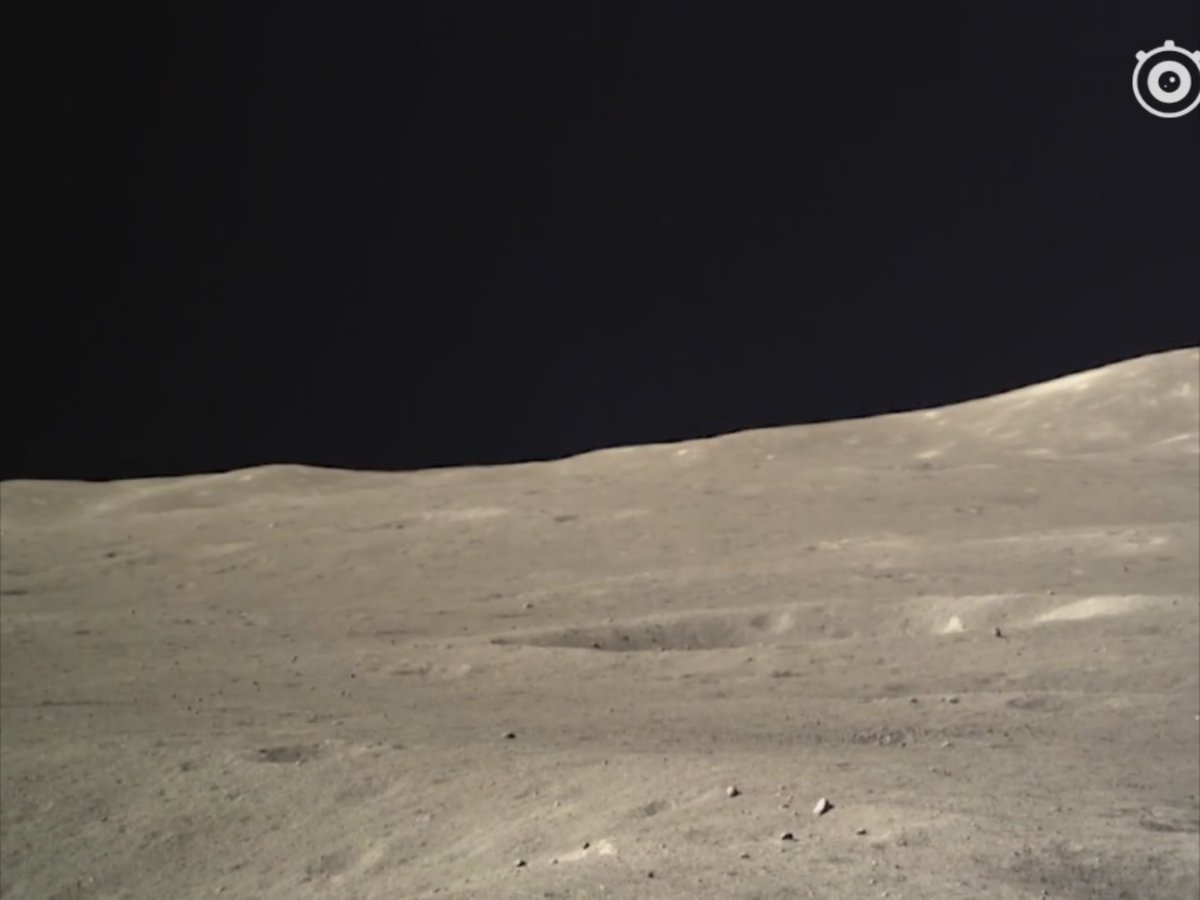

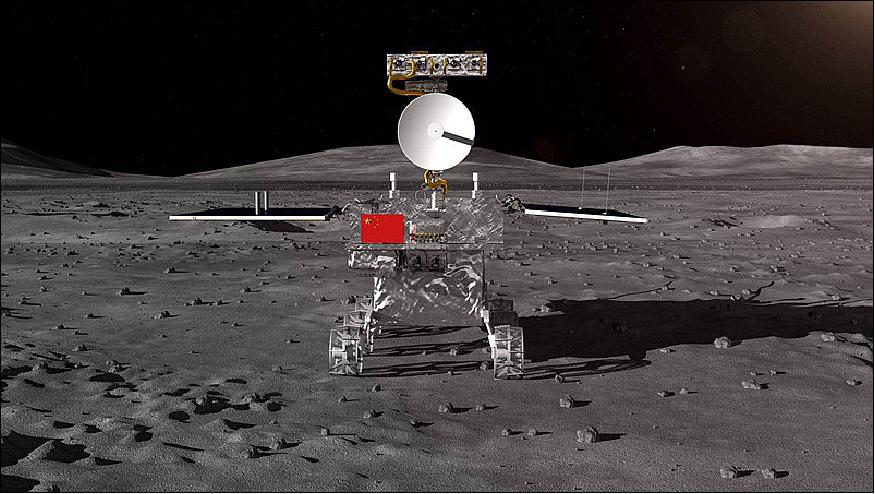

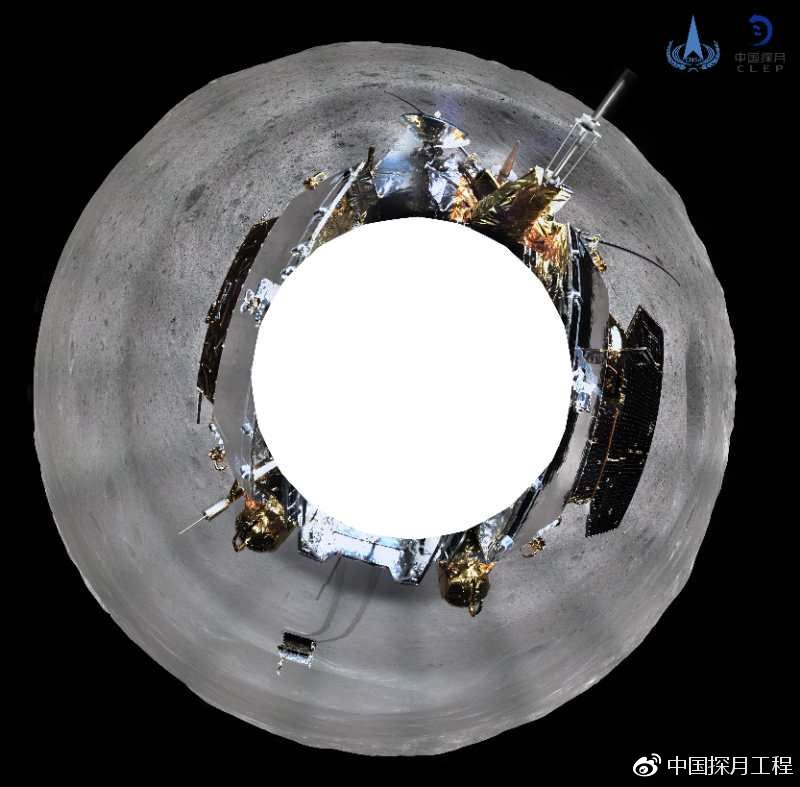





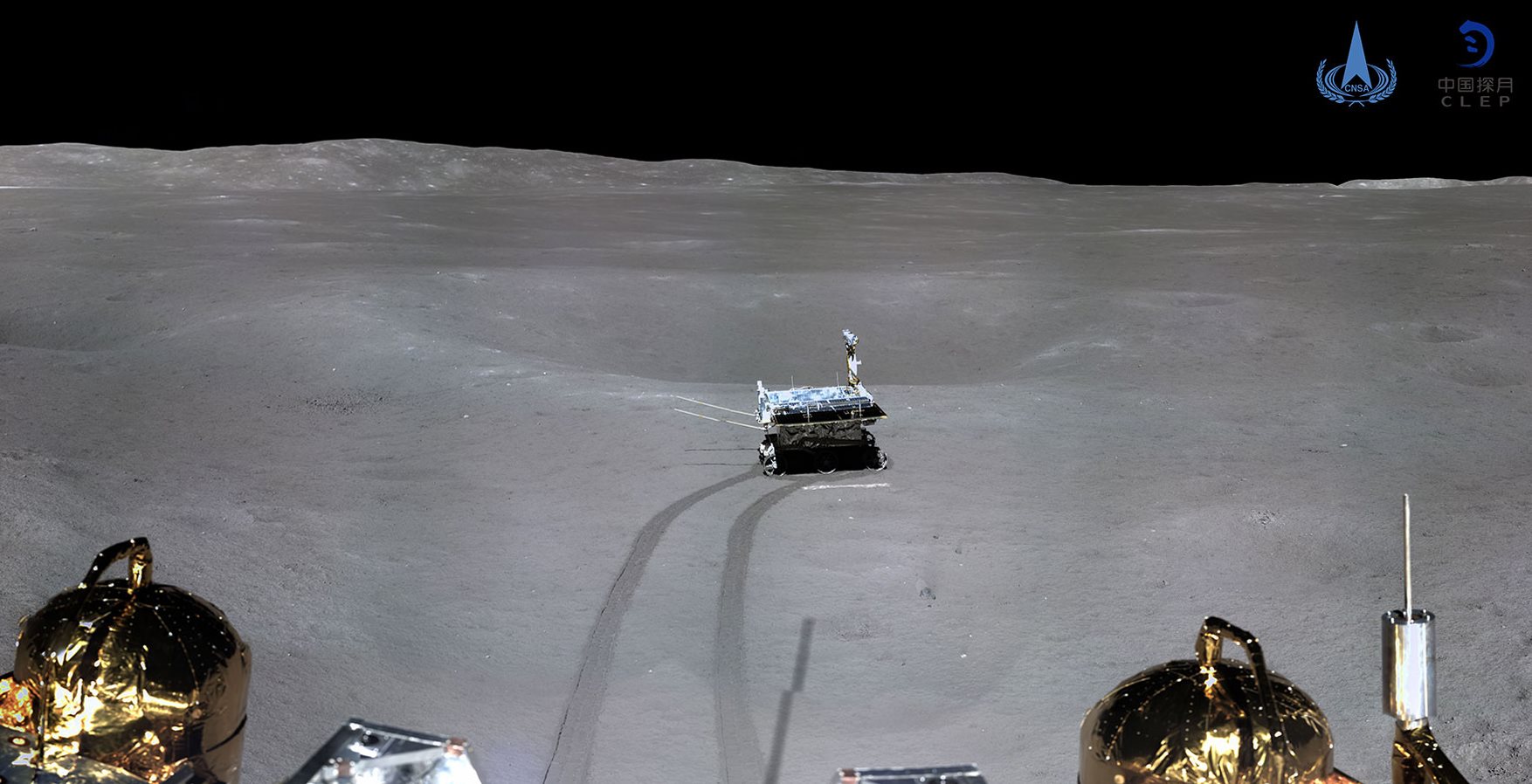













Panoramic camera PCAM (rover):
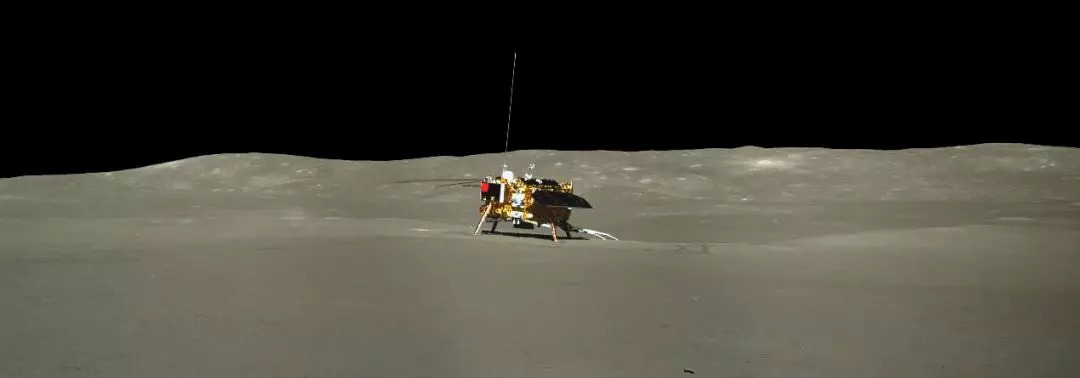
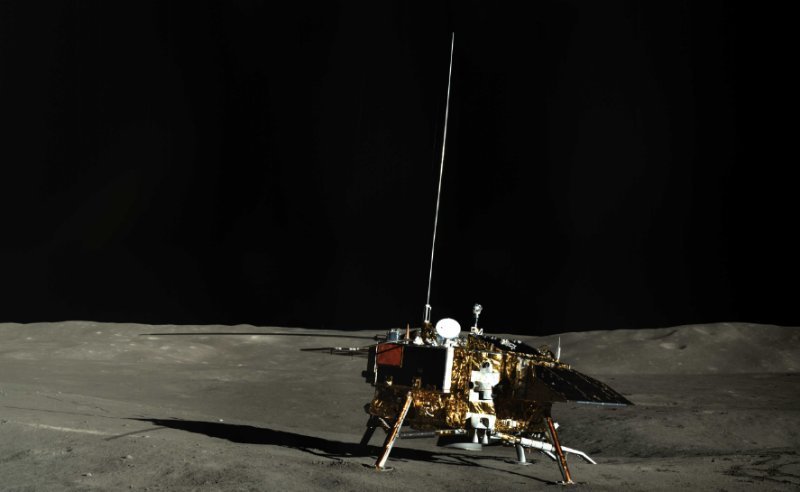






New moments in the history of the project "Chang'e-4"
December 8, 2018: The Changzheng-3B launch vehicle with a payload (Chang'e-4 station) was successfully launched from the Xichang Chinese cosmodrome.
Launch of the Changzheng-3B launch vehicle:

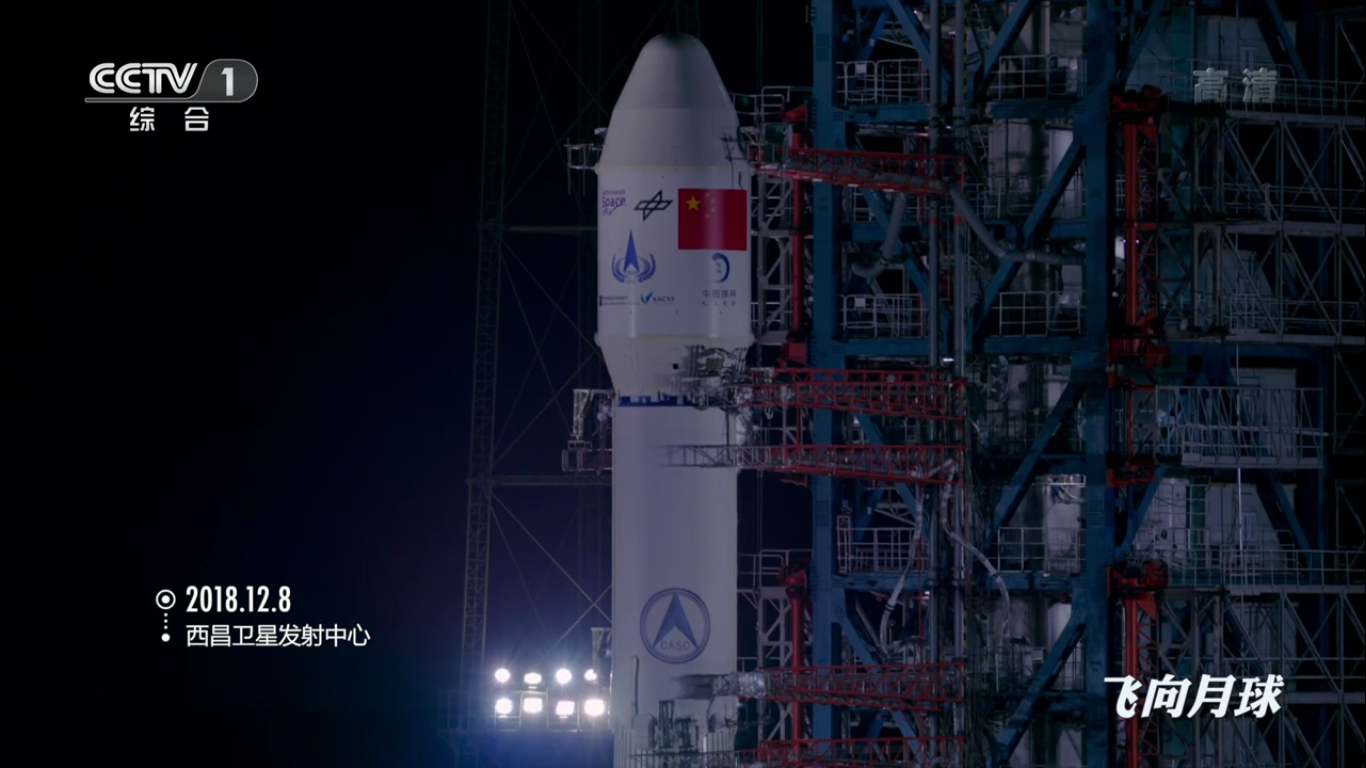
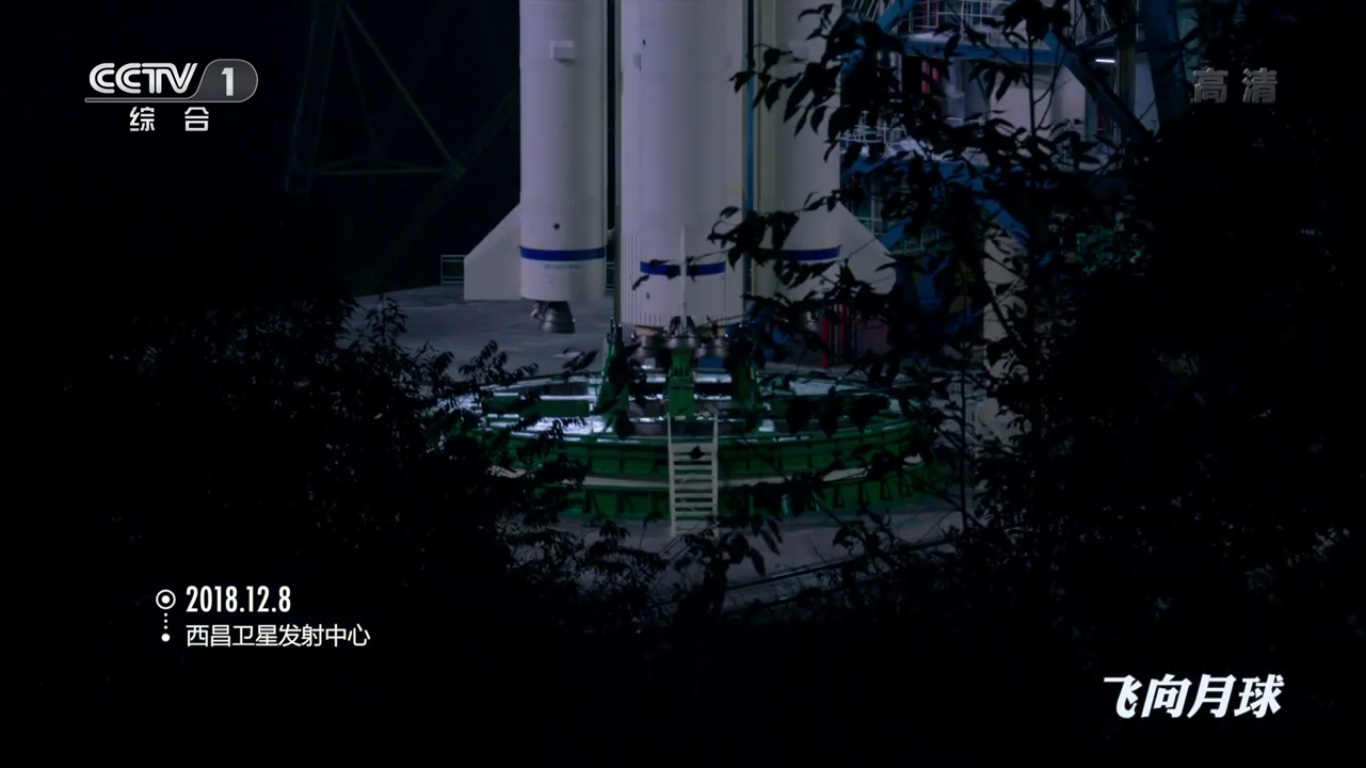
Countdown Finish:
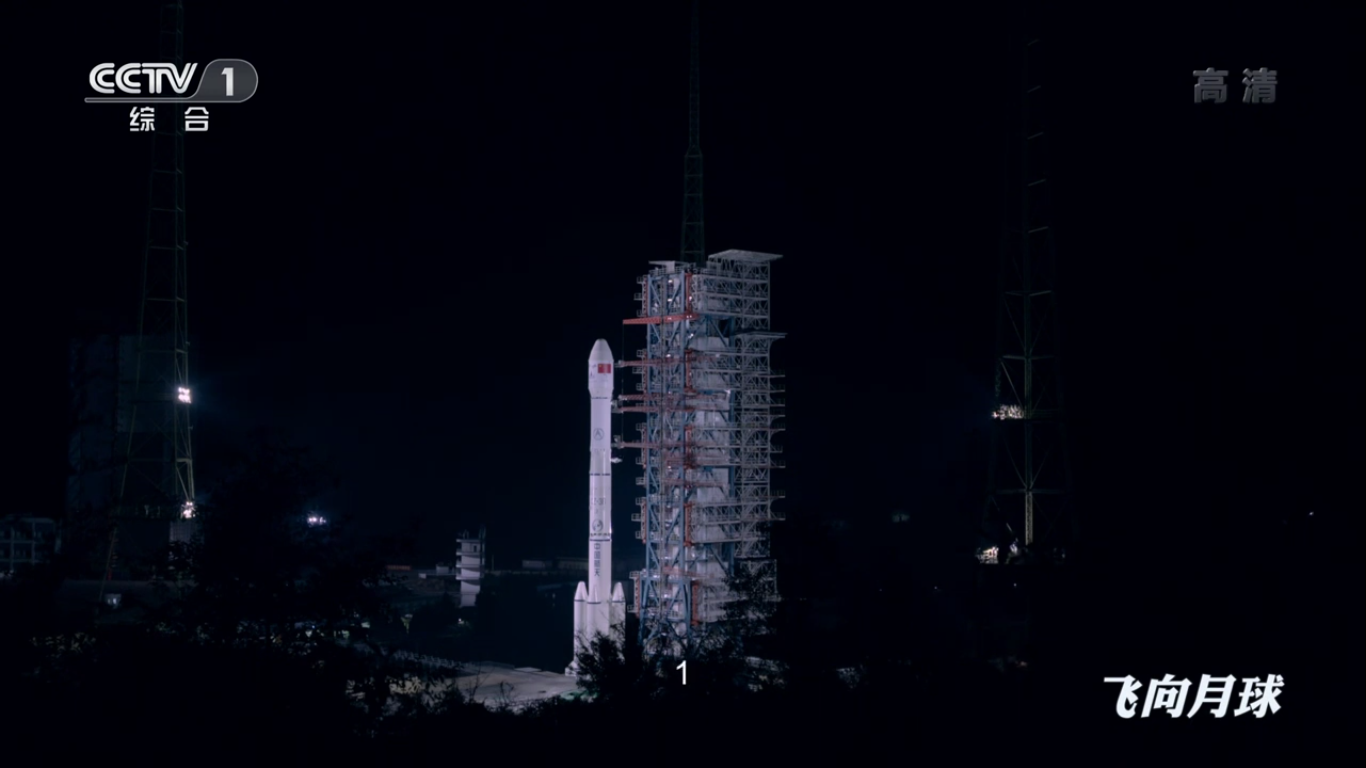
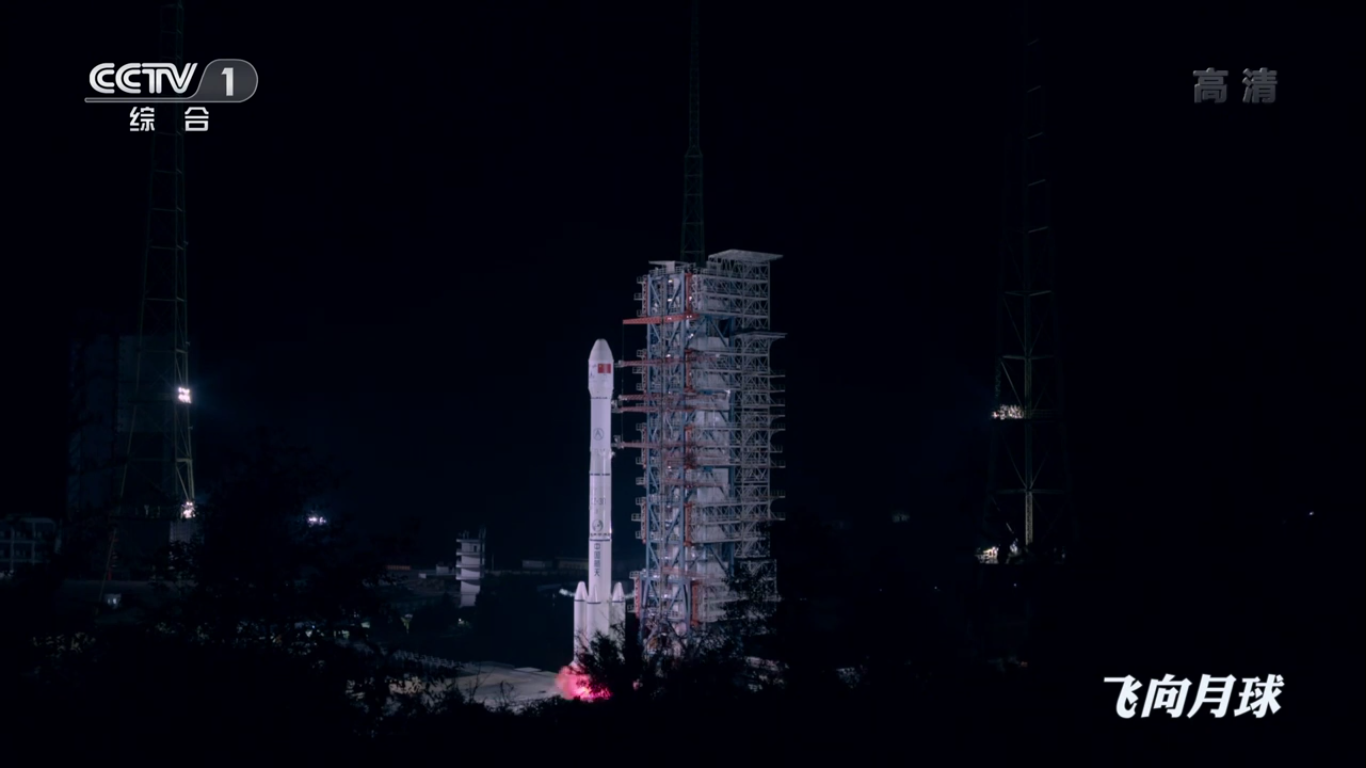
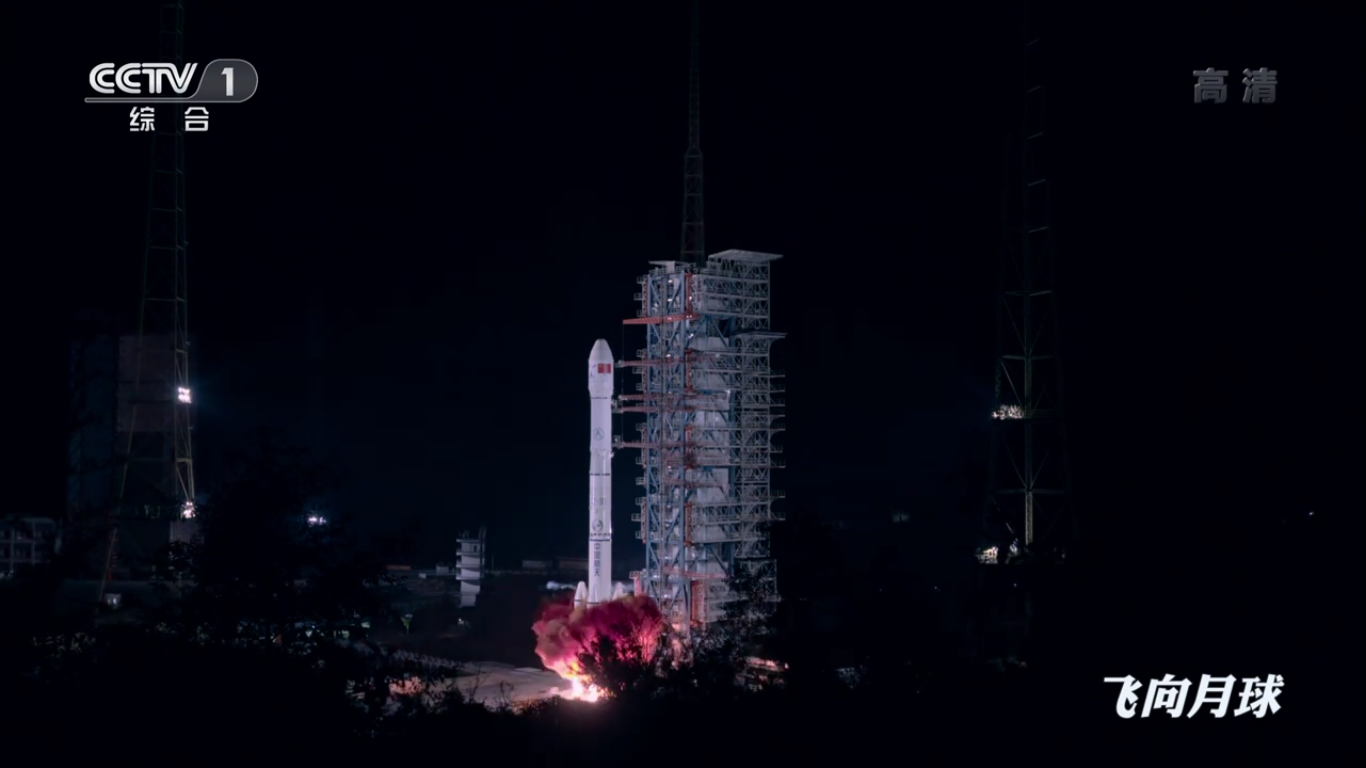

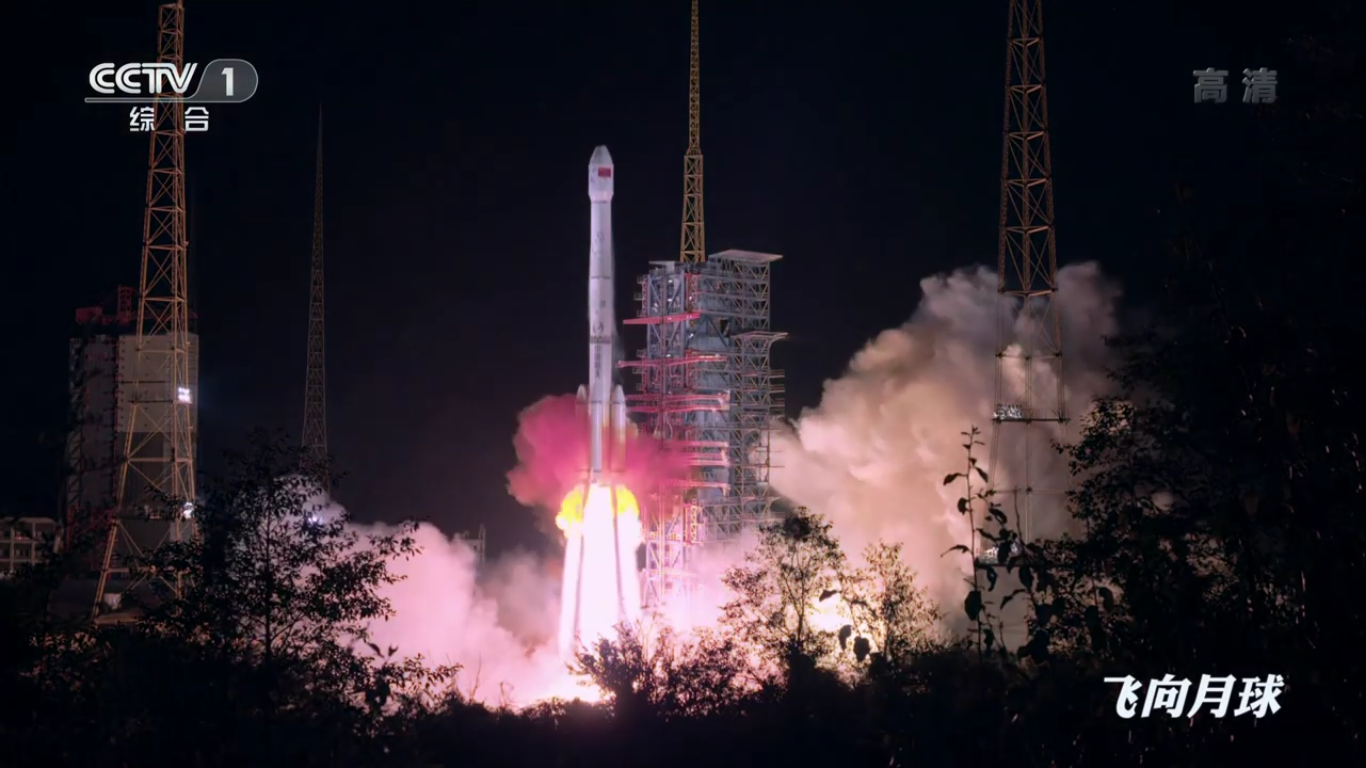
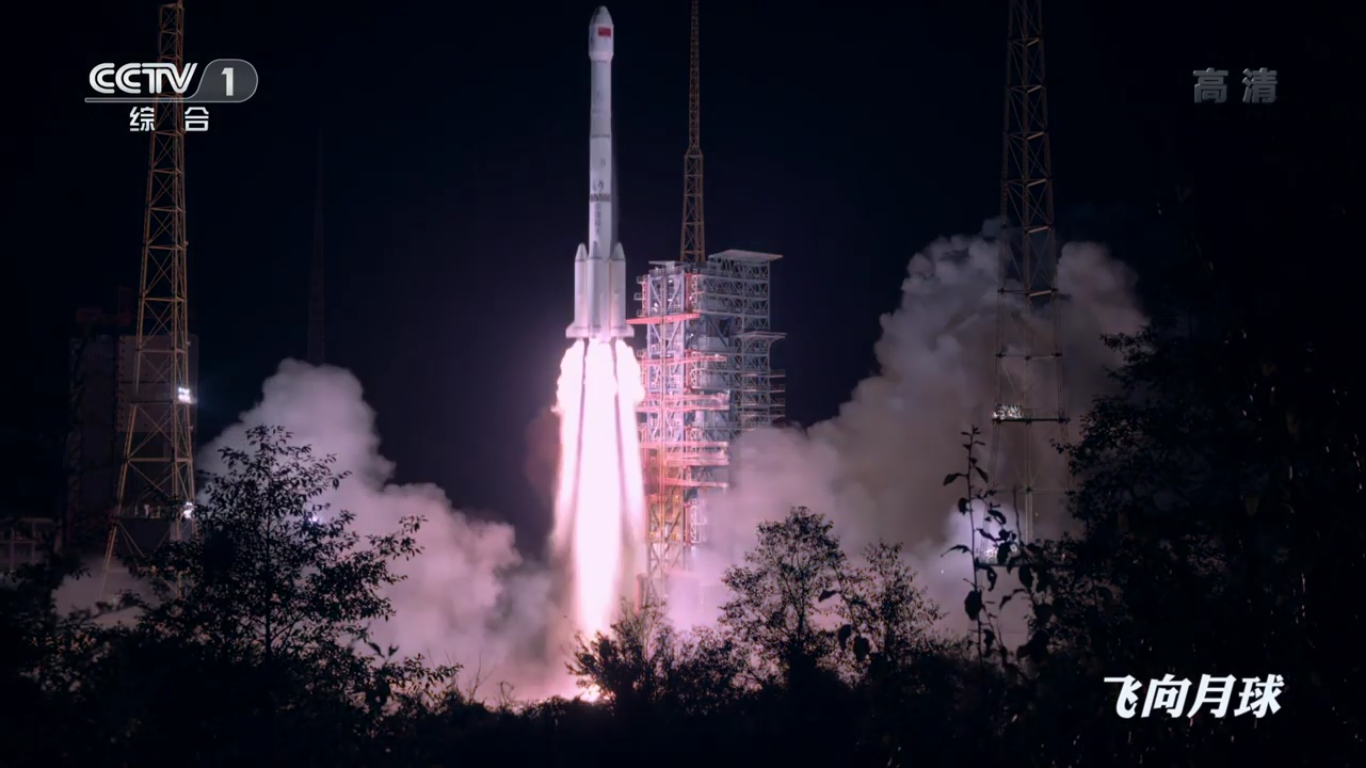
Payload compartment:
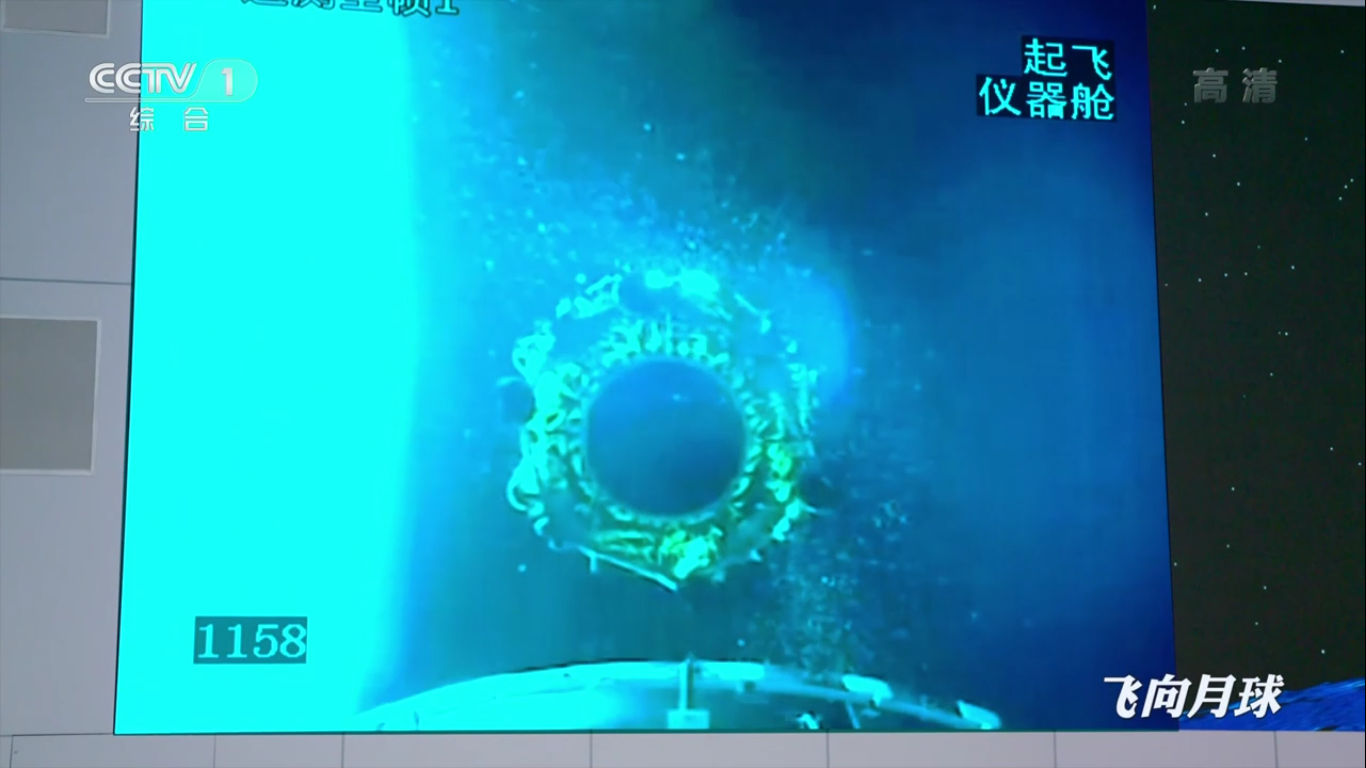
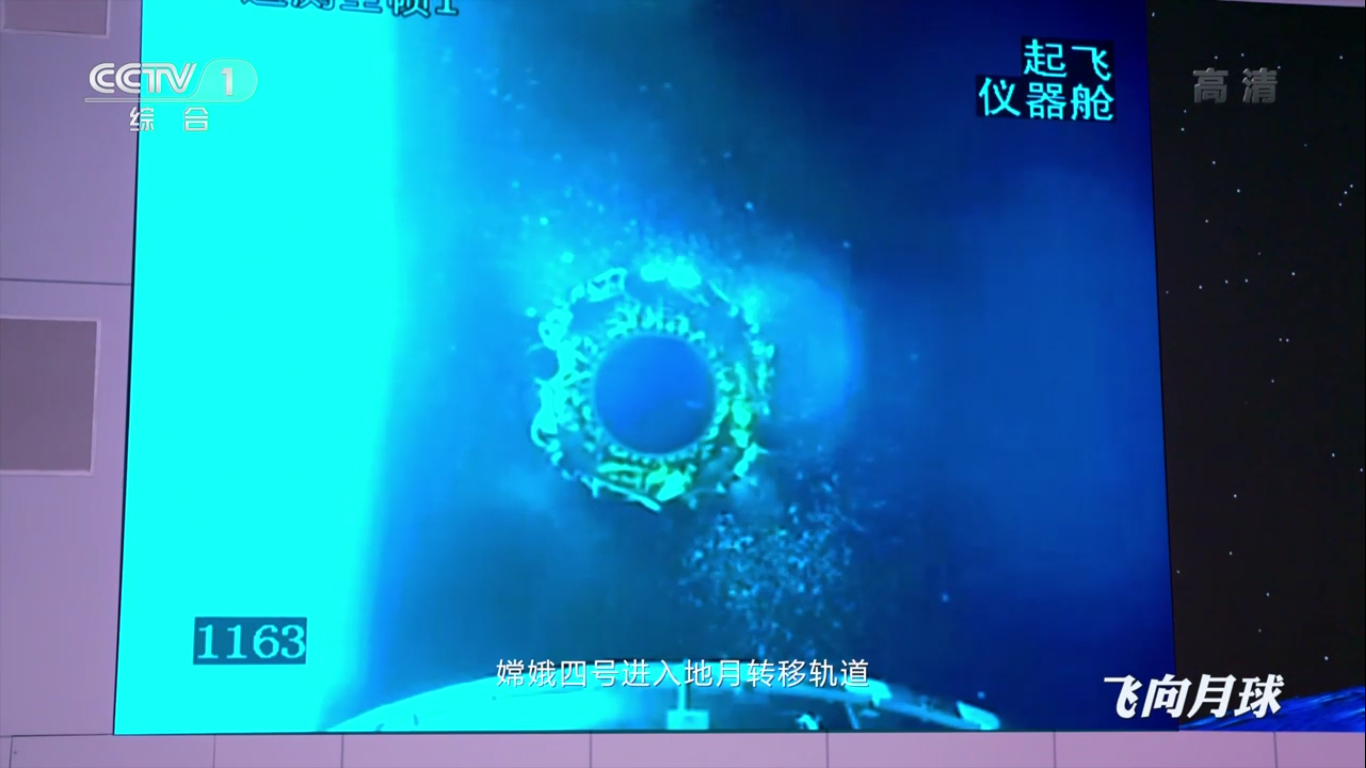
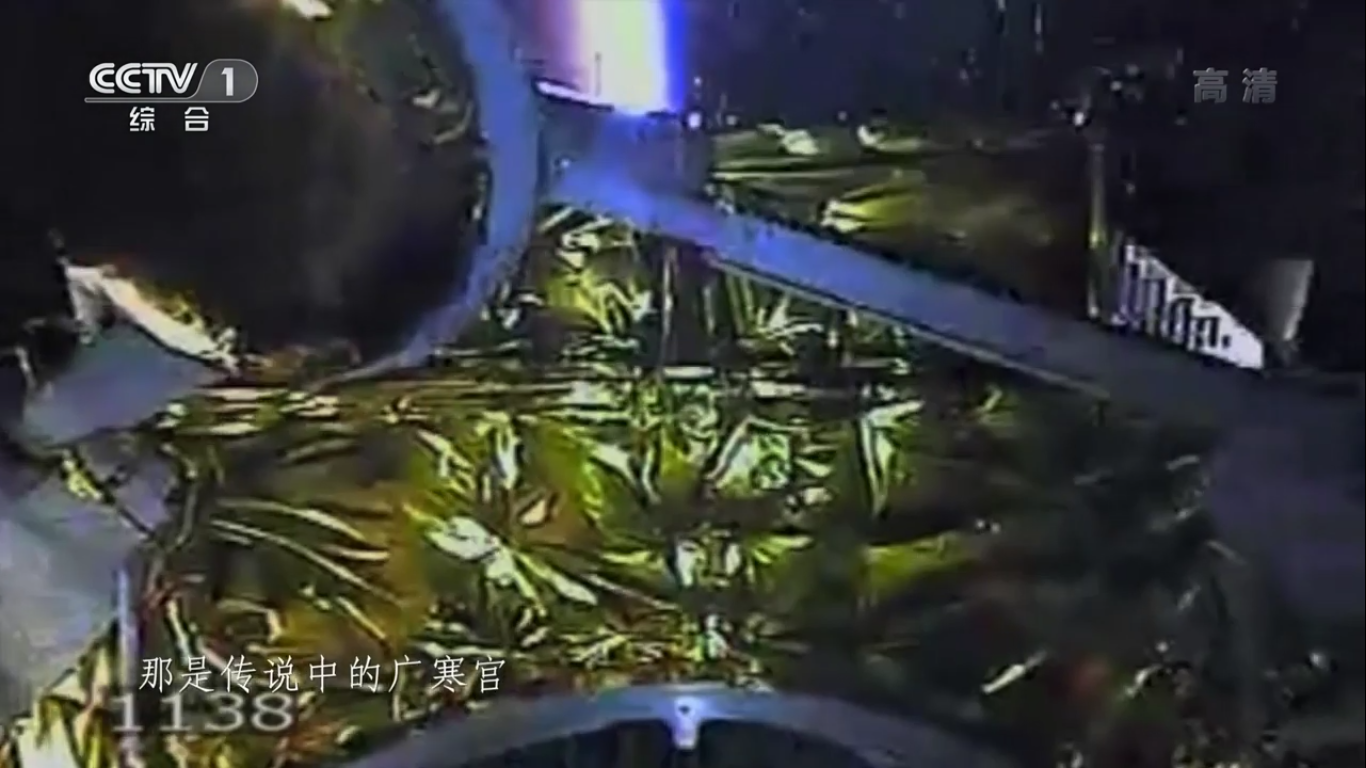
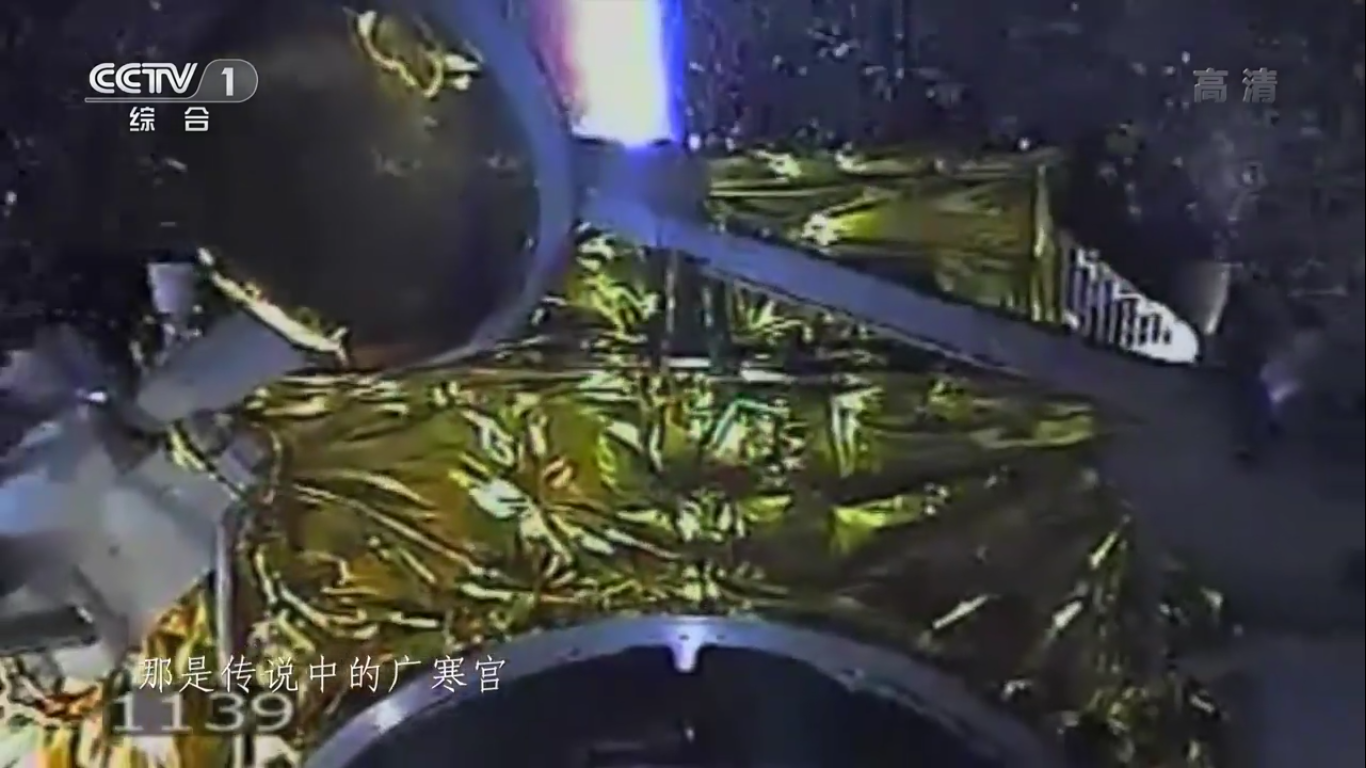
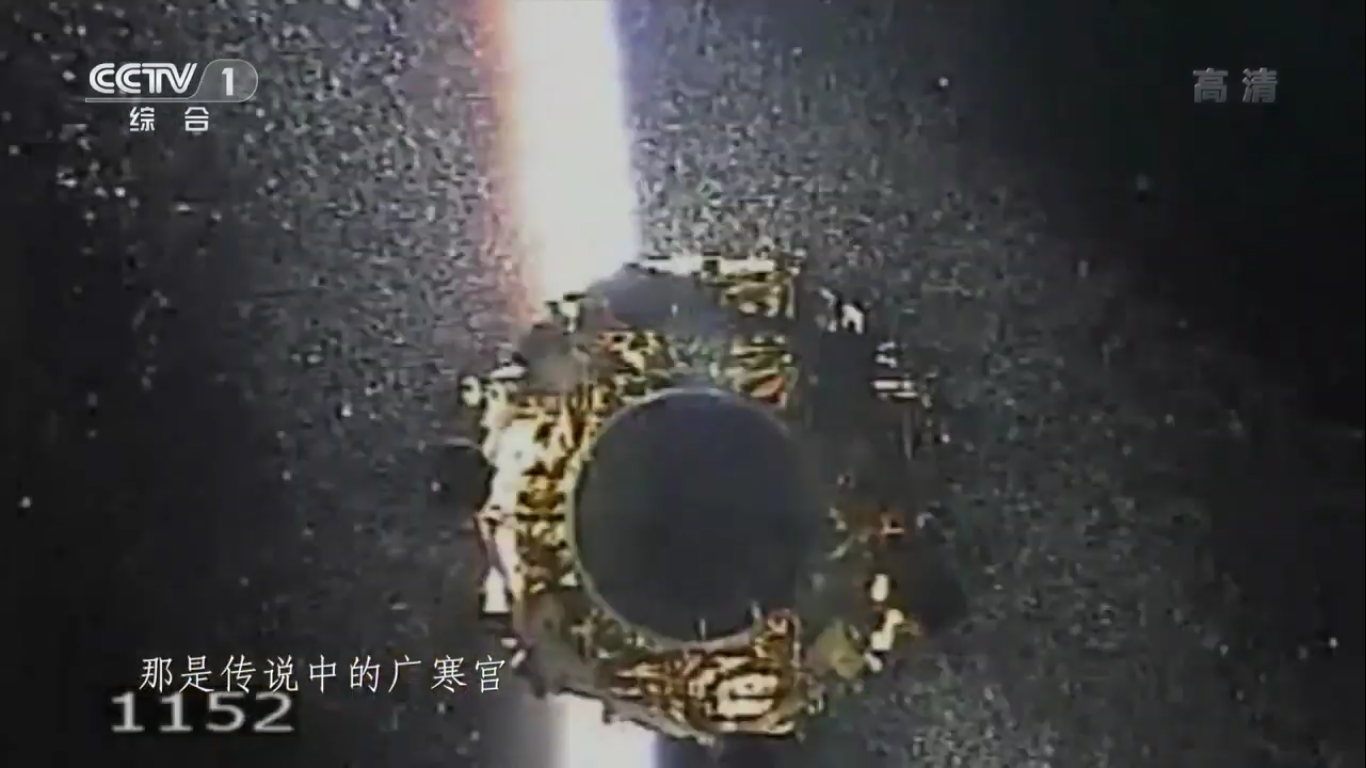
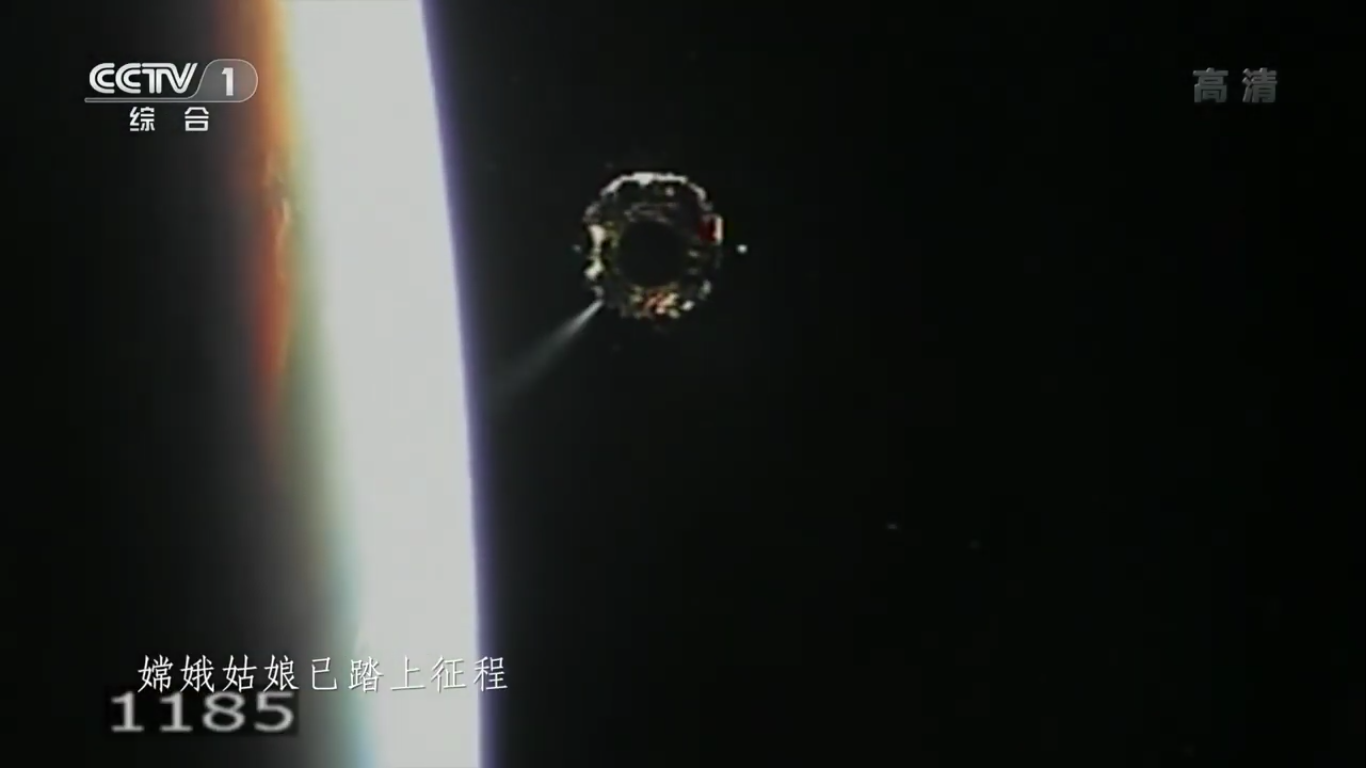
Positioning the payload already in outer space:

January 3, 2019: the Chang'e-4 descent vehicle lands in the Pocket crater on the far side of the Moon.
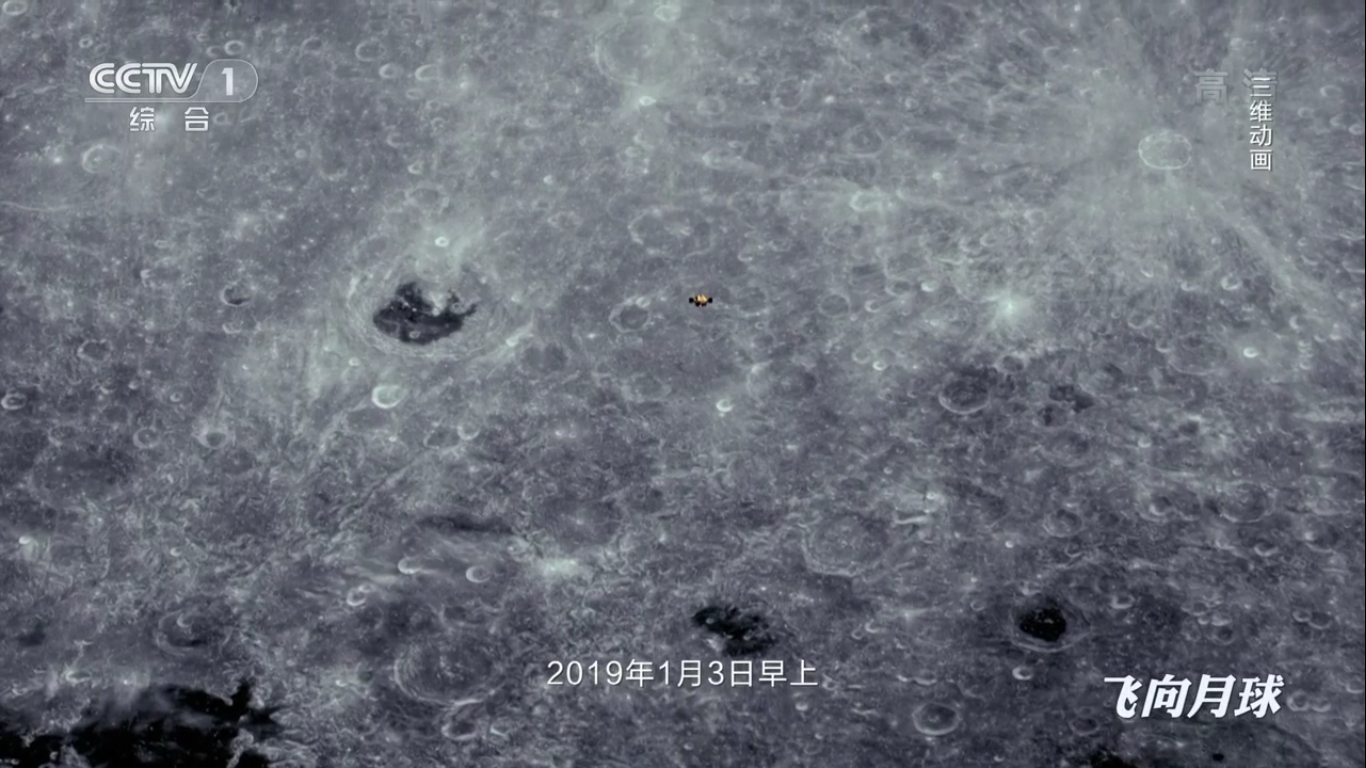
At the flight control center of the Chinese Academy of Space Technology:
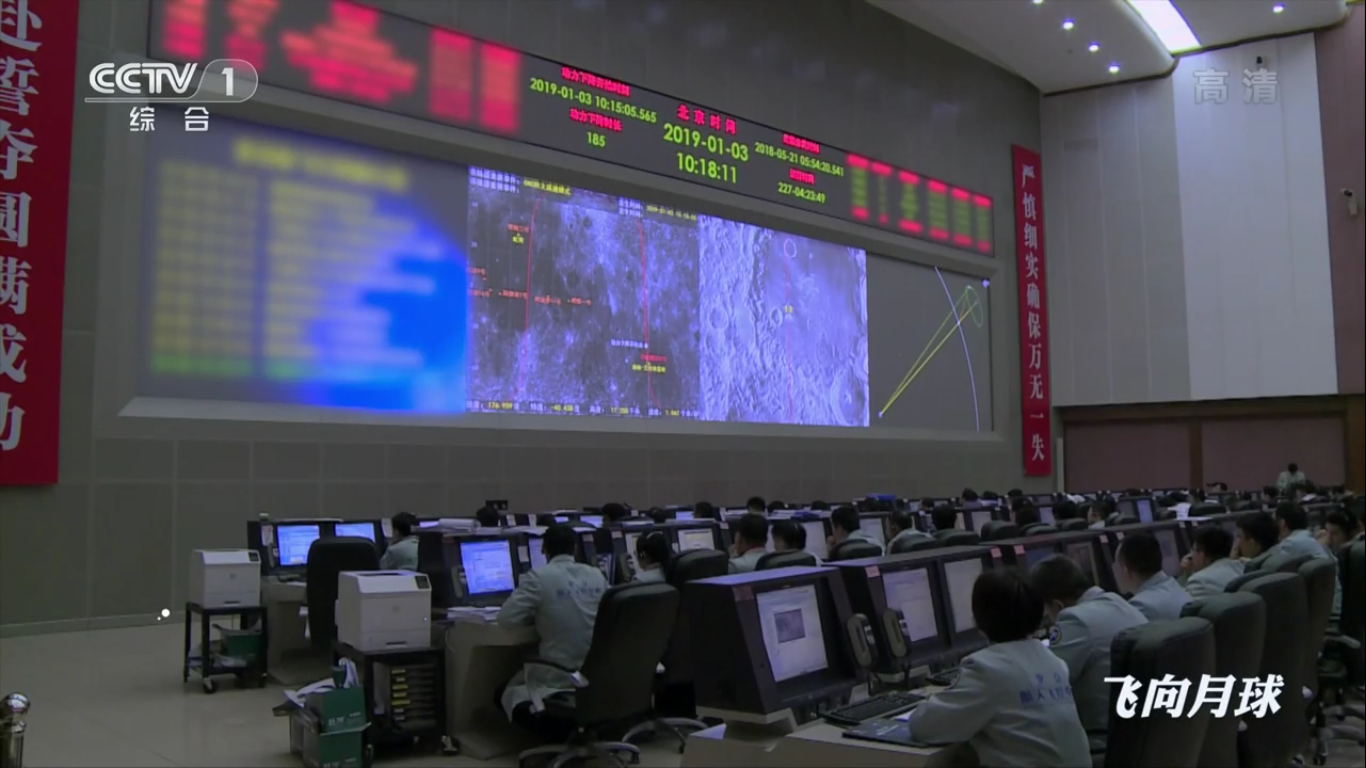

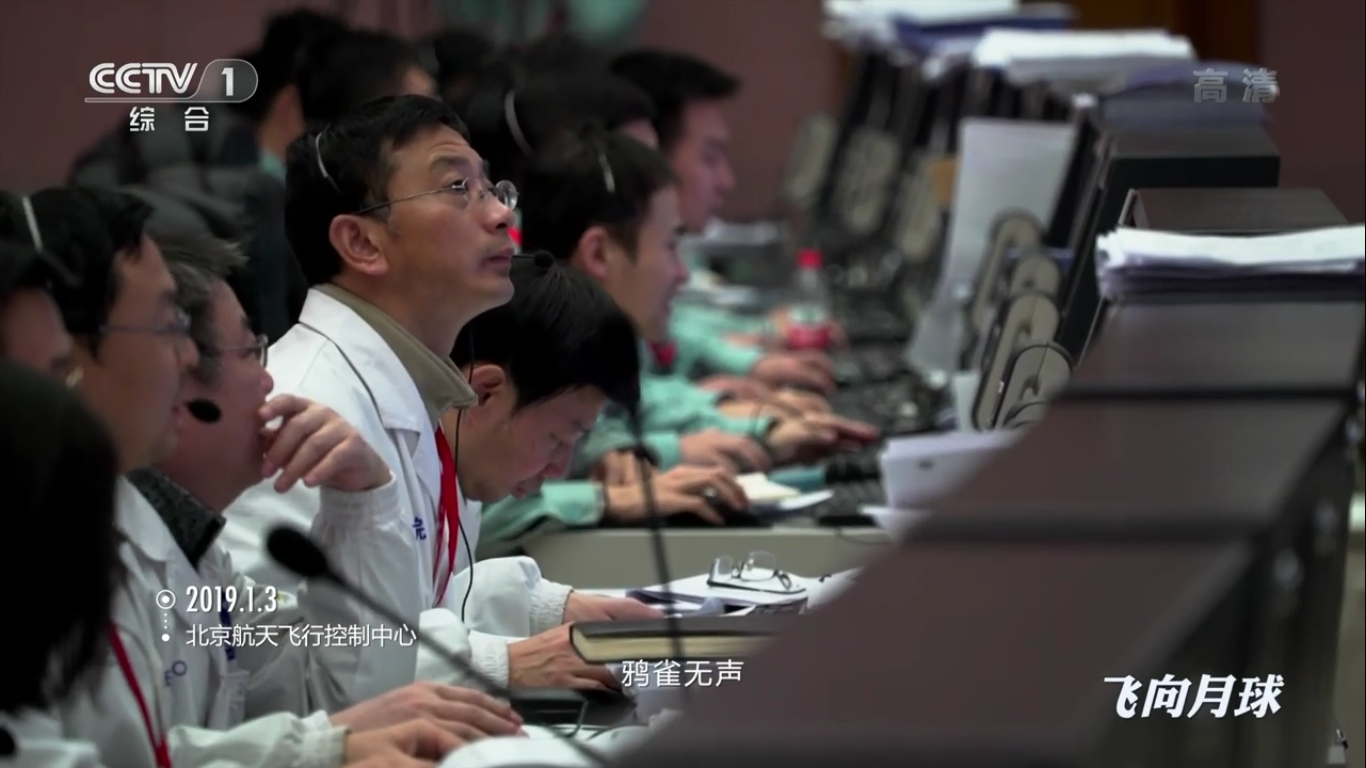
Zhang He is the executive director of the Chang'e-4 project at his post:
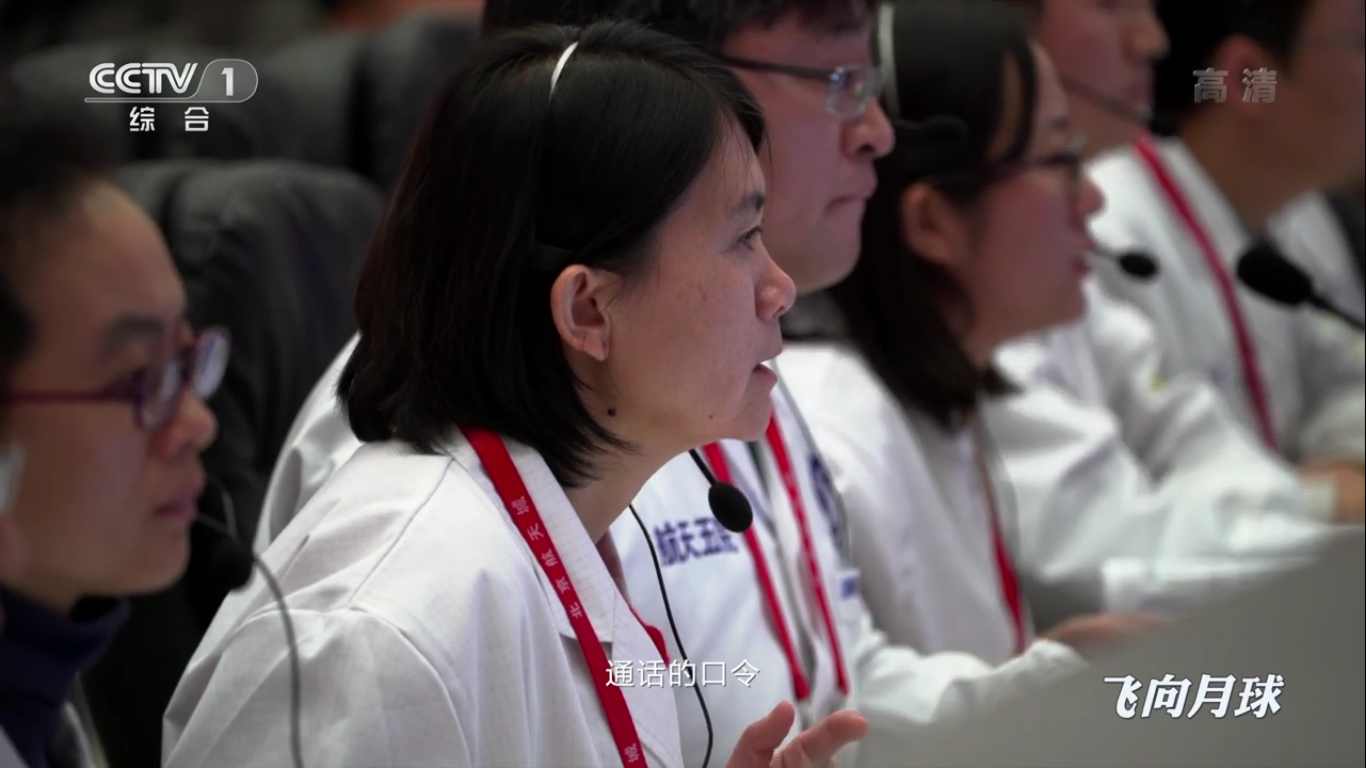
Interesting icons:
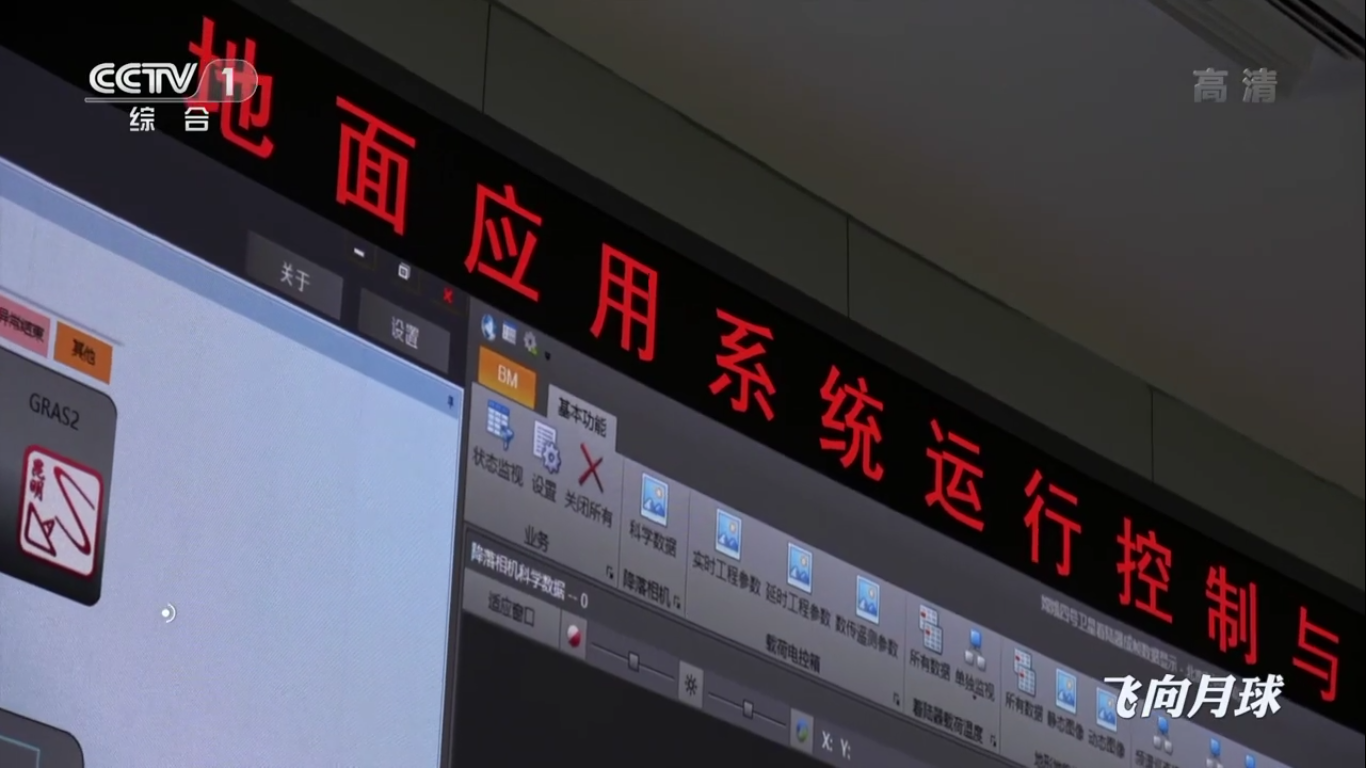
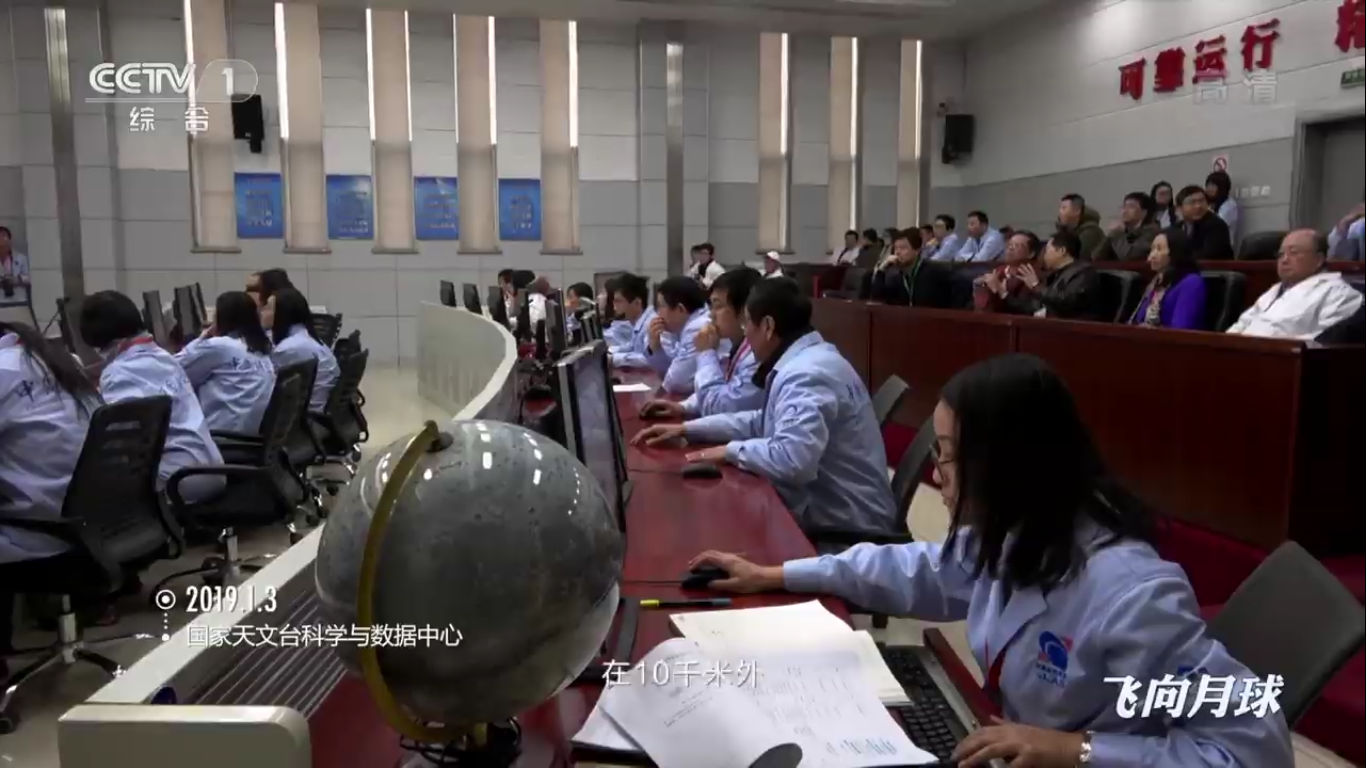

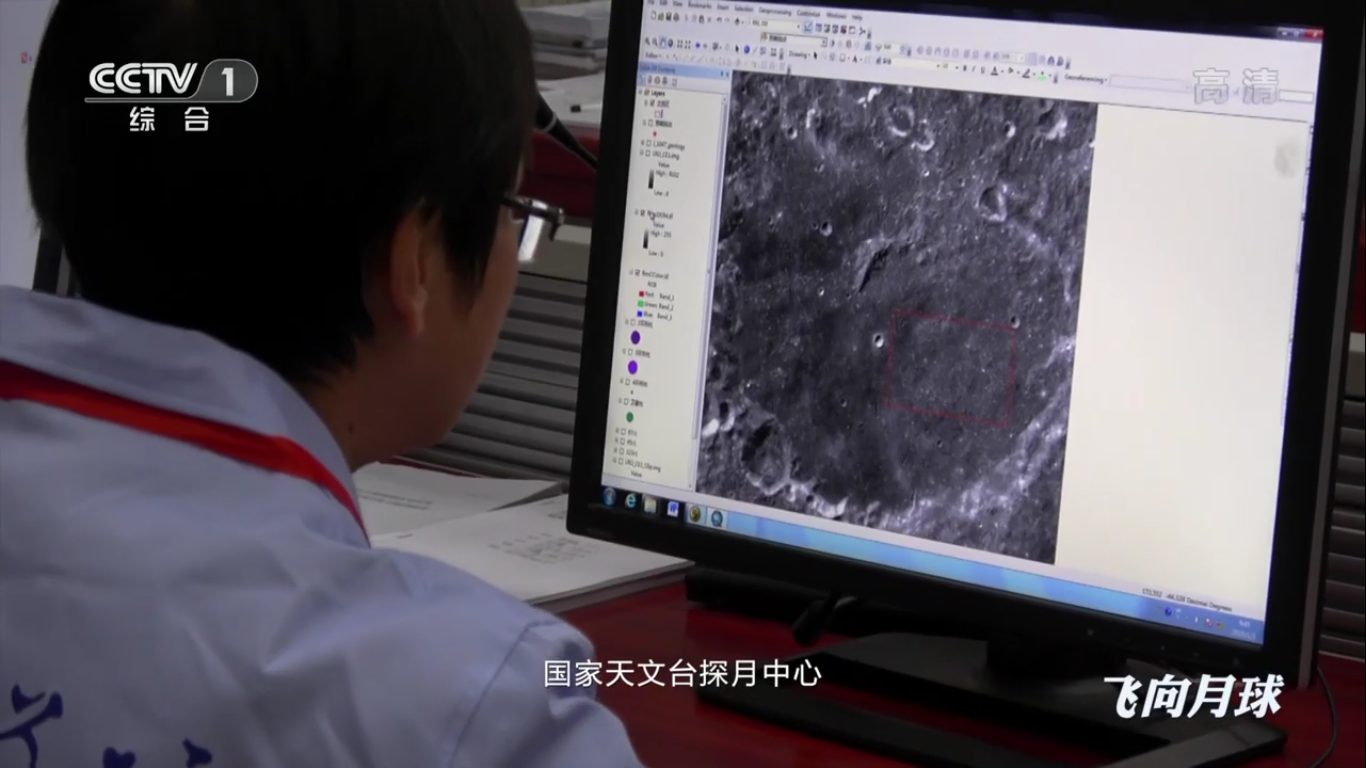
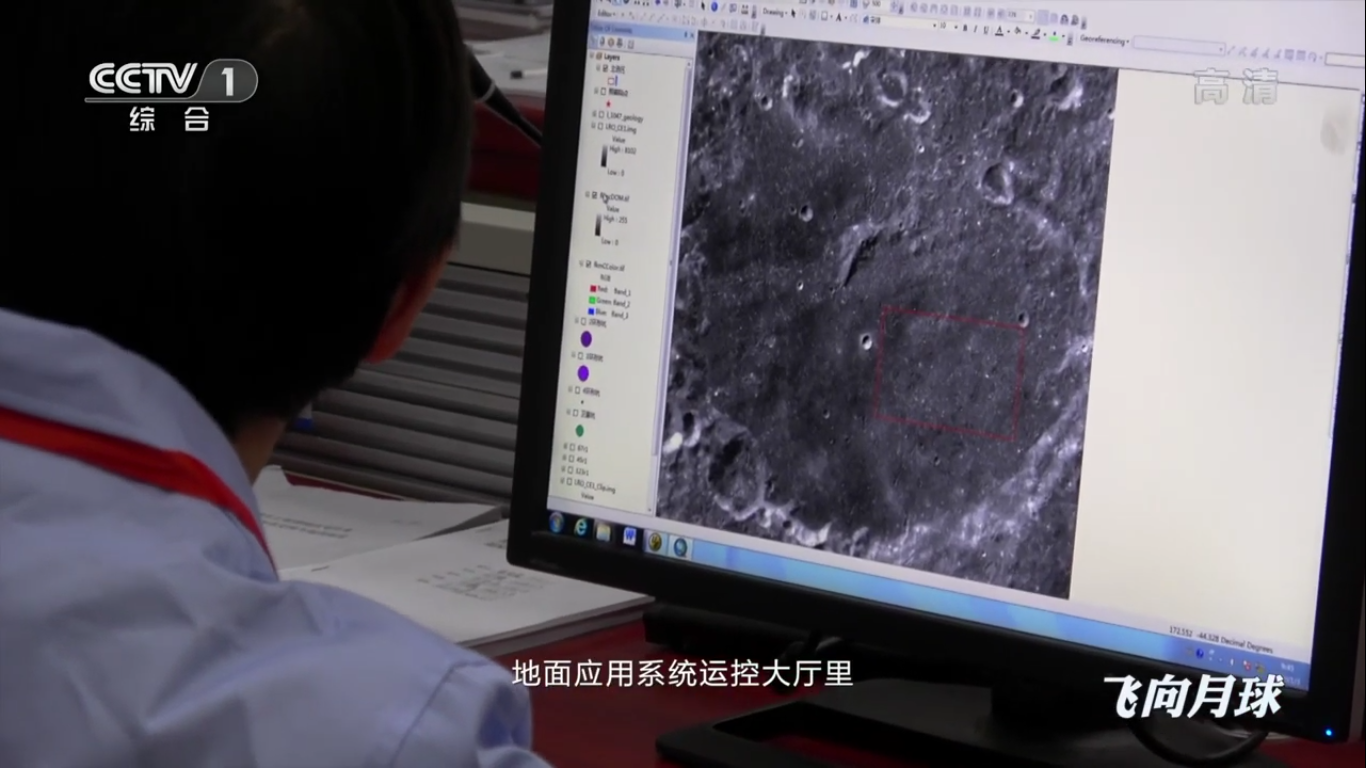
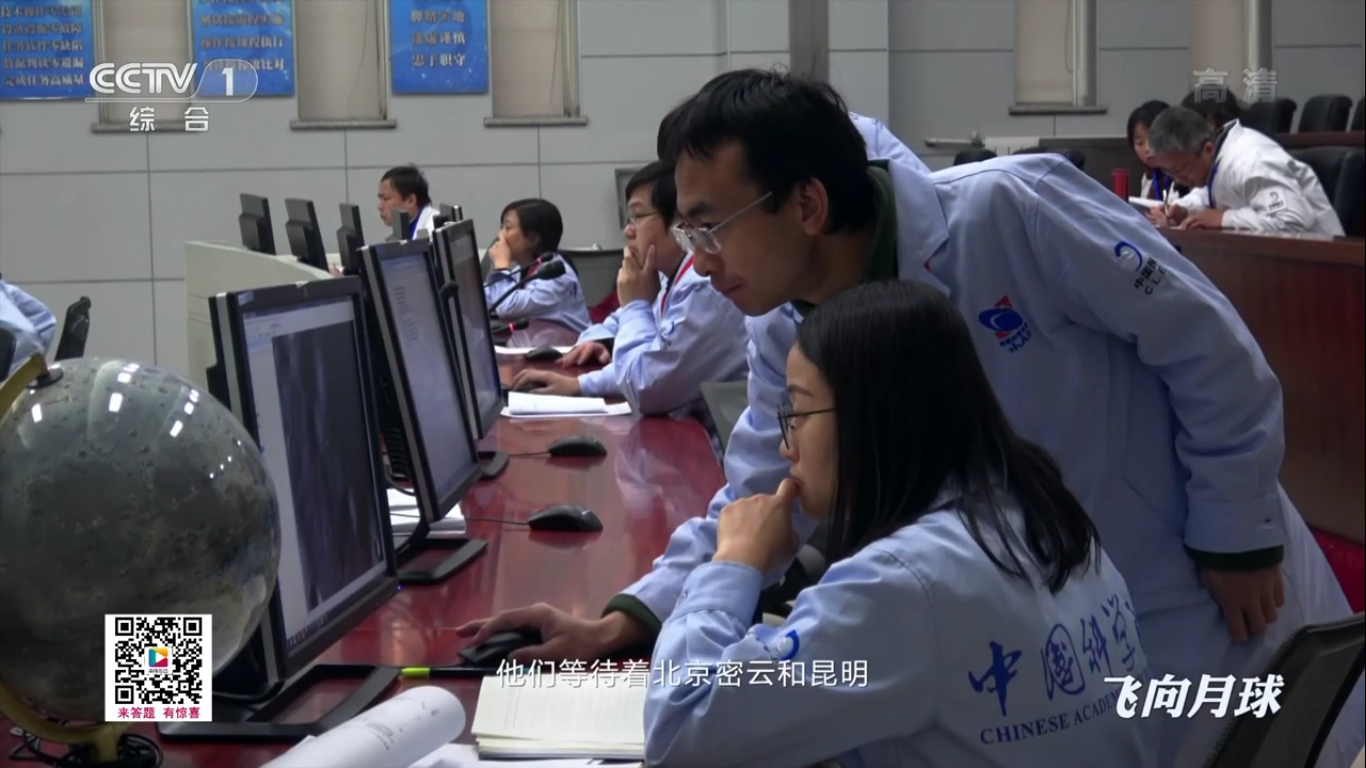
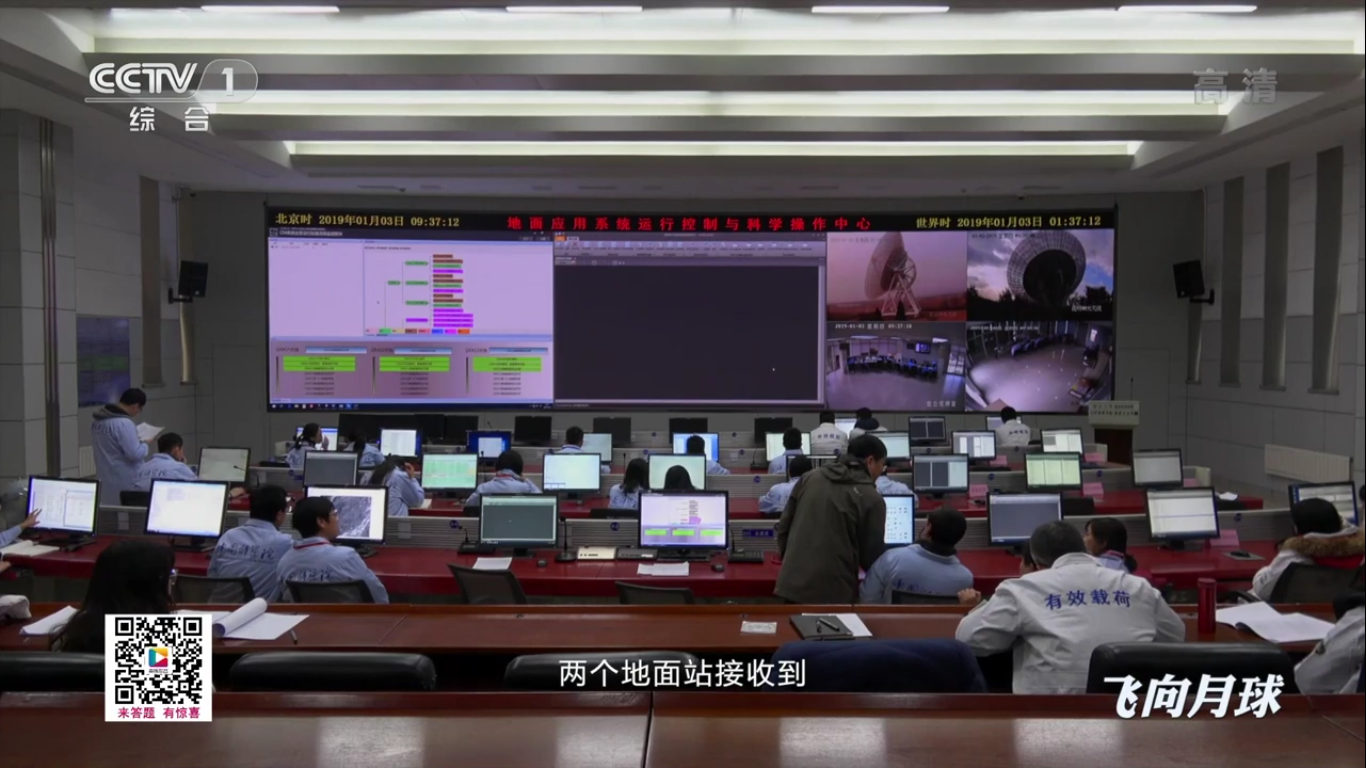
At the center of space communications:
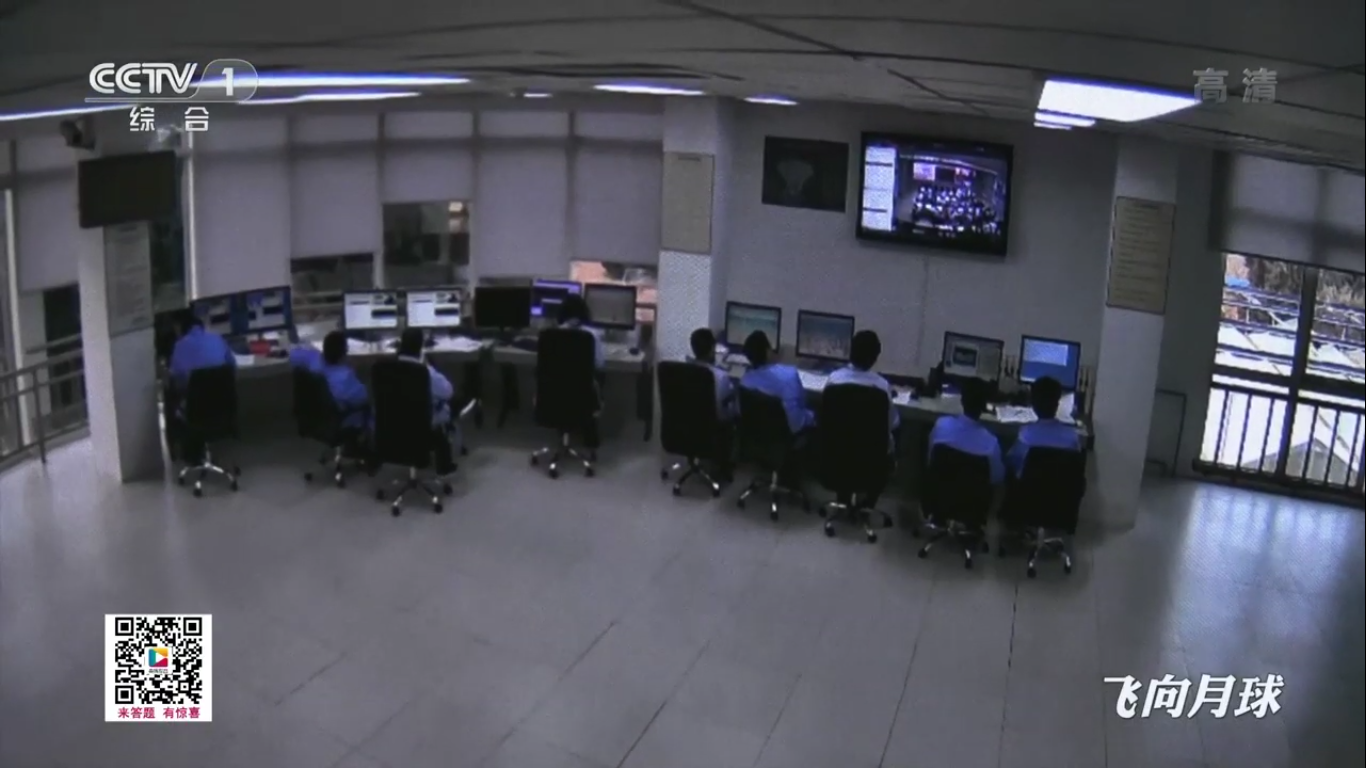
Preparation for landing:

Landing place "need to catch" very carefully:

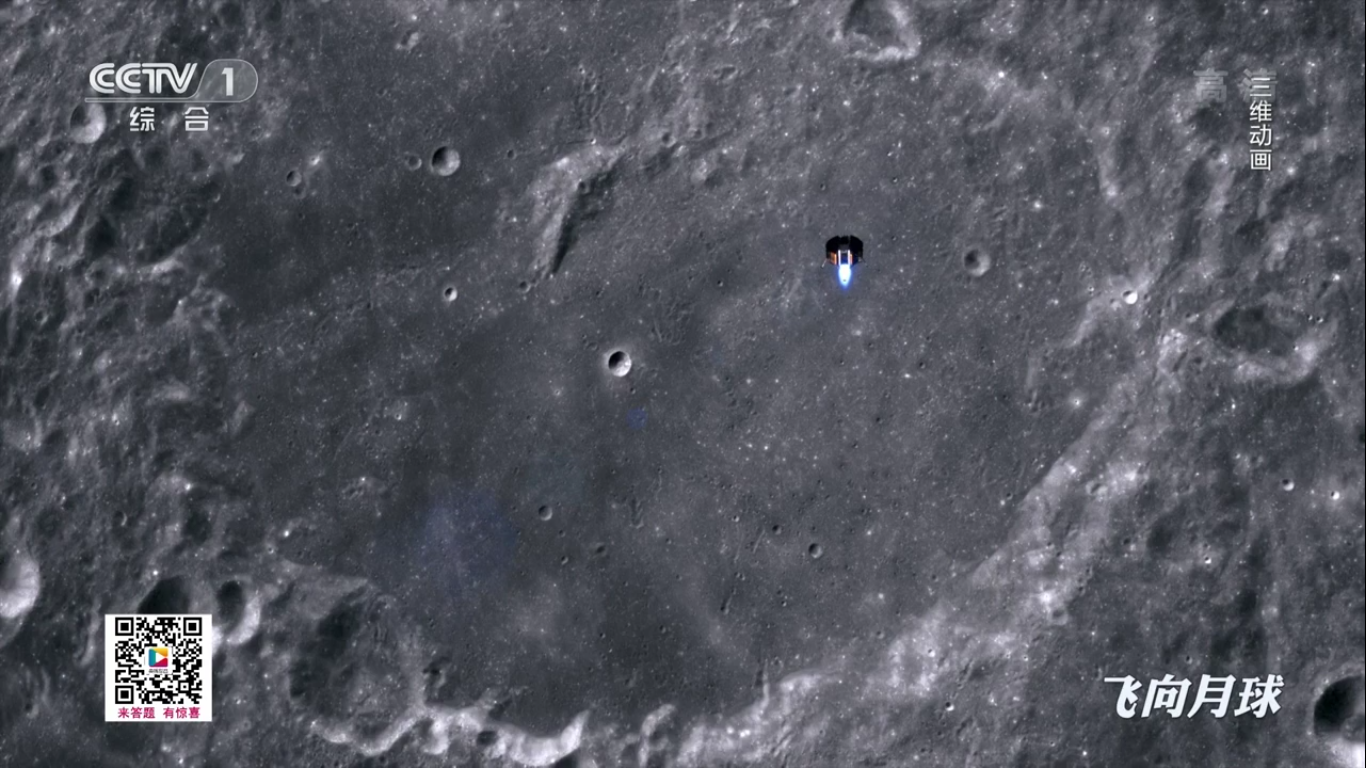

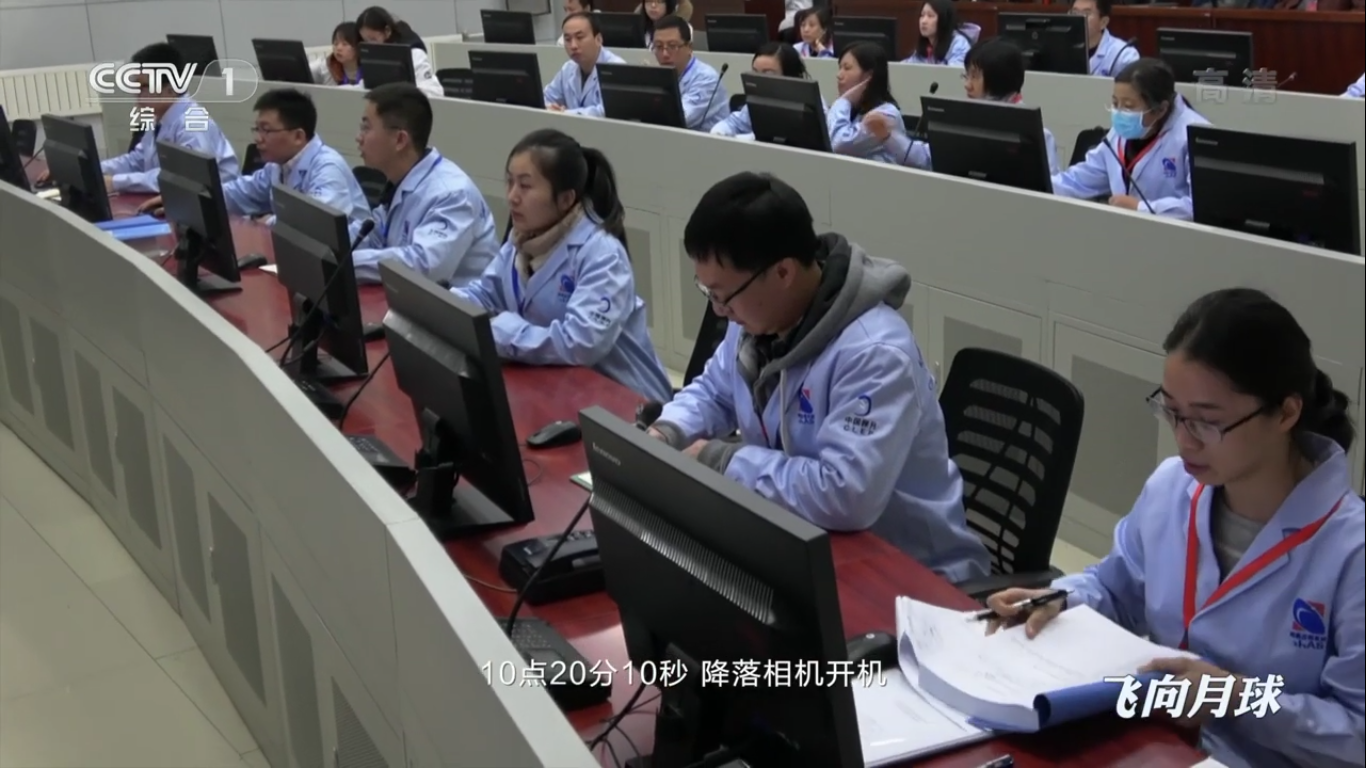

Some operators do not have keyboards:

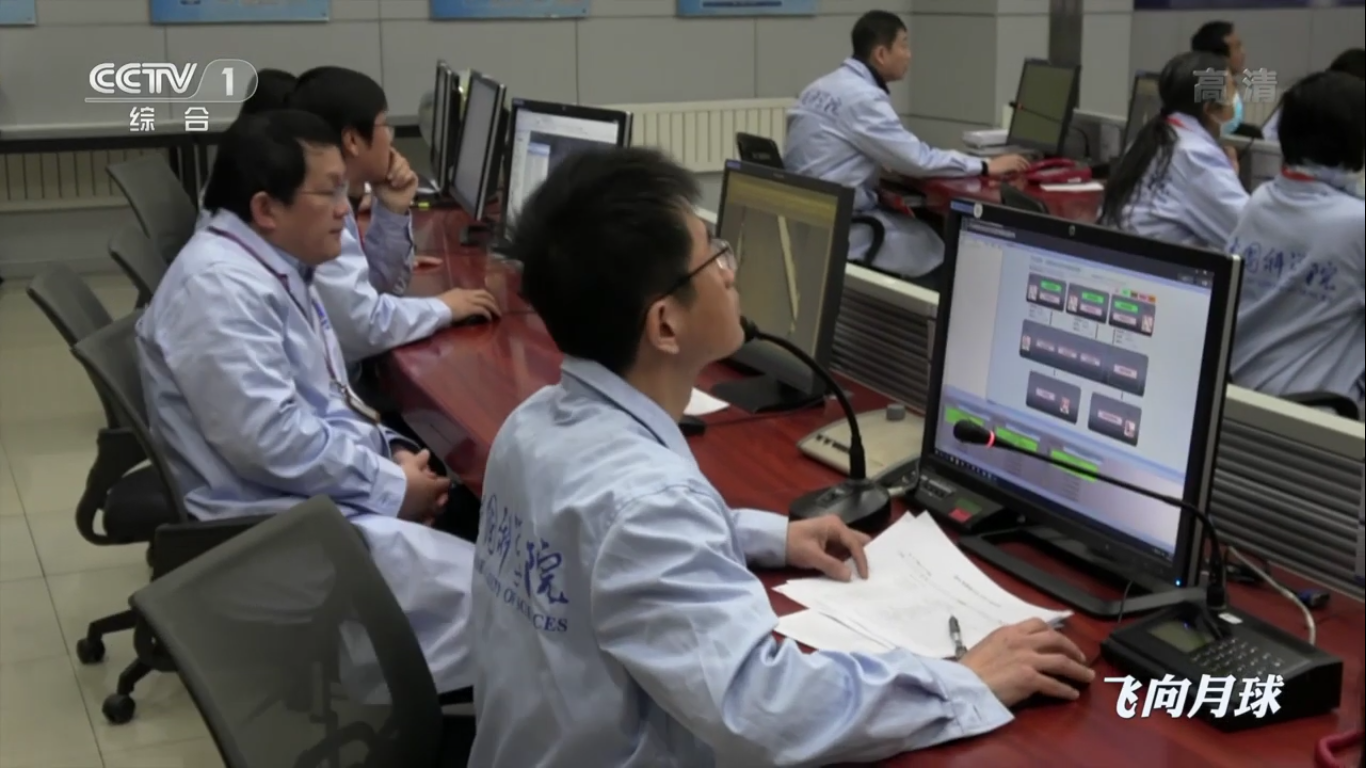
Planting process:

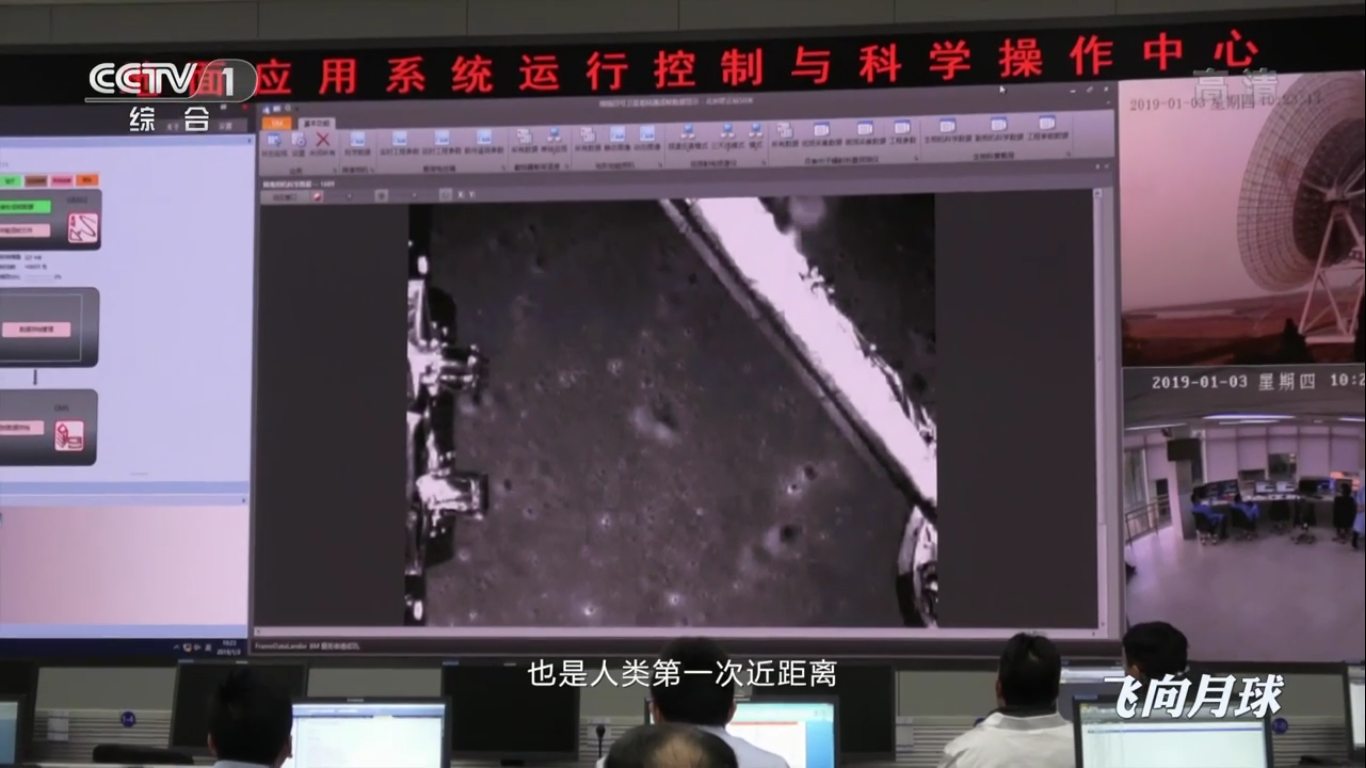

Communication via satellite transponder:
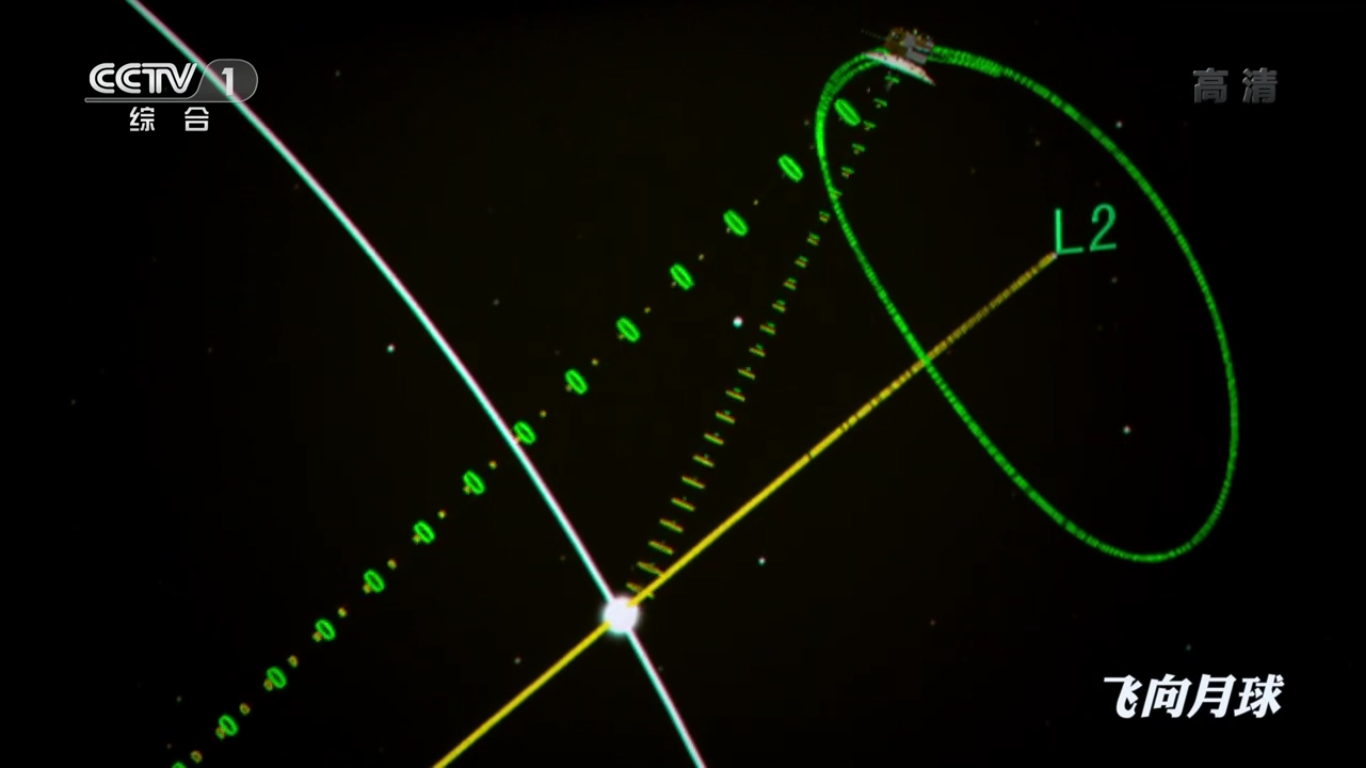
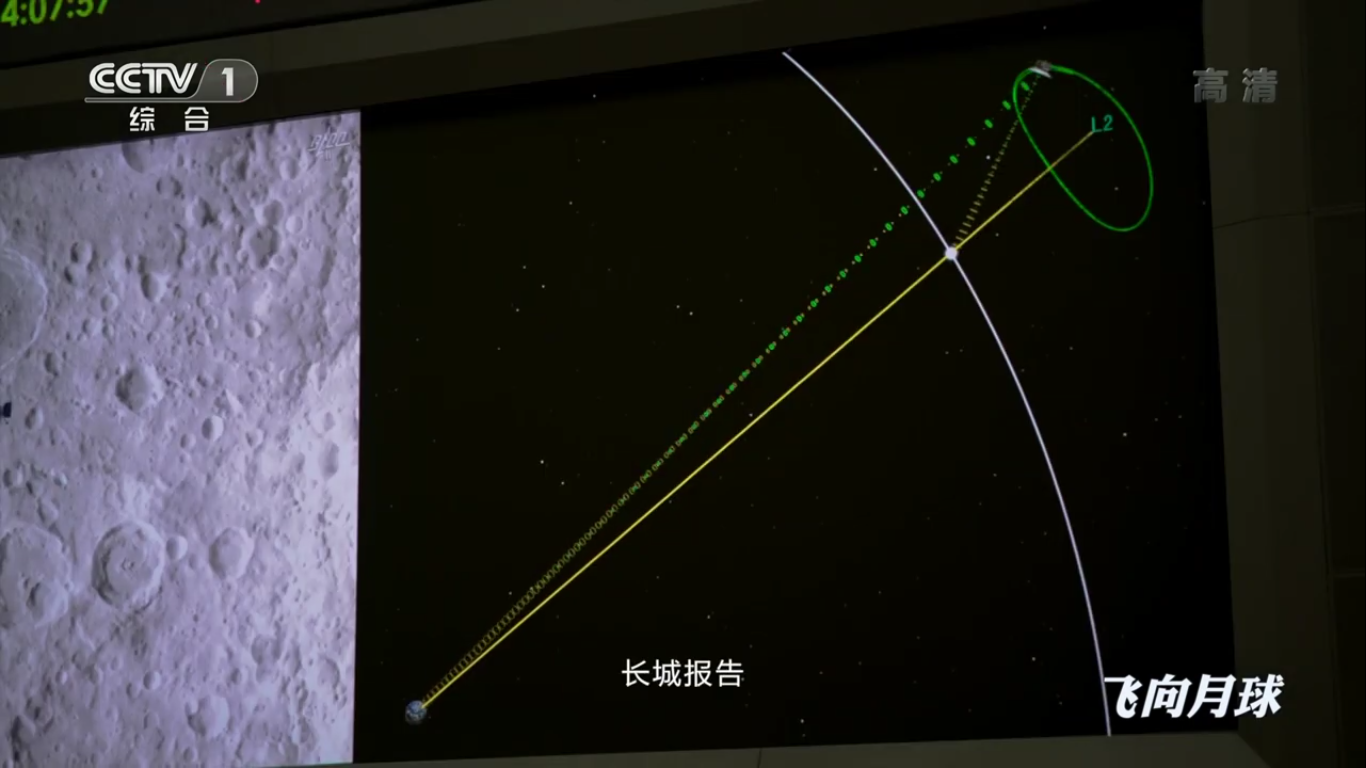


There is a landing:

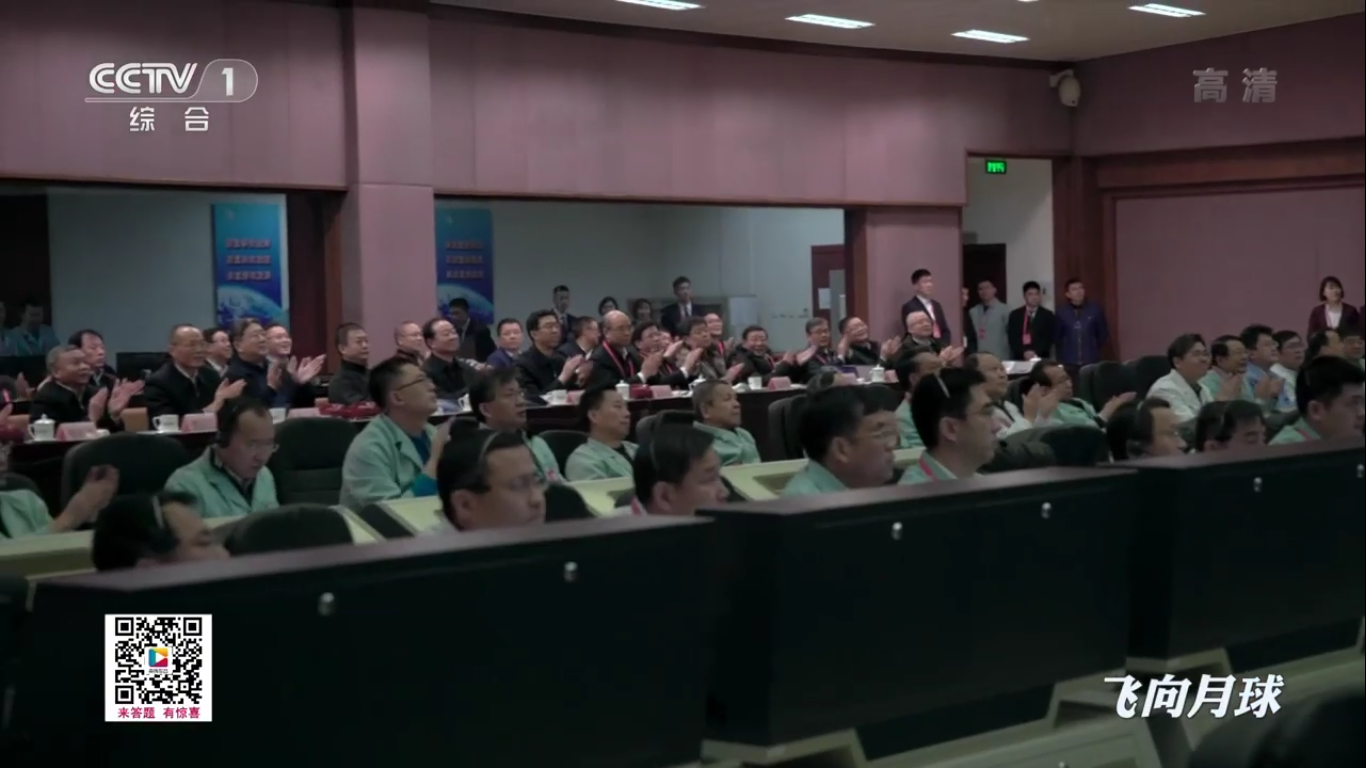

Preparation for the descent of the rover:
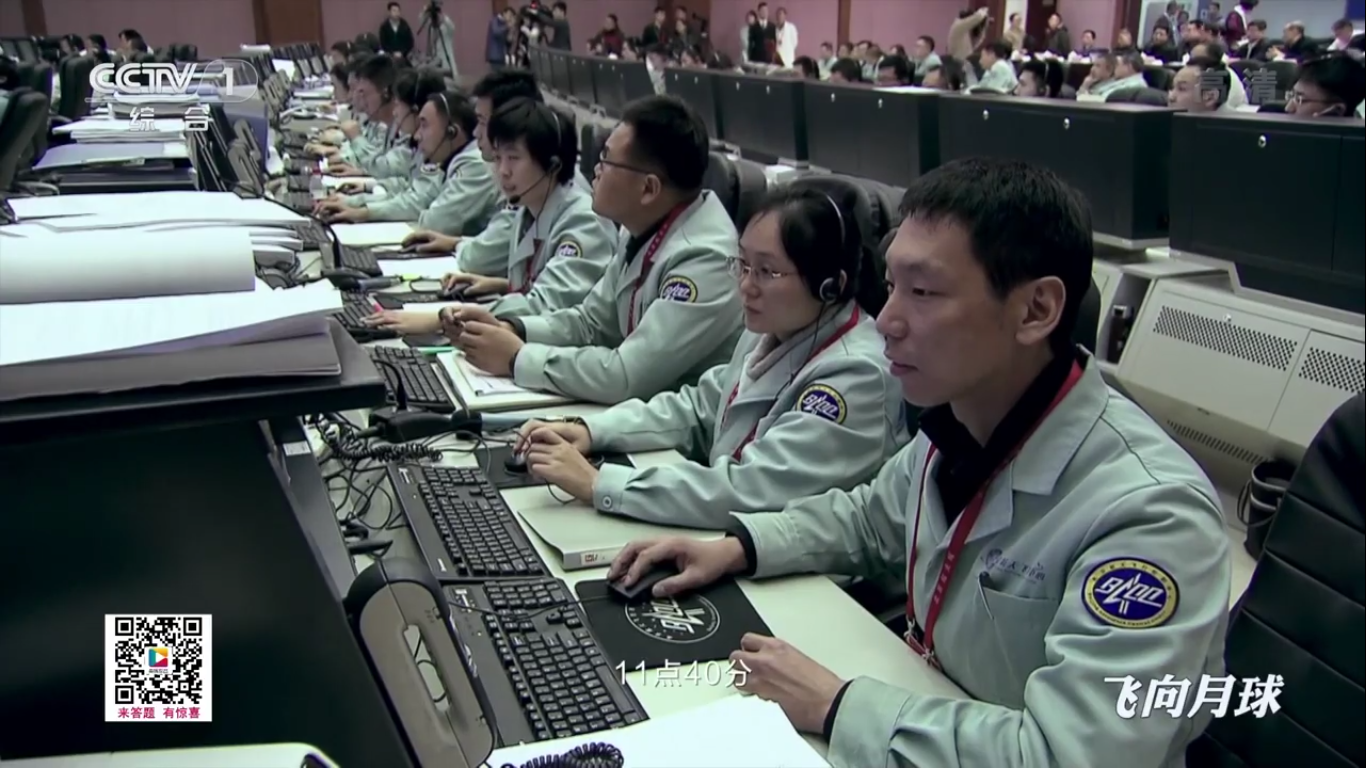
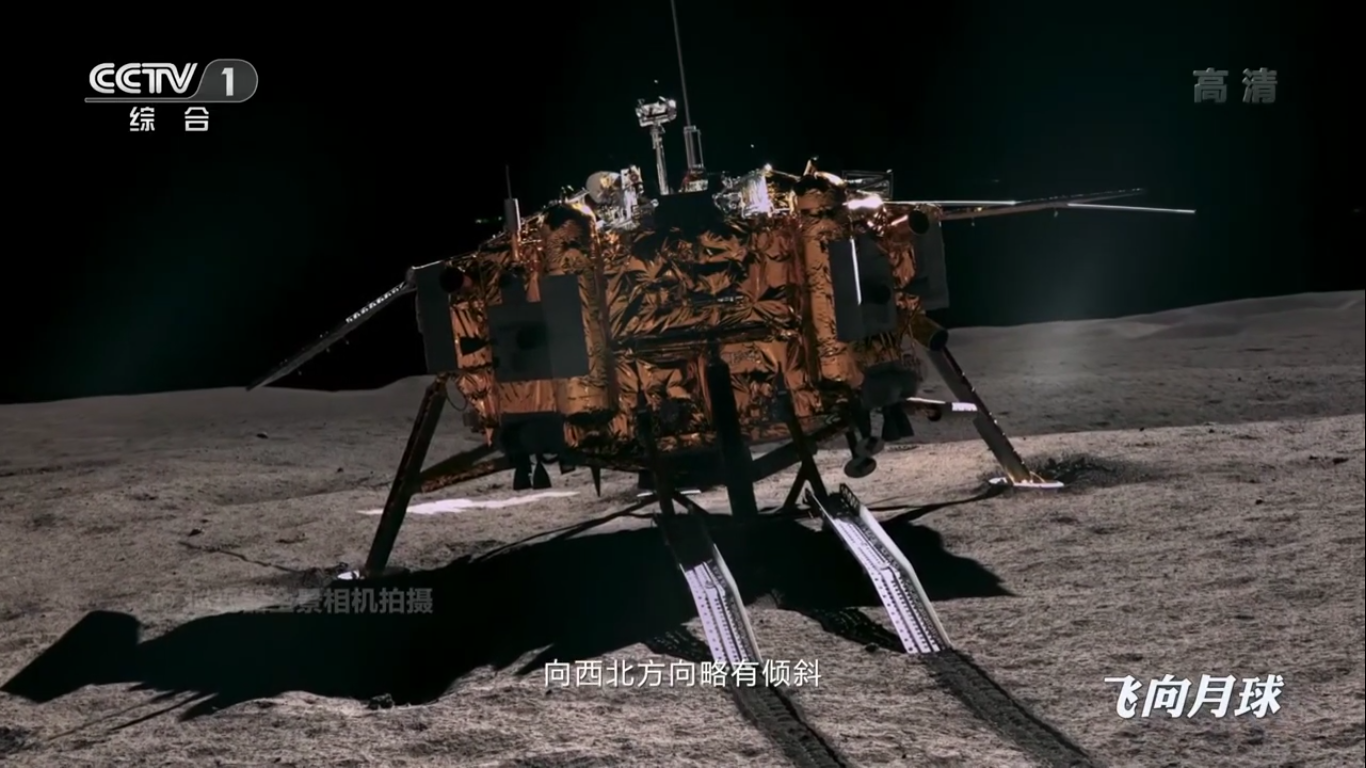
Each landing support of the Chang'e-4 descent module has a surface touch sensor, and temperature sensors are installed in the supports and the descent ramp for the rover, which operated on a moonlit night, recording data on the temperature of the lunar surface.
According to the sensors of the Chang'e-4 modules, the temperature on the lunar surface at night dropped (minimum) to minus 190 degrees Celsius.
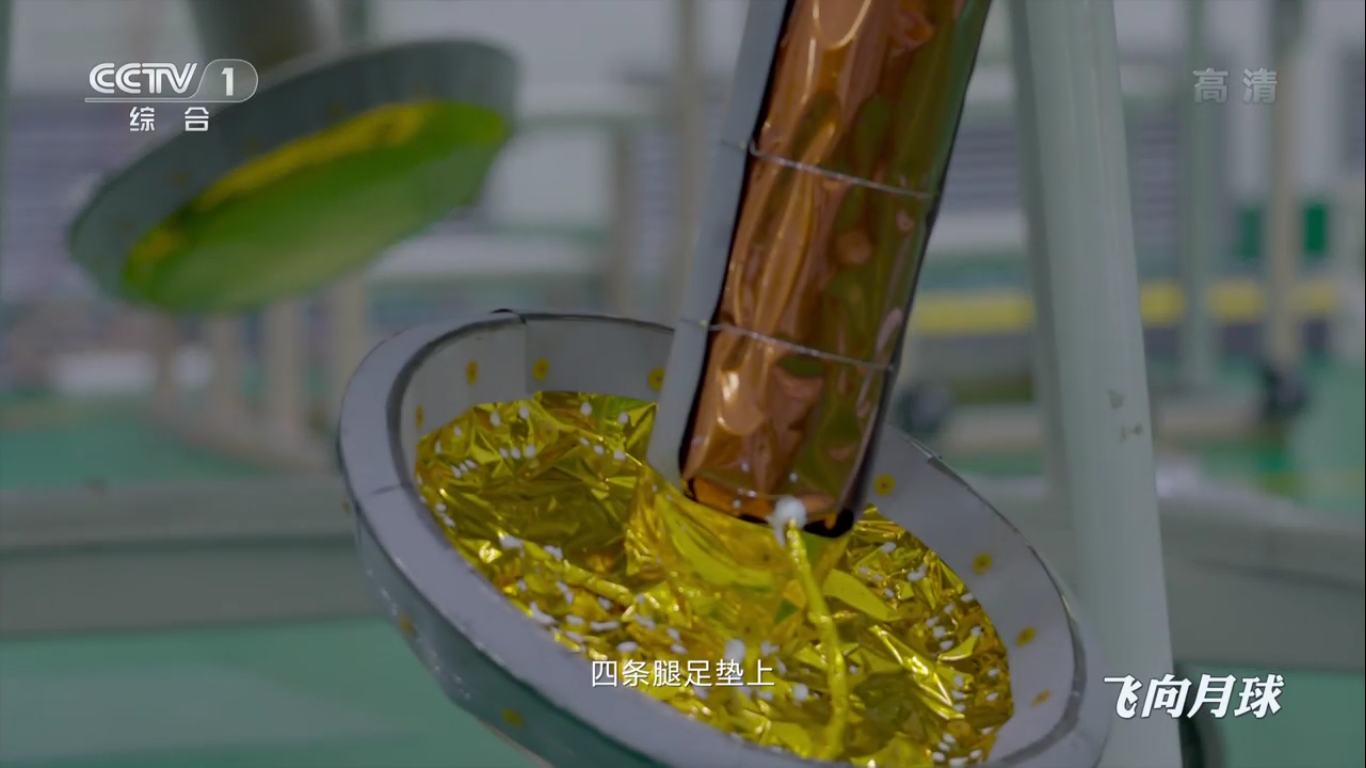
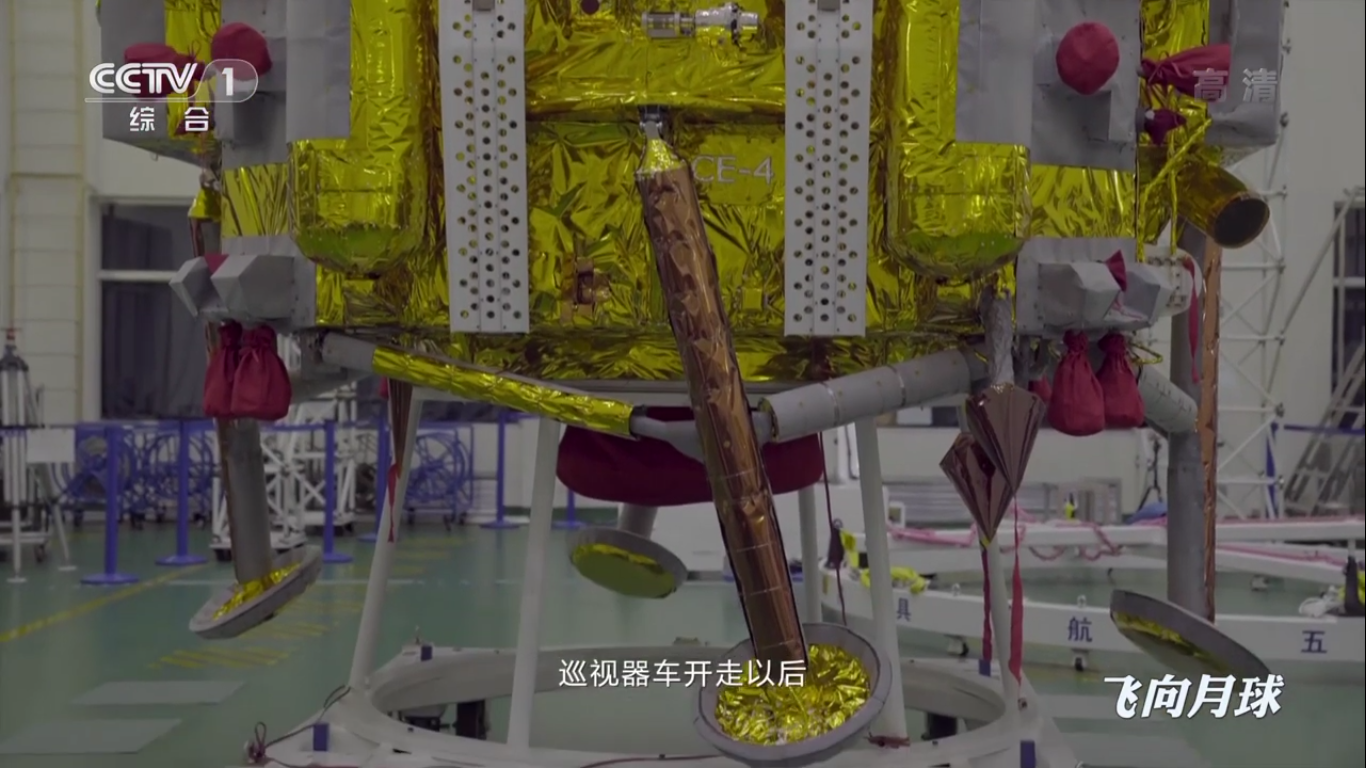
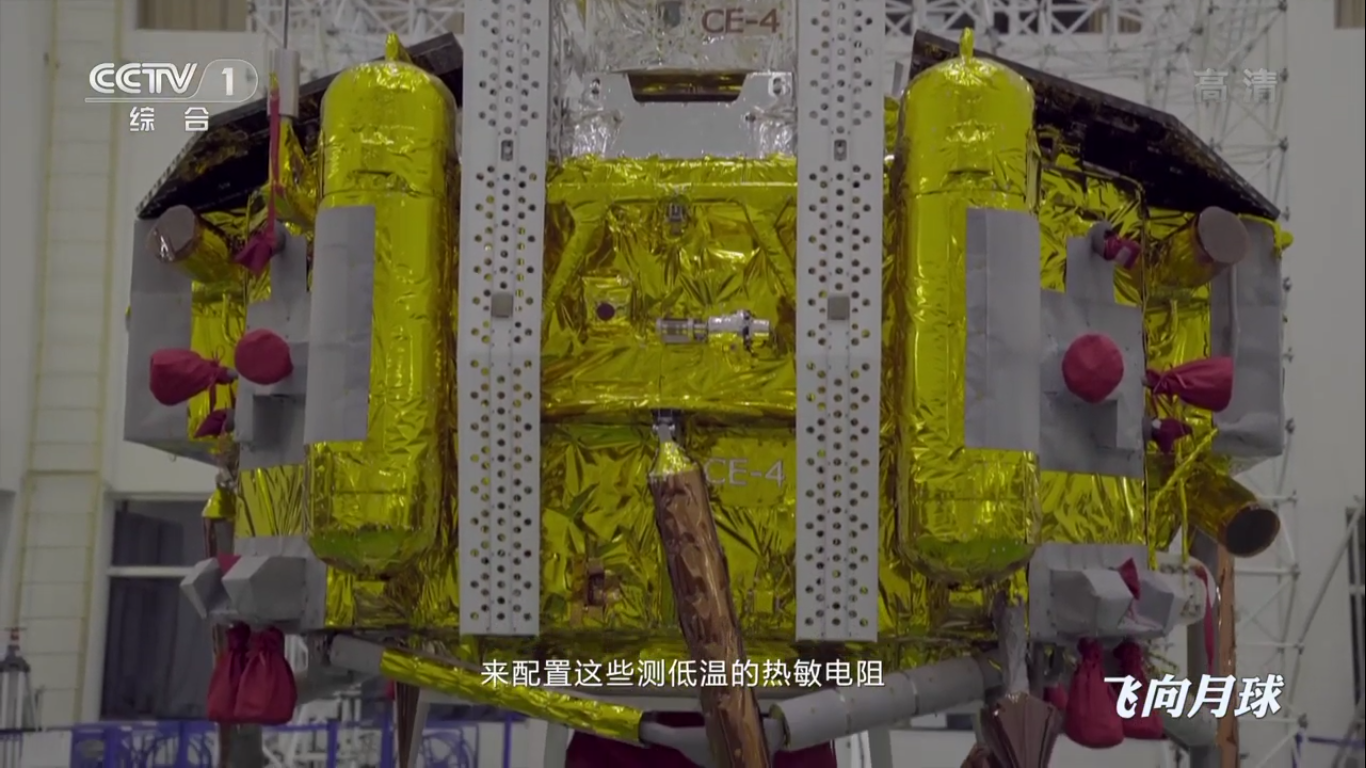
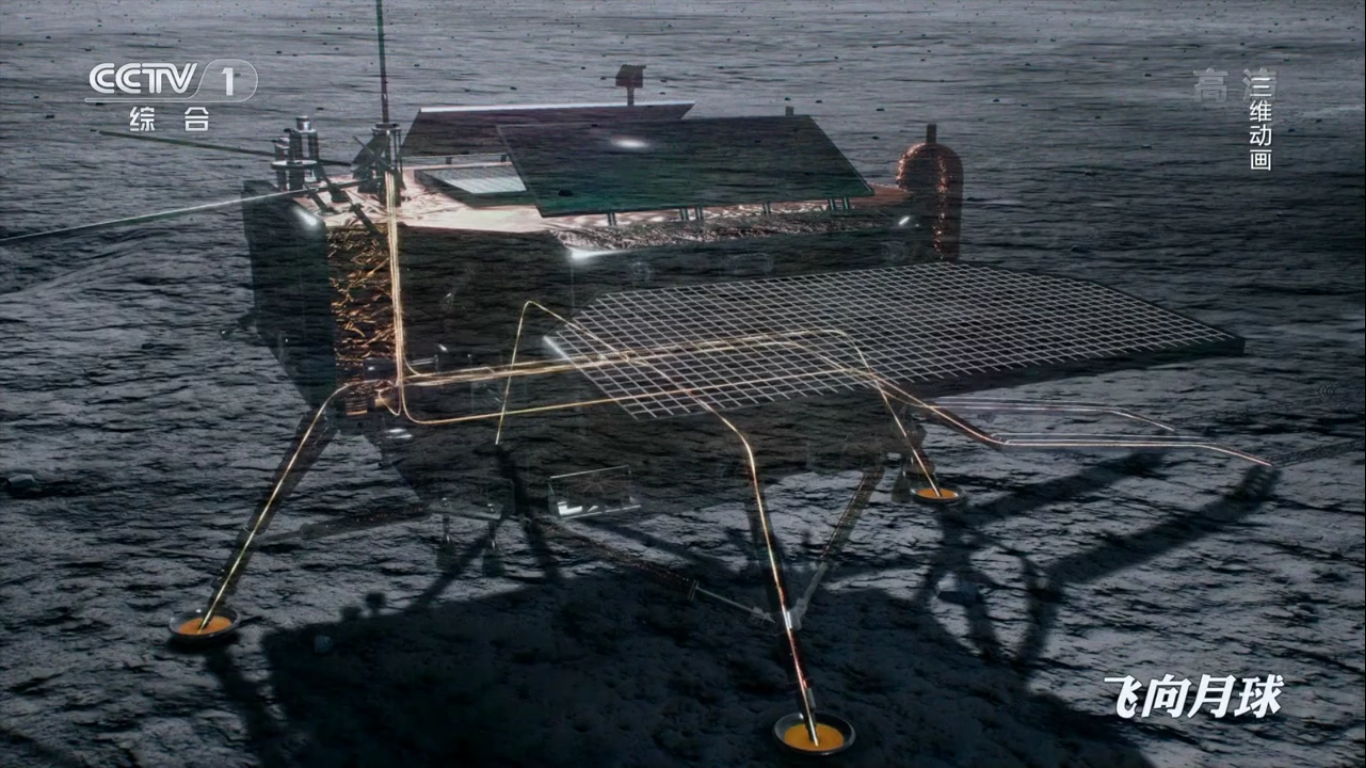
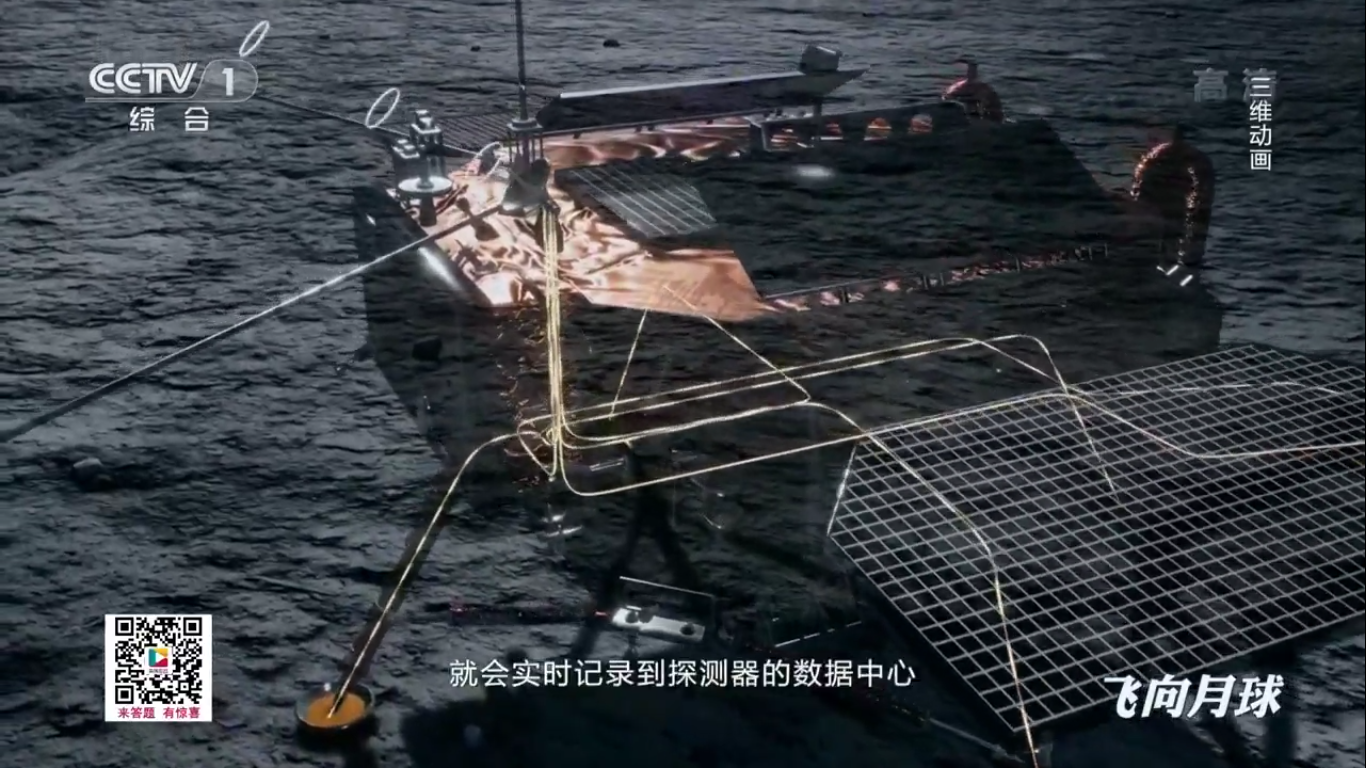


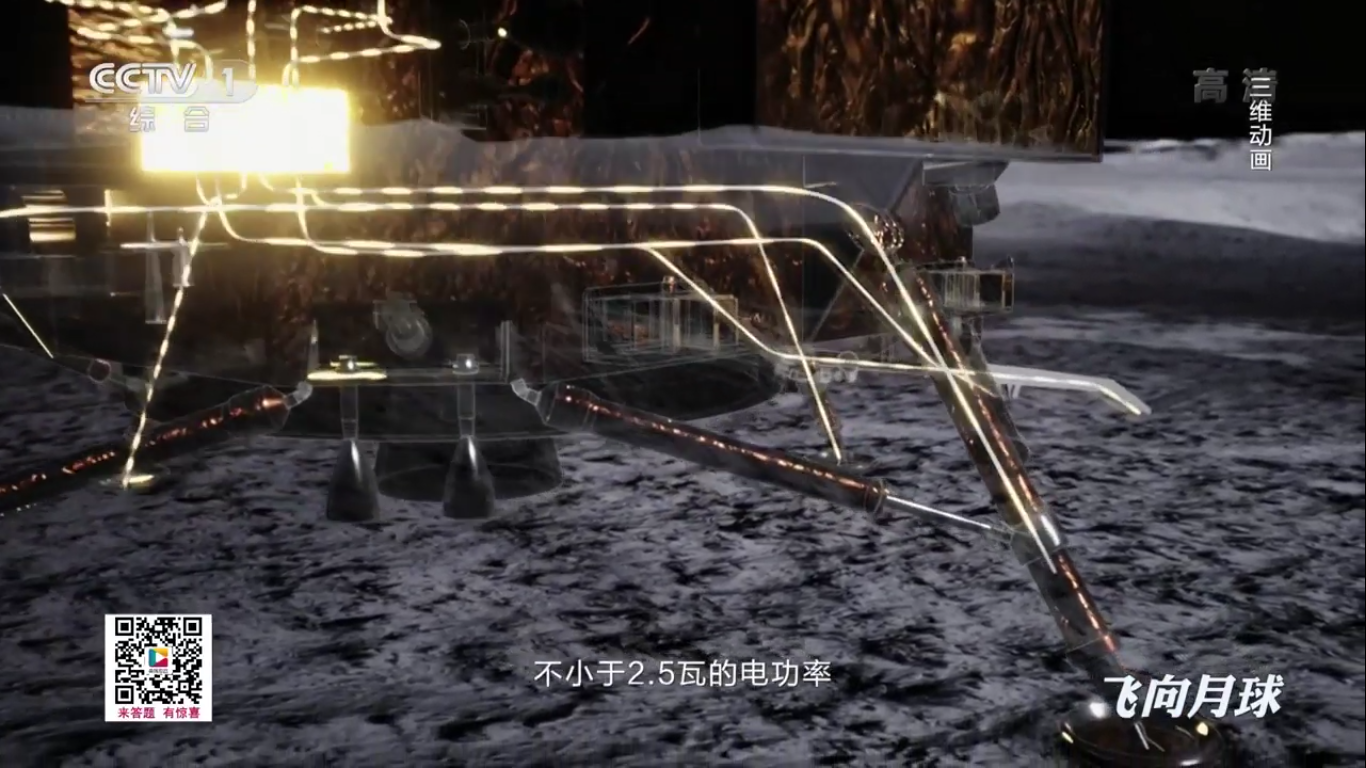
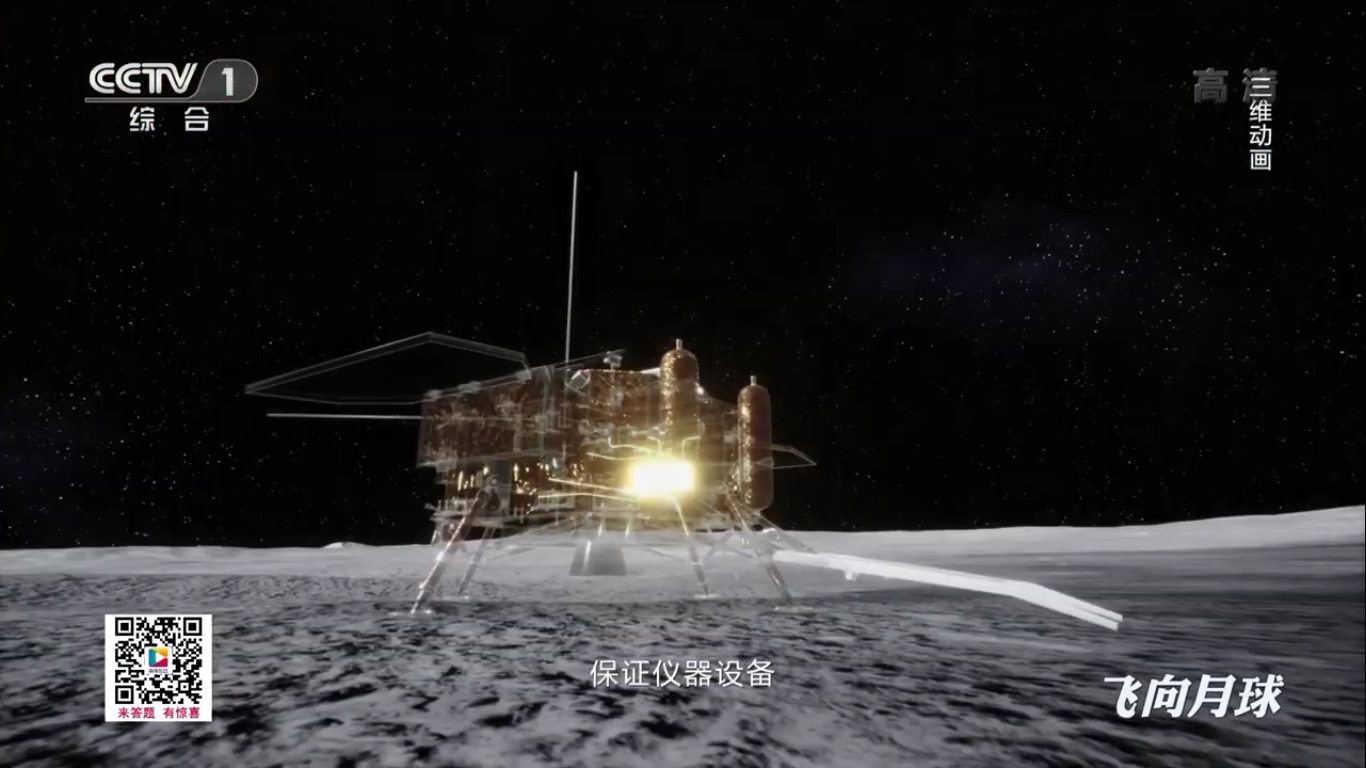
Receiving and processing data at the space communications center:
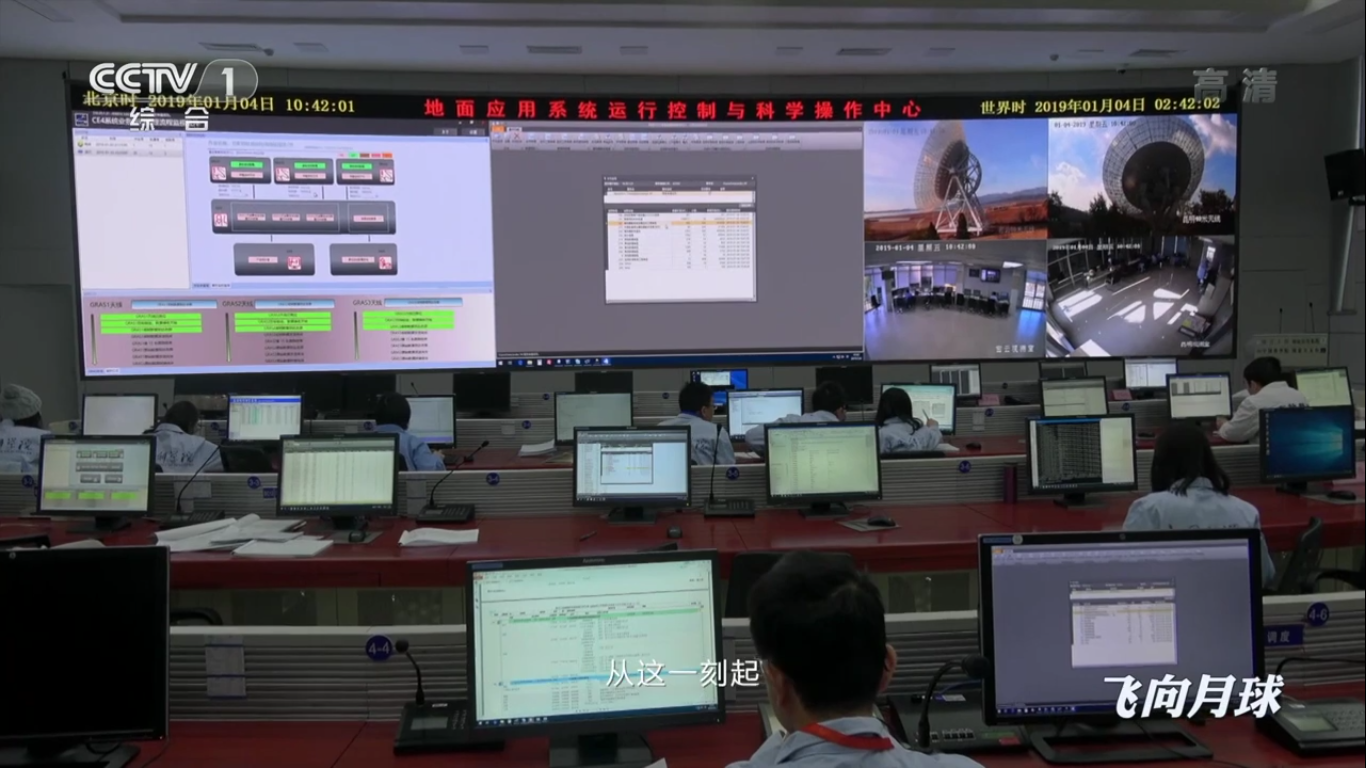
The Yuytu-2 rover operators rely on their virtual surface maps:


Photos of the landing site of the Chang'e-4 modules made by the LRO (NASA) lunar orbital probe :


With the help of a special radar (the outer part of which is two antenna antennas and a flat antenna under the bottom), the rays of which penetrate under the surface of the moon (LPR - Lunar Penetrating Radar), the "Yuuta-2" rover creates a three-dimensional map of the underground part of the lunar surface:
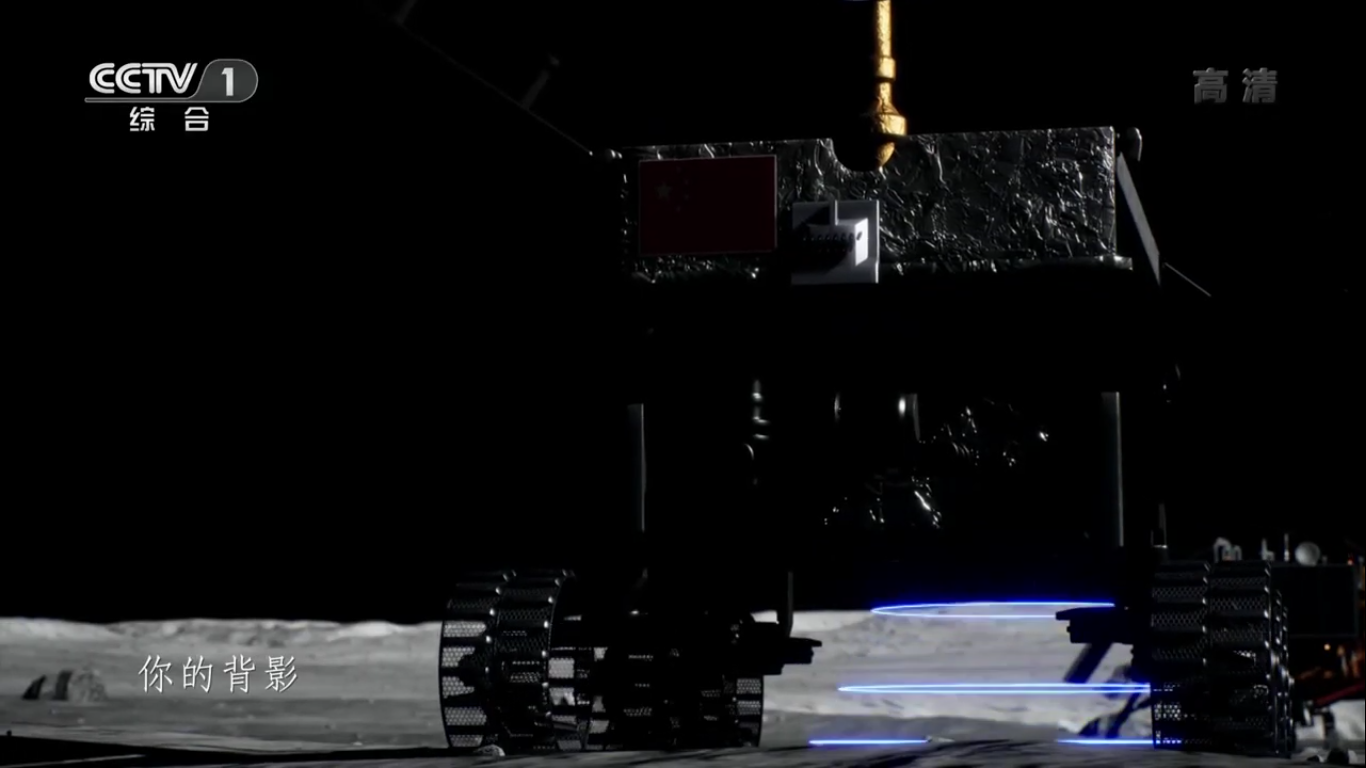
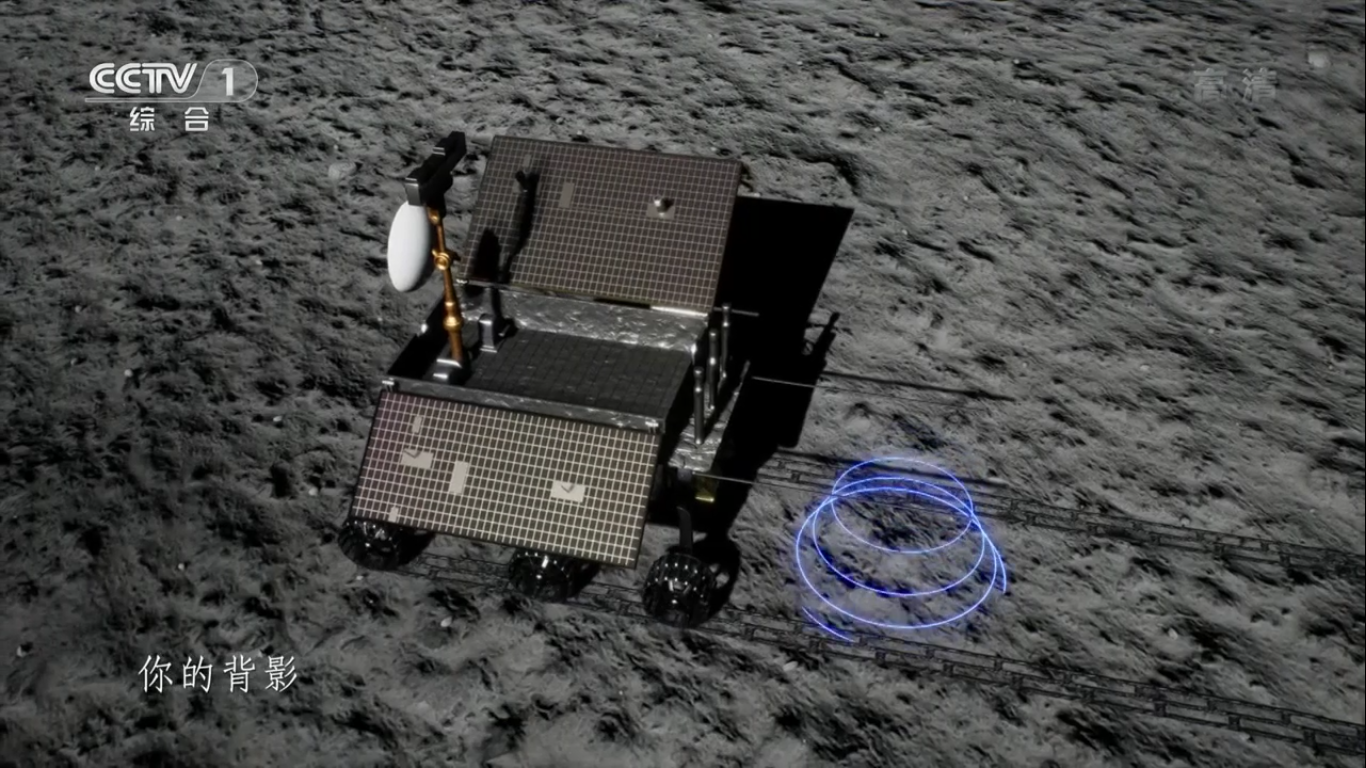

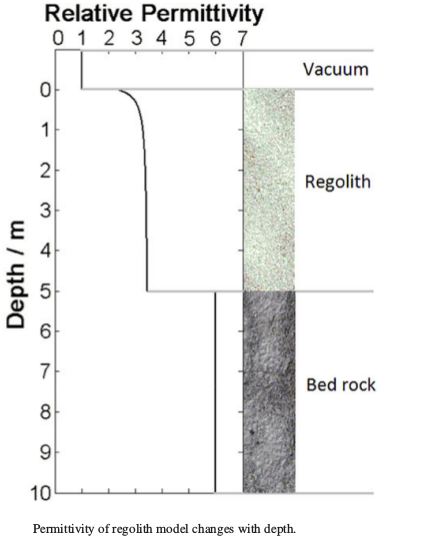

Lunar Penetrating Radar (LPR) Features:
Channel 1:
- Transmitter Voltage - 1000 V (error <5%)
- Transmitter Pulse frequency - 0.5, 1, 2 kHz
- Transmitter Pulse time of arrival - <= 5 ns
- Receiver frequency - 10-175 MHz
- Receiver input dynamic range -> 90 dB
- Antenna central frequency - 60 MHz
- Antenna bandwidth -> = 40 MHz
- Standing wave function - <= 3
- Maximum detection depth -> = 100 m
- Depth resolution - 1 m
Channel 2:
- Transmitter Voltage -> = 400 V (error <5%)
- Transmitter Pulse frequency - 5, 10, 20 kHz
- Transmitter Pulse time of arrival - <= 1 ns
- Receiver frequency - 10-1000 MHz
- Receiver input dynamic range -> 90 dB
- Antenna central frequency - 500 MHz
- Antenna bandwidth -> = 450 MHz
- Standing wave function - <= 2.5
- Maximum detection depth -> = 30 m
- Depth resolution - <= 30 cm
The Lunar Penetrating Radar (LPR) installed on the “Yuytu-2” rover is similar in its design to the radar installed on the first “Yuytu” rover of the “Chang'e-3” mission.
The data obtained from the LPR radar is analyzed and compiled into graphs on which the geological composition and characteristics of the lunar surface at the landing area can be traced:

Scientists and engineers at the flight control center of the Chinese Academy of Space Technology are trying to make the most of the time on the fifth lunar day (two earth weeks) to conduct research and obtain data from the Chang'e-4 landing module and the Yuuta-2 rover.
In more detail about the scientific equipment of the landing module "Chang'e-4" and the rover "Yuytu-2" you can read here:
Mission "Chang'e-4" - the third lunar day. Rover "Yuytu-2" in search of ... stones
Mission "Chang'e-4" - scientific equipment on the landing module and the satellite transponder
By the way, on April 24, 2019 (on the day of the Chinese cosmonautics) a children's art competition was organized by the Chinese Aerospace Society, dedicated to the conquest of space and the moon.
The works of children are great.
Guo Zhichen - Exploring the Universe in the Future

Han Jiaxin - We went into space
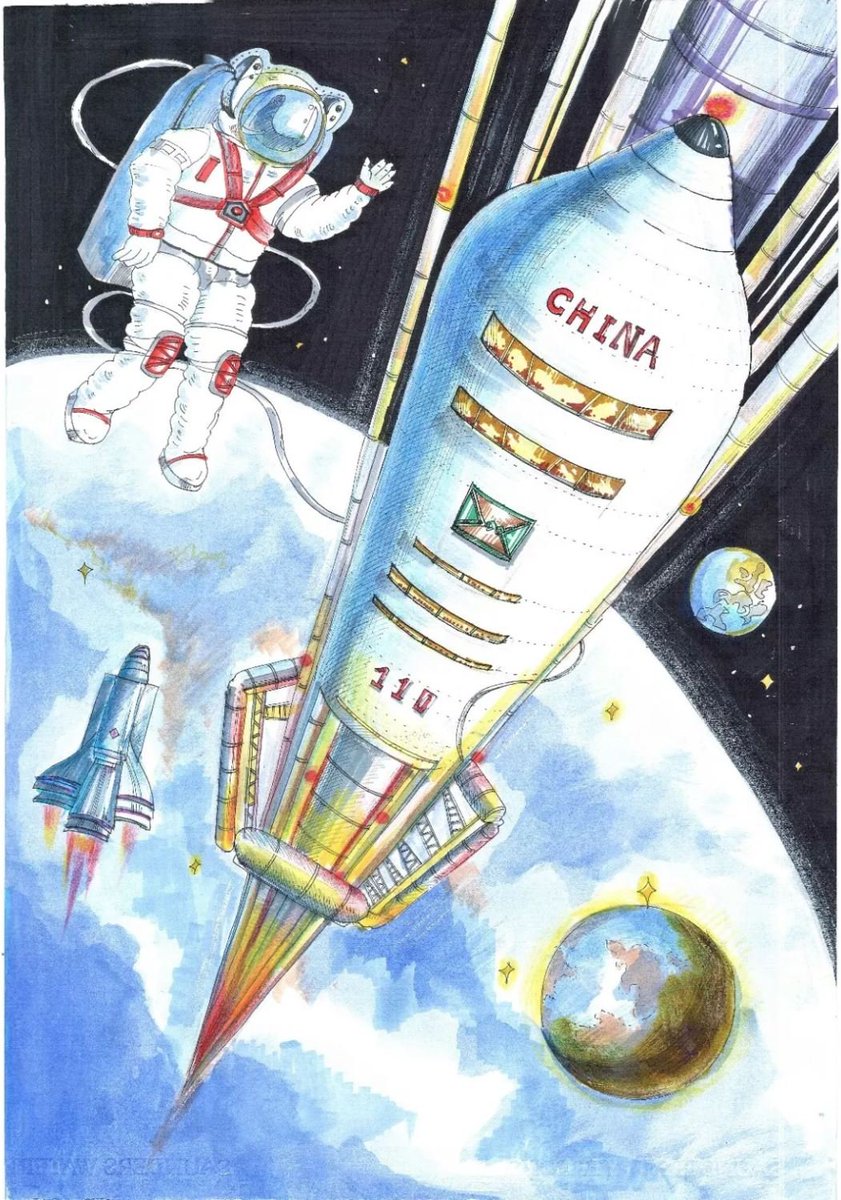
Deng Xianue - Garden outside the universe
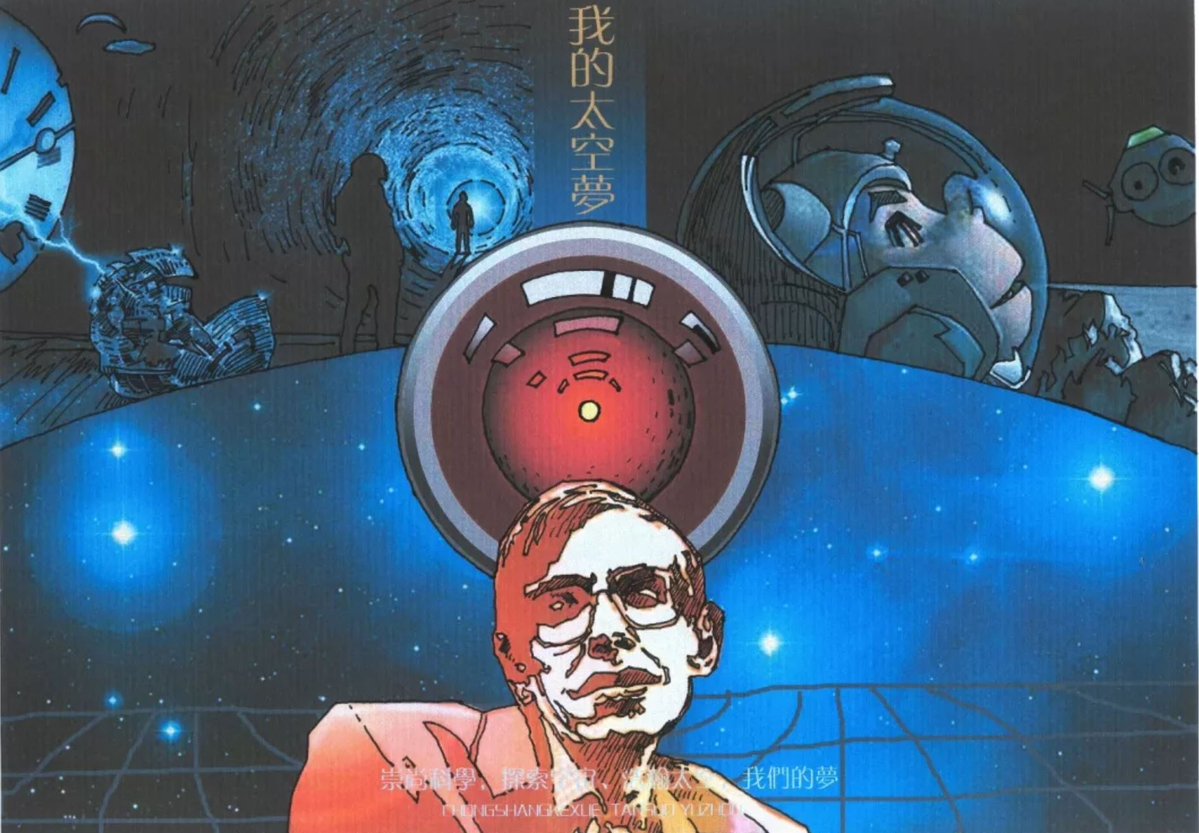
Tian Xian - Space Station of the Future
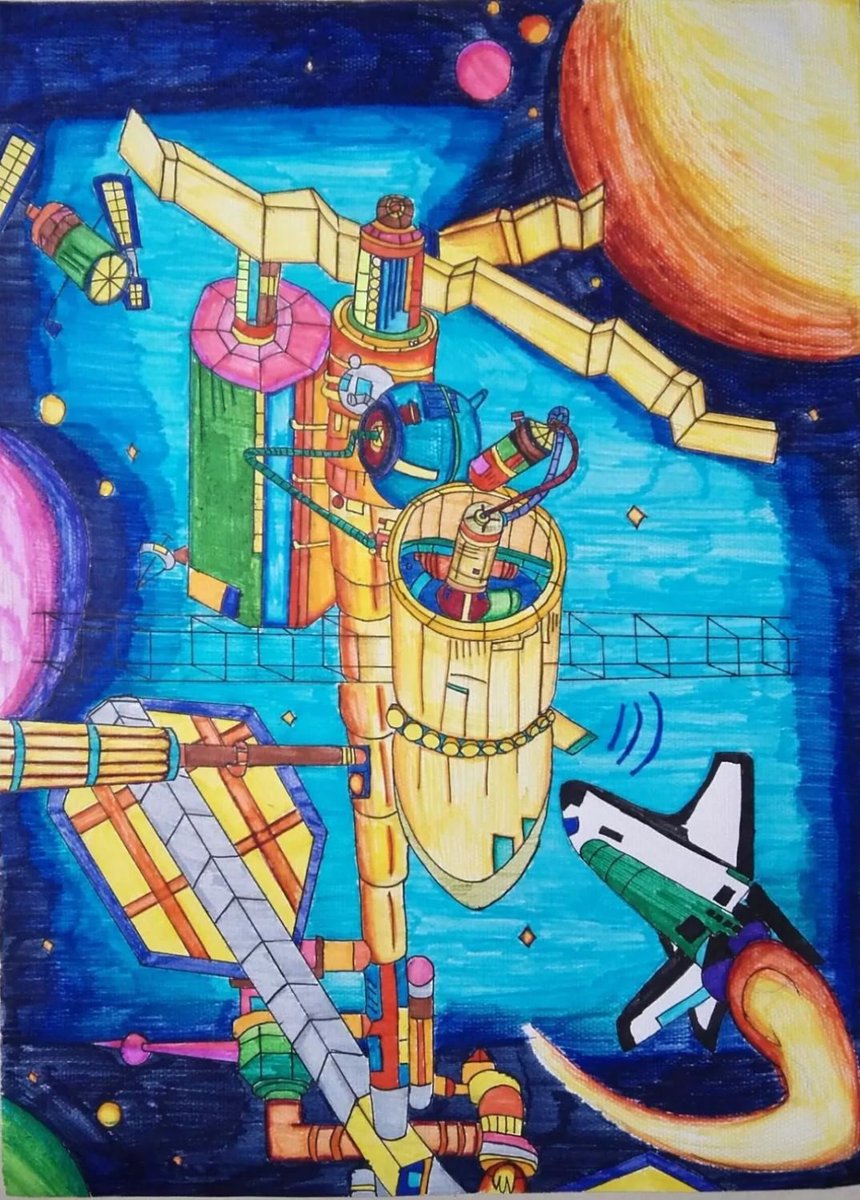
Zheng Yufeng - Let's color the space together

Fan Yongxin - Power Conversion Station
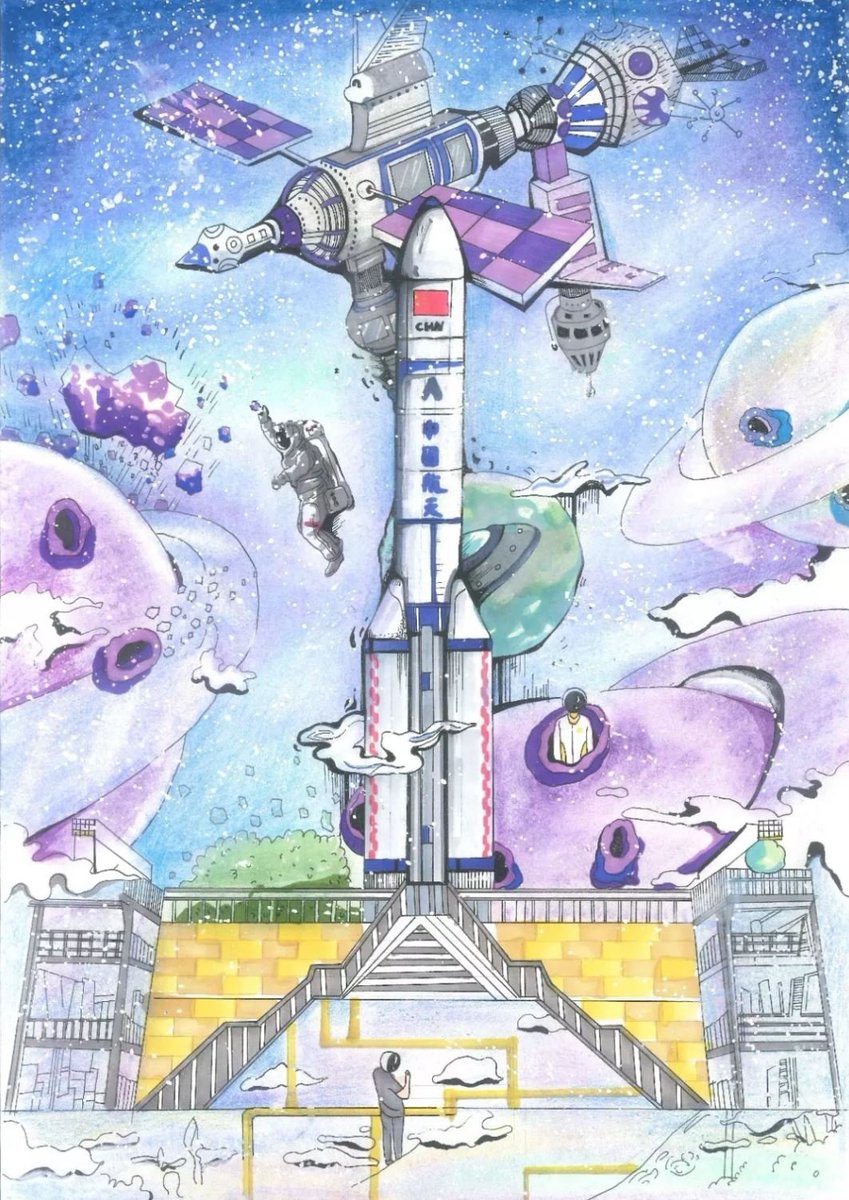
Lee Mening - Global Solar System

Xu Zhiyun - Researchers
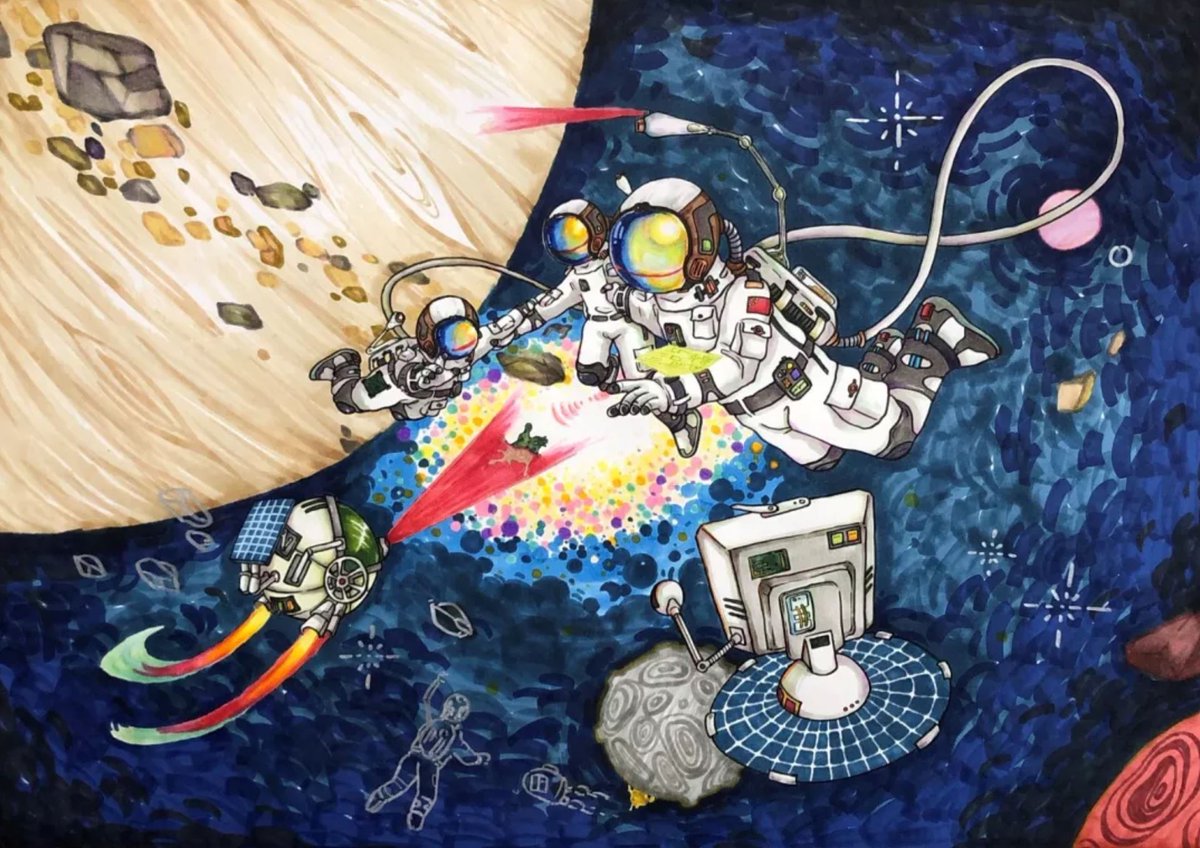
Yang Haowan - Space Base
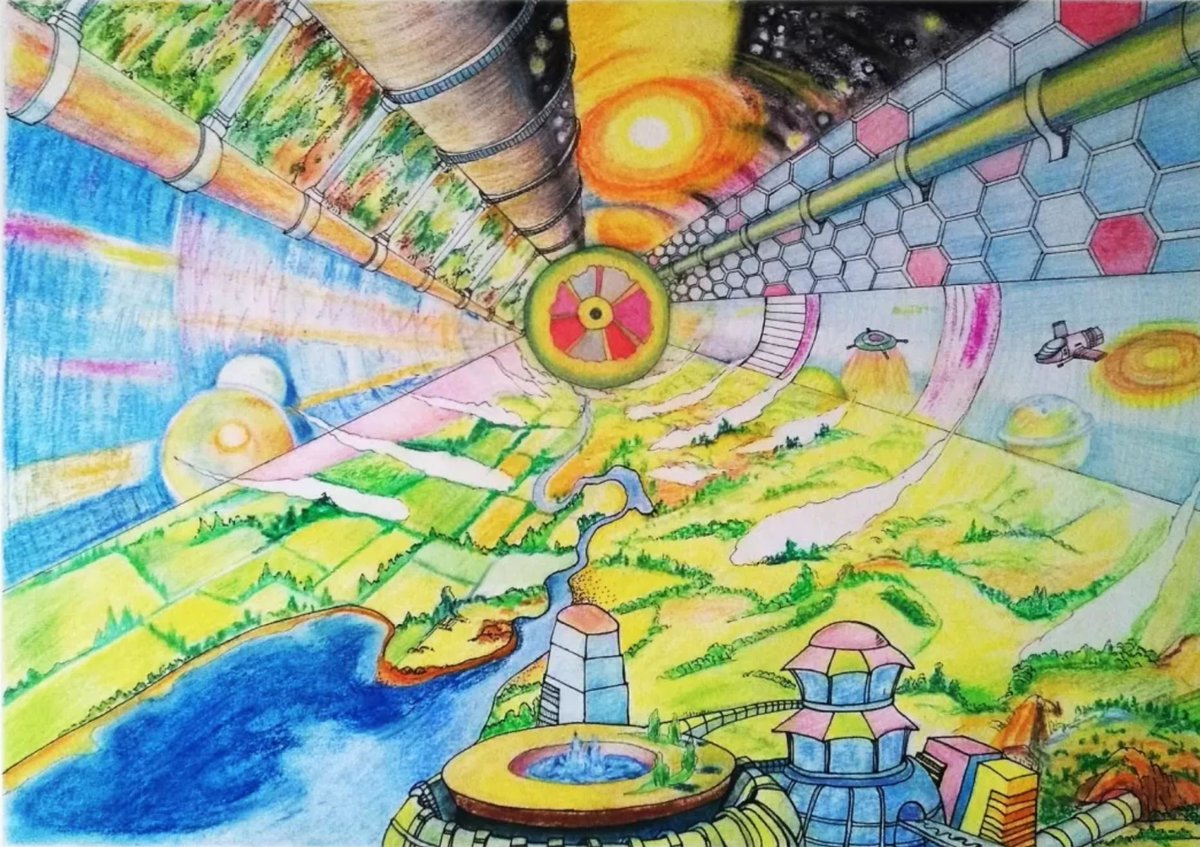
Yang Jingru - Vacuum City

Zhuo Siyuan - A floating spacecraft

Zhou Yinho-Mora No.1451

I especially liked these works:
Wei Wei - My heart is full of stars

Dai Jiai - Dreaming of space

Liu Ruiyang - My music in space

Source: https://habr.com/ru/post/450252/
All Articles